

“It was a hugely challenging task, against a backdrop of distrust” p74


Takes








FITNESS, HEALTH, WELLNESS GLOBAL MEDIA PARTNER ISSUE 2 2024 @ HCMmag HCMmag.com
Driving for 10k Orangetheory locations p38 SIGN UP FREE
Jennifer Maanavi Physique 57 is poised for international growth p14
Lotte Berk’s daughter reveals her new foundation p22
ON THE COVER
Esther
Fairfax Dave Long
KANTAR
Lessons
a deep dive into seven top operators p60
Life
Huw Edwards
Skillup™
Patented design
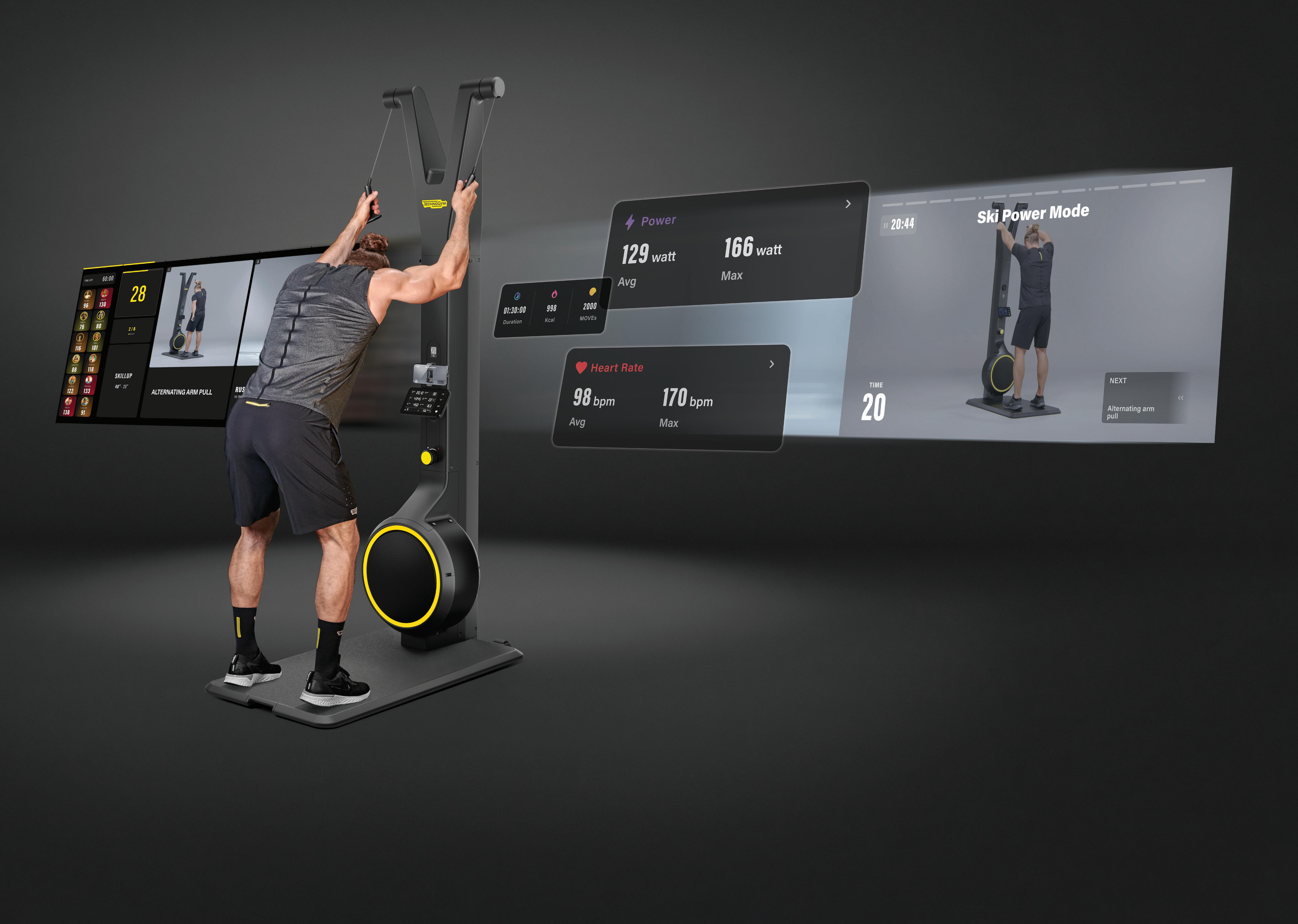
The only upper body ergometer that features the unique Multidrive Technology™ for switching between cardio and power training modes in one workout. In addition to aerobic workout, the magnetic resistance increases intensity for power-building exercises. Superior results faster.

THE MOST INTENSE UPPER BODY CARDIO WORKOUT Discover more: technogym.com/hcm PLAY VIDEO











Unveils brand-new hub for innovative Research and Development at headquarters
Pulse Fitness is thrilled to announce the grand opening of its state-of-theart showroom gym at the company’s headquarters this March.
Located at the heart of the company’s headquarters in Congleton, this space will now serve as a dedicated space for ongoing research and development. The showroom gym will function as a live testing ground, allowing Pulse Fitness to gather valuable insights and feedback from
users. This customer-centric approach will enable the company to continuously enhance and refine its machines based on real-world usage and user preferences.







Leading British fitness equipment manufacturer Pulse Fitness is transforming the company’s headquarters into a dynamic hub for both potential buyers and groundbreaking research and development with its new state-of-the-art showroom.
Dedicated to shifting the approach in product evolution, the space will allow the Pulse Fitness team to gather in-depth insights into user experiences and preferences. Pulse Fitness plans to implement enhancements and modifications that resonate with the diverse user base.
If you are interested in viewing this new research hub, please register your interest at www.pulsefitness.com/contact
The centre will provide a hands-on experience for potential buyers to explore and test the latest cutting-edge machines in a fully equipped gym environment. Visitors will have the opportunity to witness firsthand the innovation and quality that define Pulse Fitness products. In addition to its role as a hub for innovation, this space will operate as a fully functional commercial gym.
Pulse Fitness, Radnor Pk, Greenfield Rd, Congleton, Cheshire CW12 4TW
VIE
W VIDEO

EA chance to shine
New laws are about to come into force that will oblige health club operators to o er consumers better membership terms. It will be disruptive, but tackled well, will change the sector for the better
ven a quick browse through customer ratings on platforms such as Trustpilot make it clear that all is not well in the land of health club contracts, with consumer complaints centred around the terms and most specifically issues that arise when ending them.
Of course this doesn’t apply to all operators, but those who sail close to the wind in imposing onerous terms on consumers cause real harm to the reputation of the sector.
I’ve been told on good authority that some make more income from financial penalties associated with membership severances than they do from the actual memberships and this just can’t be right.
Now the UK government is passing legislation to give greater power to consumers when it comes to health club membership contracts in the form of The Digital Markets, Competition and Consumers Bill which has been designed to clamp down on subscription traps, fake reviews and drip pricing. The bill is expected to become law in Q2 this year and be fully implemented by 2025.
The legislation will grant the UK’s Competitions and Markets Authority stronger powers to tackle businesses that breach consumer rights in a variety of ways.
Operators will be required to give clear information to consumers about contract terms at the point of signing, rather than hiding it in small print, while making it as easy for consumers to get out of contracts as it is for them to sign up in the first place.
There’ll be a mandatory 14-day cooling off period at the start of every contract and a further 14-days if prices change and at the end of each contract term, with the customer pro-actively notified and given sufficient warning.
In some cases this will mean a 14-day cooling off period will need to be given at the end of every year.
Trade body UK Active is representing the sector in negotiations with the government to make sure the legislation doesn’t create an ‘undue burden’, but it’s clear those without contracts, such as The Gym Group and PureGym, will be in a stronger position, while

This is an opportunity for us to shine in the eyes of consumers by going above and beyond in creating excellent contracts
operators with complex contracts will need to overhaul their systems to accommodate the new framework.
Ultimately, whatever the law compels us to do, this is an opportunity for the sector to shine in the eyes of consumers by going above and beyond in creating an excellent contract environment. This will be especially felt by members who’ve had a difficult time with a contract, while also giving us the opportunity as an industry to heal rifts with people who feel they’ve been unfairly treated at some point. As we work to grow the community of consumers who are engaged with the sector, this has never been more important.
Liz Terry, editor lizterry@leisuremedia.com
5 ©Cybertrek 2024 Issue 2 2024 EDITOR’S LETTER
+44 (0)1462 431385 WWW.HCM mag .COM HCM@LEISUREMEDIA.COM WWW.LEISURESUBS.COM
New laws will change health club contract law
PHOTO: PURE GYM/MARTIN BRENT
CONTENTS
Uniting the world of fitness


05 Editor’s letter
New legislation will change health club membership contracts, says Liz Terry
12 Letters
Liz Fletcher of Sport for Confidence on the huge potential of health collaboration
14 HCM people
Jennifer Maanavi
The founder of Physique 57 talks about the global development of her barre-based wellness and lifestyle brand
22 HCM people
Esther Fairfax
The Lotte Berk Foundation founder on continuing her mother’s legacy
28 HCM news
Equinox raises US$1.8bn for refinance and growth, IHRSA changes name, and Gymshark focuses on ‘fitness experiences’
38 Interview
Dave Long
As franchise business Orangetheory Fitness merges with Self Esteem Brands, its CEO tells Kate Cracknell about plans to expand to 10,000 units globally
52 Talking Point Leases
Is now a golden moment for health and fitness operators to secure favourable leases as desirable anchor tenants? Kath Hudson asks the experts
60 Insights Brand Power
Which health and fitness operators have the greatest brand awareness among consumers? Liz Terry reports on the latest insights from Kantar
74 Life Lessons
Hugh Edwards
The CEO of UK Active reflects on working on London 2012 and what he learned in the face of initial hostility
78 At your service
Skipping equipment services costs fitness operators in the long run. Providers tell Steph Eaves why such management is essential
6 Issue 2 2024 ©Cybertrek 2024 ISSUE 2 2024 N o 323
HCMmag.com
PHOTO: THIRD SPACE/MARK SCOTT
52 The lowdown on leases

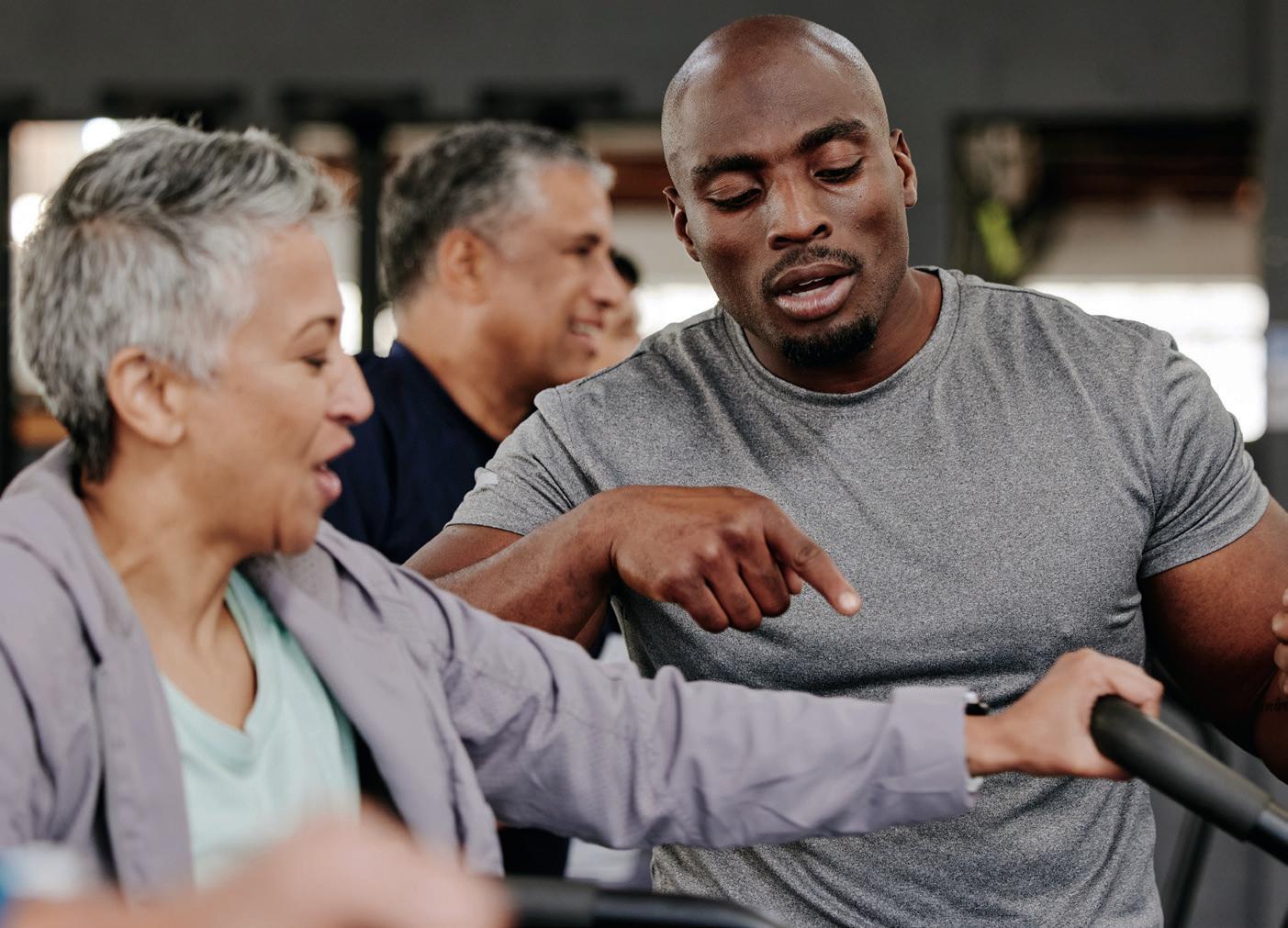
88 Can we skill-up for the pivot to wellness?
82 Well at work
As absenteeism continues to take a huge economic toll, with musculoskeletal problems and poor mental health the biggest issues, can workplace wellness really make a difference, asks Kath Hudson?
88 Pivot to wellbeing
While there’s much talk of fitness and healthcare working closer together, research shows that there are still many barriers to overcome
102 Searching questions
Paul Bedford discusses the ‘double-edged sword’ of the growing trend for strength training, and his ambitions for the health and fitness sector
110 Product innovations
Steph Eaves rounds up the latest health, fitness and wellness kit from leading suppliers
112 Reader services HCM Directory






If you’re in procurement, the HCM directory is part of a network of resources designed for you that includes www.HCMmag.com/CompanyProfiles
114 Research The power of HIIT
A new study from researchers at Yale University shows that high intensity interval training (HIIT) can reverse nerve damage caused by Parkinson’s


7 ©Cybertrek 2024 Issue 2 2024
102 Paul Bedford
60 Kantar’s battle of the fitness brands
14 Jennifer Maanavi, Physique 57
PHOTO: YURI A/SHUTTERSTOCK
PHOTO: ORANGETHEORY
PHOTO: PHYSIQUE 57
PHOTO: MARTIN BRENT
PHOTO: RETENTION GURU
38 Dave Long, co-founder, Orangetheory
MEET THE TEAM
theteam@leisuremedia.com

Editor
Liz Terry
+44 (0)1462 431385

Managing editor
Steph Eaves
+44 (0)1462 431385

Editor-at-large
Magali Robathan
+44 (0)1462 431385

Publisher
Jan Williams
+44 (0)1462 471909

Head of news
Kath Hudson
+44 (0)1462 431385

Assistant editor
Megan Whitby
+44 (0)1462 471906
Email us:
Customer service
+44 (0)1462 471901
Advertising
+44 (0)1462 431385
Subscriptions
+44 (0)1462 471910
Circulation
+44 (0)1462 471932
Finance
+44 (0)1462 471930
Credit control
+44 (0)1462 733477
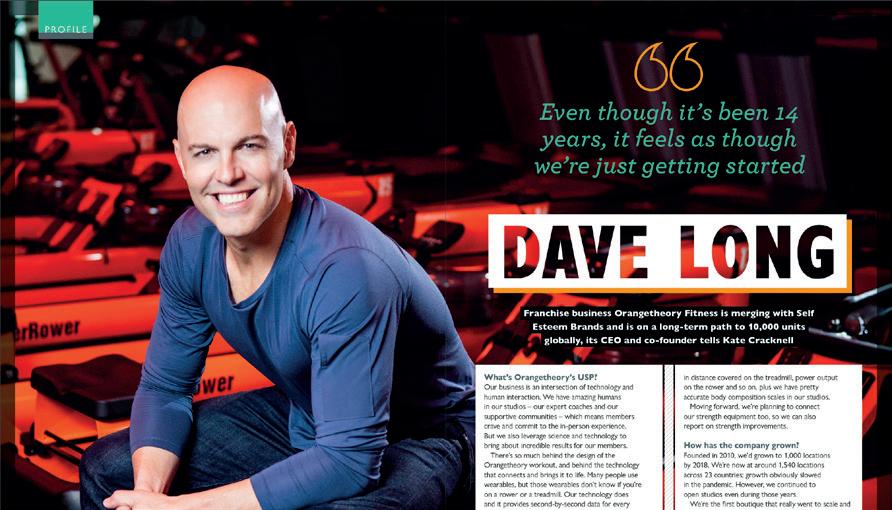


Choose how you read
HCM digital
Read free online and enjoy extra links and searchability www.HCMmag.com/digital
Print
HCM magazine is available in print from www.leisuresubs.com
HCM PDF
A PDF edition is available to read offline at: www.HCMmag.com/pdf

Other resources from
Fit Tech magazine
www.fittechglobal.com
www.fittechglobal.com/archive
HCM Handbook
www.HCMhandbook.com
www.HCMhandbook.com/pdf
HCM Online library
www.HCMmag.com/archive
HCM Ezine & Instant Alerts
www.leisuremedia.com/subscribe Leisure Opportunites jobs & news
www.leisureopportunities.co.uk
Buyer Search Engine
www.fitness-kit.net
To subscribe to HCM in print (Health Club Management): log on to www.leisuresubs.com , email subs@leisuremedia.com or call +44 (0)1462 471930.
Annual subscriptions: UK £45, Europe £57, rest of world £80, students (UK) £22.
Style: HCM follows an editorial house style which precludes the use of marketing devices in body text and headlines, eg: capitalised or part capitalised names and registered trademarks. CamelCase is allowed. Contact the editor for more details – lizterry@leisuremedia.com.
Copyright details: HCM (Health Club Management) is published 12 times a year by Leisure Media, PO Box 424, Hitchin, SG5 9GF, UK. The views expressed in this publication are those of the authors and do not necessarily represent those of the publisher. All rights reserved. No part of this publication may be reproduced, stored in a retrieval system or transmitted in any form or by means, electronic, mechanical, photocopying, recorded or otherwise, without the prior permission of the copyright holder, Cybertrek Ltd 2024.
Print and distribution Printed by The Manson Group Ltd. Distributed by Royal Mail Group Ltd and Whistl Ltd in the UK and Total Mail Ltd globally.
©Cybertrek Ltd 2024 ISSN 1361-3510 (print) / 2397-2351 (online)
8 Issue 2 2024 ©Cybertrek 2024
PUBLIC AFFAIRS MEDIA PARTNER GLOBAL MEDIA PARTNER
www.HCMmag.com Issue 2 2024 Volume 30 Number 323
24 OCTOBER 2024 www.HCMmag.com/summit SAVE THE DATE LONDON
Conference Centre
Queen Elizabeth II


lesmills.com/uk/limited-edition WANT TO LEARN MORE?


ARE YOU READY TO GIVE YOUR MEMBERS THE FUTURE OF STRENGTH? Demand for strength workouts is insatiable. It’s Gen Z’s favourite way to workout1 and is the most-wanted training program for all age groups2. That’s why we’re injecting variety and challenge into the category with LES MILLS FUNCTIONAL STRENGTH™ Help your members take their training to the next level, with a full-body workout combining heavy compound lifting and tempo-focused supersets. Inspired by sports conditioning and performance training, FUNCTIONAL STRENGTH offers an entirely new way to strength train that builds power and improves athleticism and stability. 1 Civic Science, 2Mindbody Classpass Lookback Report (2022)
Write to reply
Fuel the debate about issues and opportunities across the industry. We’d love to hear from you –letters@leisuremedia.com
If physical activity is delivered in collaboration with health professionals it has the power to unlock huge health potential at a fraction of the cost of clinical interventions
Liz Fletcher Sport for Confidence
I read Martyn Allison’s comments on your story ‘Fixing the social care crisis’ (HCM newsfeed, January 09, 2024) with interest. He believes dramatic change is needed to the delivery of adult social care if we are to reduce the burden on the NHS, while freeing up the resources we need to enable physical activity.
I whole-heartedly support his belief that we need to reform the way we approach adult social care and that success lies in place-based collaborative working between organisations across public and private sectors.
Physical activity can play a central role in delivering the solution and in Essex we’ve already evidenced the success a collaborative approach can achieve when it places physical activity at the heart of delivery.
In 2022, Sport For Confidence formed a partnership with Adult
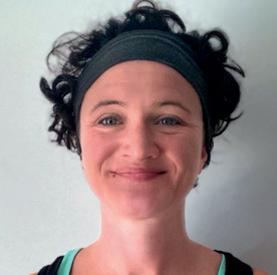
Social Care at Essex County Council and Active Essex to deliver a two-year Local Delivery Pilot to evidence the impact of a whole system approach on adult social care and health.
In addition to the stakeholders, we also enrolled the support of partners across adult social care, the NHS, Essex County Council, Provider Quality Innovation Team and care homes.
Evidence from the University of Essex found the positive impact of embedding physical activity into a whole system approach to adult health and social care could deliver £58.72 of social value for every pound invested.
Powerful outcomes
Participants needed less day care, less formal/informal support and GP appointments and they made less 999 calls, and hospital visits, equating to a saving of £365.23 per participant, per year, while also increasing their physical activity levels.

Based on the success of this pilot, the project was awarded funding for 12 months to March 2024. The pilot also prompted Essex County Council to issue a ‘Reconnect –early help and prevention’ tender for the commission of place-based, therapeutic interventions.
These will support adults living with learning needs and/or disabilities and long-term health conditions, to be physically active in their local area. The £1.3 million fund will support a programme for a three-year period with an option to extend by two.
This is a huge step and marks an encouraging and significant stepchange in the traditional delivery model, while showcasing the ambition of the council to look for a new solution – plugging into established community-based resources and expertise, providing support to struggling NHS services and delivering positive health outcomes, while also addressing inequalities.
12 Issue 2 2024 ©Cybertrek 2024 LETTERS
Liz Fletcher

This programme provides a clear pathway from a health service to a leisure centre
Prevention and integration
In Nottingham, we’re consulting with a collective which includes Nottingham Healthcare NHS Trust (IDD Community MDT Newark and Holly Trinity Lodge Day Centre), YMCA Newark and Boccia England to hardwire physical activity into health and social care.
This programme provides a clear pathway from a health service to a leisure centre which enables participants with intellectual and developmental disability to create, access, participate in and sustain physical activity opportunities.
Participants are directed by the NHS to their nearby YMCA Community and Activity Village, where they can
take part in Boccia sessions tailored to their needs on a weekly basis.
These sessions are conducted by the YMCA team and designed in collaboration with the NHS Newark team. Healthcare professionals, such as occupational therapists, speech therapists, and physiotherapists, adapt their clinical expertise to the community and activity-oriented setting. They closely collaborate with coaches to make personalised adjustments, ensuring that everyone can meaningfully participate.
Sport for Confidence has also recently concluded a similar project in partnership with Golf in Society, showcasing positive evaluation results by utilising a golf club as a health hub
for individuals with cognitive decline.
These are examples of how we’re facilitating a whole-system approach.
If physical activity is tailored to achieve specific outcomes, delivered by sports coaches in collaboration with health professionals and hosted in an inclusive, accessible setting it has the power to unlock huge health potential at a fraction of the cost of long-term clinical interventions.
We’re proving this through our model. The evidence exists. We and the wider sector now need to focus on working with health and social care to deliver a system that is not only effective, but also commercially sustainable. l www.sportforconfidence.com
13 ©Cybertrek 2024 Issue 2 2024
The wider sector needs to focus on working with health and social care
PHOTO: EDWARD STARR PHOTOGRAPHER

PHOTO: PHYSIQUE 57
Maanavi comes from a fi nance background and has an MBA
HCM people
Our ‘why?’ is to improve the lives of our clients, not to make them feel defeated
Jennifer Maanavi
Founder, Physique 57
Tell us about the business
Founded in 2006 and headquartered in New York City, Physique 57 is a lifestyle brand built around exercise, results, body positivity and a supportive community.
With boutique studios in the US, Dubai, Bangkok and Mumbai, as well as a virtual studio and an on-demand platform, we offer barre-based classes.
The company trades in a number of categories, including via club-in-club licenses (Drop Fitness in the US), Licenses (Dubai, Thailand and India) and franchises (currently in the US), as well as having corporate-owned locations in New York City.
The on-demand platform offers 500 barre videos, with new content added each week.
How did it all begin?
Physique 57 was born out of necessity! The first barre studio in the world was The Lotte Berk Method (LBM). This revolutionary concept came to New York in 1971 when an American licensee brought the method to a prestigious townhouse studio on Madison Avenue. It was incredibly successful from 1971 until 2005, when it closed very suddenly.
Tanya Becker, a long-time, top-rated LBM instructor and I saw this as an opportunity. We set out to modernise the method, develop barre instructors and a luxurious client experience and build a supportive, intimate community – which was rare in the fitness industry at the time.
What were your goals?
Our mandate was to make challenging group exercise fun and addictive for busy women. We worked with the Exercise Physiology department at Adelphi University in New York to test the
method and prove that results were achieved in as little as eight workouts, as these quick results were vital to our success with busy New Yorkers.
Our team and their scientists were amazed with the physical outcomes of our programmes.
What had you done previously?
I came from a finance background with an MBA and Tanya had a background in professional dance, choreography and barre. Together we became pioneers in the boutique fitness industry.
Our first studio was tucked away on the eighth floor of an office building in midtown Manhattan. After being open for just a few months, our classes had waitlists and our story became a national phenomenon. Women as well known as Sarah Jessica Parker and Kelly Ripa were regulars.
Why the name?
Two reasons. The first studio was located on 57th Street and 5th Avenue in NYC – we had a studio there for 15 years until the pandemic forced a permanent shutdown – and secondly, the class is 57 minutes long.
Physique 57 is poised for synergystic collaborations with new partners around the world
15 ©Cybertrek 2024 Issue 2 2024

Tell us about the workouts
Each studio offers around 40 classes a week in six formats.
The signature classes integrate cardio and strength for fierce, high-intensity, low-impact workouts with sprints, recovery and flexibility exercises to maximise sculpting and toning.
Our proprietary techniques accelerate lean muscle building and increase metabolic rate.
We have clients aged from 18 to 88 and each format delivers low-impact, safe exercises customised for the female body for injury-free strength training.
We offer beginner barre classes so clients can learn the science of our method and refine their form, as well as intermediate and advanced classes to level-up results with creative sequences.
Additionally, we offer a Pilates-inspired sculpting format on the mat to enhance posture, coordination and tone.
We also created a back body-focused class to focus on glutes, triceps and the posterior chain.
Each is developed by our master training team, led by co-founder Tanya and client experience officer, Alicia Weihl. Combined they have 45 years’ experience teaching and developing barre programmes.
Could you explain your digital offering?
Physique 57 on-demand was born from our DVD business which was quite successful – we sold DVDs in 50 US states and had a long run on QVC.
Once DVD sales began to flatten, we transitioned to digital in 2011, long before the pandemic.
For US$29.99/month, subscribers get 500+ Barre Workouts in a variety of formats, including beginner to advanced barre, HIIT, Pilates, and Dance Cardio.
The platform has a very high retention rate and our customer base spans 60+ countries and most of the US.

What’s your approach to hiring and training?
We believe workouts should never feel like a chore and this conviction led us to create a comprehensive instructor selection and training programme.
We seek dynamic, charismatic and skilled dance and fitness professionals who are passionate about delivering a unique and uplifting experience – online, or in-studio. Our focus is not only on what our instructors teach, but also on how they teach. We prioritise training them in the art of teaching, ensuring a holistic approach to clients’ individual fitness journeys.
Our trainers offer tailored guidance to enhance posture and body alignment and inspire clients to operate at peak capacity and we encourage clients to strive for optimal results while enjoying a rewarding,
16 Issue 2 2024 ©Cybertrek 2024
HCM PEOPLE
Proprietary techniques accelerate lean muscle building and increase metabolic rate
PHOTO: PHYSIQUE 57
PHOTO: PHYSIQUE 57
We firmly believe that workouts should never feel like a chore

empowering workout that’s fun and memorable. Our emphasis on personalised attention remains a priority. We aim to deliver injury-free strength training classes that tone and sculpt each muscle group with enough cardio to improve heart health. I don’t believe there’s any need to supplement barre workouts with cardio. I’ve done barre exclusively for 25 years and my resting heartbeat is between 55 and 60 bpm.
How do you adapt for your global locations?
We refine our method regularly to accommodate the needs of clients in all four countries where we trade. We’ve been a first-mover in most of our international markets, so have created formats for clients of varying fitness levels.
It takes patience, creativity and experience to meet clients where they are on their fitness journey and deliver a results-oriented programme that makes them feel successful once the class is over.
The Physique 57 ‘Why?’ is to improve the lives of our clients, not to make them feel defeated. We use our on-demand platform to trial new formats and exercise programmes and then bring the most popular into the studios. Workouts such as crunchless core, ballet boot camp and prenatal programme performed well on-demand, for example.
How important is customisation?
It’s critical to our success. We’ve established the optimal combination of strength and interval training
17 ©Cybertrek 2024 Issue 2 2024
Physique 57 offers an optimal combination of strength and interval training
Physique 57 locations
n Corporate-owned: Two in New York City
n Franchises: New Jersey, Philadelphia, Indianapolis and Brooklyn
n Licensed: Bangkok (3) Dubai (1), India (2), plus New York and Bandra, India opening in 2024
n Club-in-club: Drop Fitness New Jersey and Rhythm Fitness Westchester County, (opening Q2 2024)

that includes cardio and stretching in a way that works best for the anatomy of the female body. The result can be complete body transformation.
Combining the elegance of dance with the intensity of strength training, barre workouts have emerged as the favourite choice for many women aspiring to achieve substantial changes in their physique.
Barre targets specific muscle groups that are important to women when it comes to creating definition. The small, controlled movements might seem subtle, but they work wonders in sculpting lean and toned muscles. This isn’t about bulk; it’s about creating a sleek physique that feels strong and elegant.
How did the pandemic impact you?
When the pandemic came to New York City, studios were forced to close for 52 weeks beginning in March 2020. It was a ruinous time for fitness operators.
Predicting that closure would last more than six months, and knowing landlords would require rent payments, I immediately closed three of my four studios, as well as one in Beverly Hills permanently. A few international studios were permanently closed as well.
Fortunately, the on-demand subscriber base swelled to record numbers, so we were able to focus our
efforts on the digital business where we'd already been successful for 11 years. We were fortunate that our digital business was so well established.
As a result of the closures, I made strategic decisions to scale down our operations significantly. This has resulted in a lean organisation with no lingering real estate concerns and minimal debt. I maintain 100 per cent ownership of the company and reduced the staff by 75 per cent. We experienced a very difficult few years.
What changes did you see in the way people use Physique 57?
Client behaviours have changed. Customers seek a sense of community, tailored to their individual definitions. In New York City, there's a decreased emphasis on leisurely in-studio downtime compared to before the pandemic, with frequent changes in schedules due to evolving return-to-work plans.
While expansive seating areas and lounges hold less importance, the demand for exceptional five-star client services and an inviting studio environment has intensified. We continue to embrace a steady influx of Zoom clients. Our Soho classes are fully accessible virtually
18 Issue 2 2024 ©Cybertrek 2024
HCM PEOPLE
PHOTO: PHYSIQUE 57
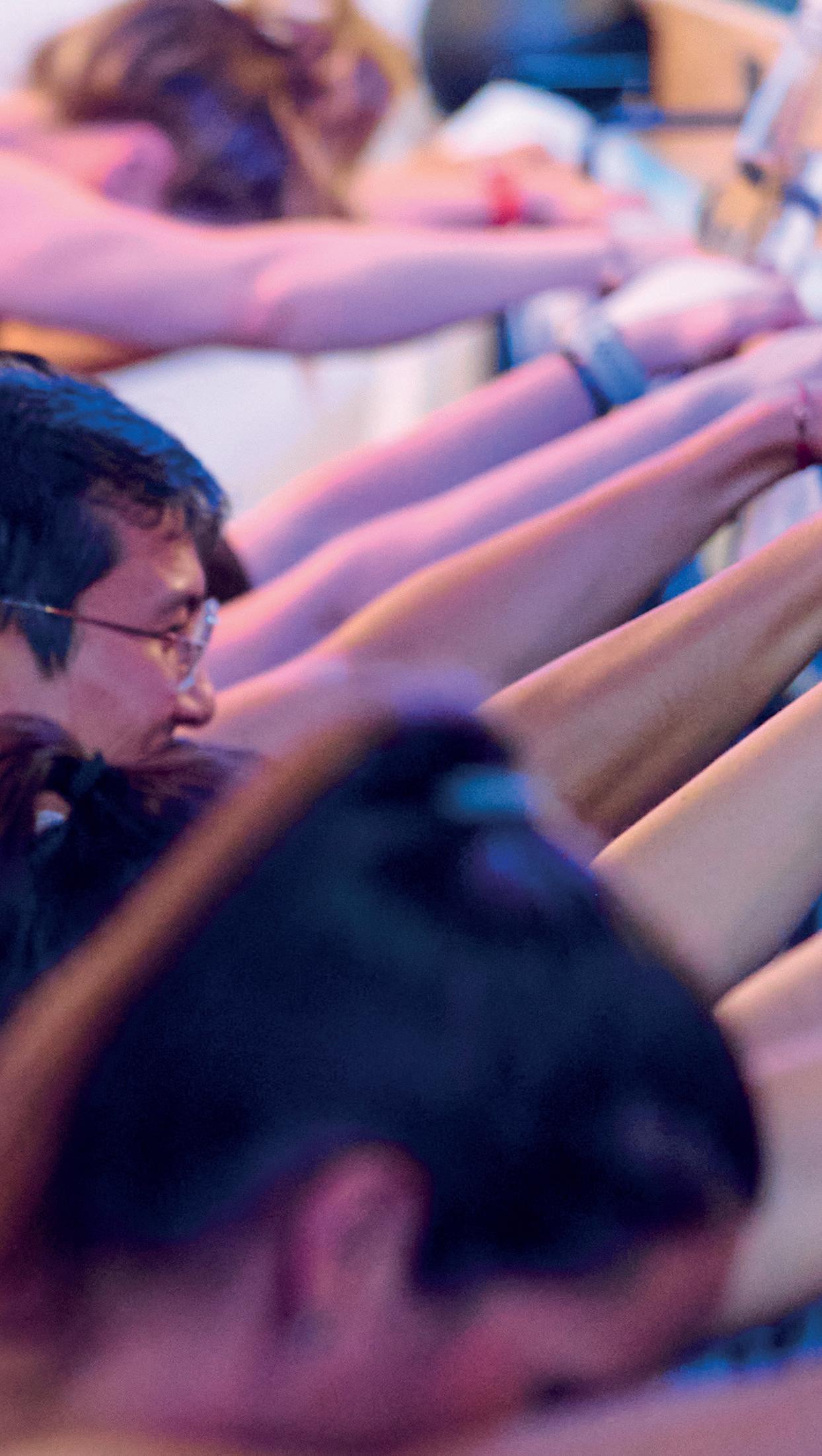
and since April 2020, we've had dedicated members attending each session without fail. This passionate group gathers from various corners of the globe, forming a dynamic and enthusiastic community.
What shape is the Physique 57 business in today?
We’re profitable and opened four new studios last year. We’re also expanding in India.
I'd say we’re lean, mighty and poised for further growth, as well as being focused on increasing revenues in our new studios, with a keen understanding that customer behaviours have changed dramatically.
You’ve done a deal with Drop Fitness. How is it going?
Drop Fitness (www.hcmmag.com/dropfitness) is a beautiful luxury space in New Jersey that brings four studios from New York City together into one massive gym.
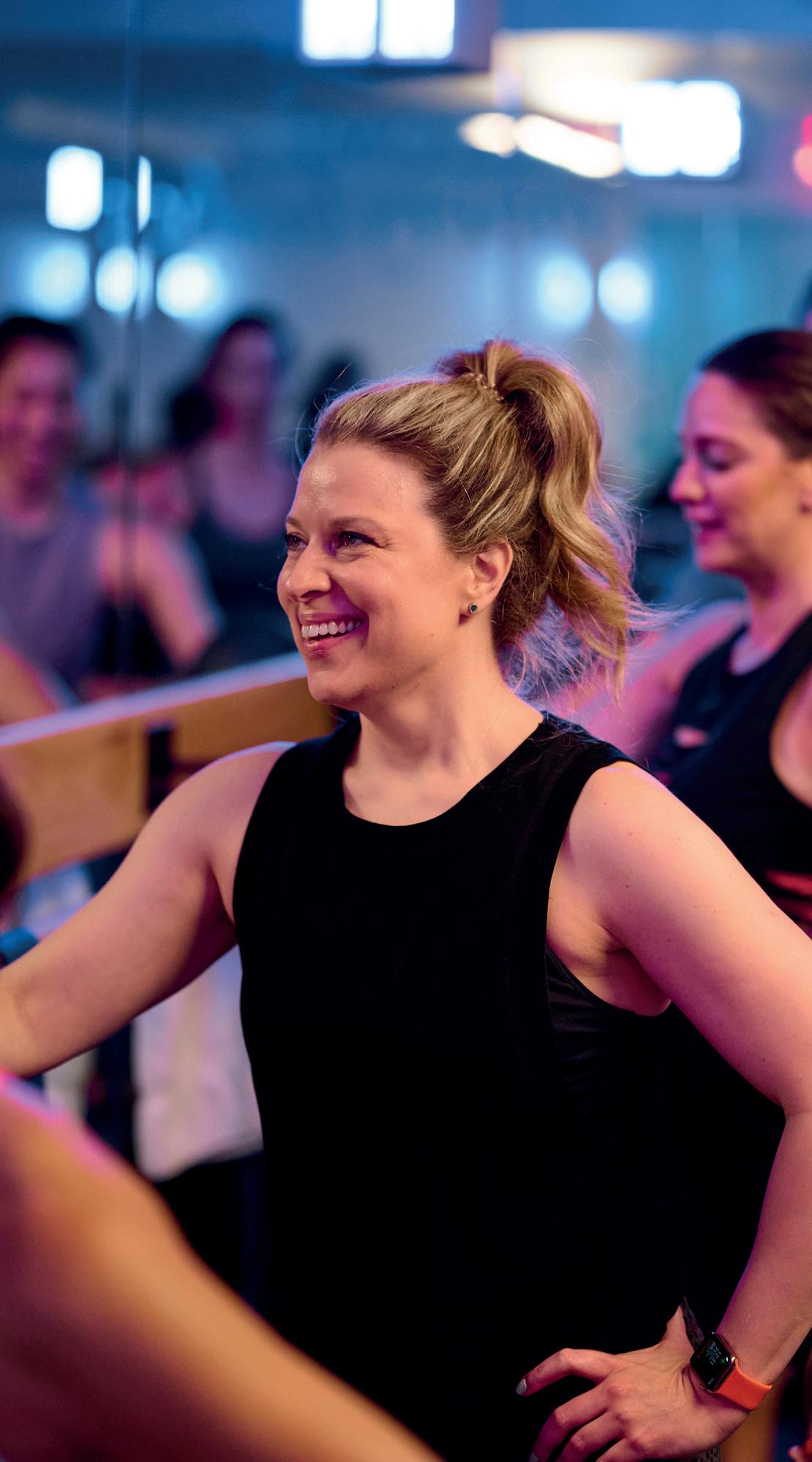
Each brand has its own separate studio alongside a large open gym space offering premium cardio and free weights.
This partnership is performing incredibly well. We’re seeking other partners to replicate this success and are opening a similar concept in Westchester County, NY with a veteran gym operator and several well-known NYC boutique brands.
You launched into franchising just before the pandemic. Do you plan to get back to it?
Perhaps in the next two years we’ll consider reopening the sales pipeline.
Tell us about your tech
In 2022 we migrated to Uscreen for on-demand and Momence for our booking software. There are no plans to change this set-up at present, as it's working very well for us.
19 ©Cybertrek 2024 Issue 2 2024
Maanavi got the company through the pandemic with proactive closures
Classes are suitable for all ages and abilities, with clients ranging from 18-88
PHOTO: PHYSIQUE 57
What challenges have you faced as a successful female entrepreneur?
In almost 20 years as the company’s CEO and sole owner, I’ve encountered numerous challenges. However, overall I’ve found the barre industry to be welcoming and supportive, especially since the pandemic.
Physique 57 is run by women, for women. Being a female leader with empathy, business acumen, resilience and drive has served me well.
Say no to anything that isn’t critically important to executing your business strategy and be aware that rapid growth is overrated

What advice would you have for women thinking of a career in the industry?
Entrepreneurship is the best way for women to create their own path to professional and personal success.
This will allow them to design their priorities, create a unique corporate culture and set their own schedule and these opportunities are critical for those who want to achieve long-term professional success while they juggle careers and family.
Consider the following advice to circumvent some of the mistakes I've made along the way:
● Firstly, as a founder, you’ll be the face of the business, so be prepared for an abundance of media attention and don’t be shy.
● Secondly, say no to anything that isn’t critically important to executing your business strategy
● Thirdly, be aware that rapid growth is overrated. Grow your business in a way that leverages your core competencies and financial wherewithal, not an arbitrary timeline created by ego, investors, or unrealistic expectations.
What are your dreams for the business going forward?
We’re focused on our three key pillars: grow our studio client base, continuously enhance our on-demand community for maximum growth and retention and seek the right partners to accelerate growth.
Physique 57 has been closely held since 2006. To best navigate the dynamic and flourishing landscape of the wellness industry, this is a pivotal time to forge strategic partnerships with like-minded, globally-oriented industry experts to accelerate our growth plans.
By engaging in partnerships with those who align with our ethos, we can position ourselves to broaden our reach to amplify our global impact.
From gym partnerships to joint ventures, we’re open and poised for synergistic collaborations around the world. ●
HCM PEOPLE 20 Issue 2 2024 ©Cybertrek 2024
Physique 57 is run by women, for women
PHOTO: PHYSIQUE 57







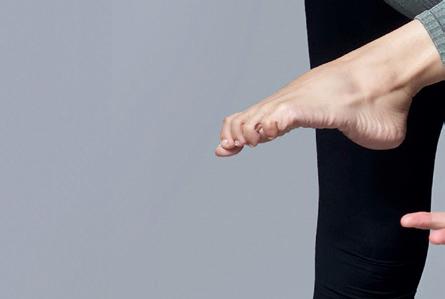






























































My mother was the first person to take dance and create an exercise programme out of it

22 Issue 2 2024 ©Cybertrek 2024
Esther Fairfax is establishing the Lotte Berk Foundation to safeguard her mother’s legacy
Esther Fairfax
PHOTO: CAMILLE MARIE BIEBER
Founder, The Lotte Berk Foundation
Nobody had ever done the sort of moves my mother did to work the small muscles


Tell us about your mother, Lotte Berk
Everyone in the health and fitness industry will be familiar with barre, but not many know the technique originated with my mother, Lotte Berk.
She was a renowned dancer from Liselotte Heymansohn in Cologne, who fled Nazi Germany, arriving in London during the war as a refugee.
Lotte found success as a dancer and in later years, when she reached her 40s – the age when dancer retired – she realised she couldn’t live without movement, so in 1959 she created an exercise programme that comprises 19 movements based around using a ballet barre.
She was the first person to take dance and create an exercise programme out of it and her programme became world famous.
She restricted it to women, as she wanted to create a safe space where they could feel good in their bodies.




Tell us about the protocol
She created it following an incident when she slipped a disk. To aid her recovery, she began working with an orthopaedic surgeon to design a series of exercises to strengthen the spine and core.
After making a full recovery, she started sharing her method with others.
Nobody had ever done the sort of moves my mother did. The Lotte Berk Technique works the small muscles which create a sleek body shape, so they work like a corset.
Generally with exercise, people want to focus on the major muscles, but although these are important, they’re supported by smaller muscles which are often ignored. Lotte Berk exercises

23 ©Cybertrek 2024 Issue 2 2024
Esther Fairfax left in her youth and right, with her mother, Lotte Berk
Fairfax still does two Lotte Berk workouts a day at the age of 89
PHOTO: CAMILLE MARIE BIEBER
PHOTO: CAMILLE MARIE BIEBER
PHOTO: CAMILLE MARIE BIEBER
focus on all those smaller muscle groups and feel like a bow and arrow into the muscle.
How did the business progress?
The Lotte Berk Technique expanded into a number of countries, including Switzerland, Italy, Israel, the Middle East and Canada, as well as around the UK, with classes continuing to this day.

In the early 70s, one of Lotte’s students – Lydia Bach – came to London from the US to train in the method and ended up buying the rights to the Lotte Berk Technique in the US.
Lydia registered the copyright for Lotte Berk’s name in the US, added more movements to the protocol – such as planks, push-ups, strength and balance exercises – to create an hour-long class called Barre.
I regret that my mother lost out on the opportunity to popularise her own method in America, but at the time, it was a choice she made.
What kinds of influence did Lotte have on the wider industry?
You’ll see Lotte’s influence in many of today’s classes. For example, many teachers advise against wearing midriff-baring tops, as exposure to cold air can make muscles more prone to injury –Lotte was huge advocate of injury prevention.
What are your goals now?
I’m 89 and on a mission to protect and promote the Lotte Berk Technique in its original form. I want to make sure Lotte’s name doesn’t die and I’d like to see studios using my mother’s name, with instructors who are trained using my mother’s technique.
Although I’ve retired from teaching, I still work out twice a day using the exercises.
You’ll see Lotte’s influence in many of today’s classes and I want to make sure her name doesn’t die
Tell us about the Lotte Berk Foundation
One of my teachers, Jenifer Klepfer, is leading the establishment of The Lotte Berk Foundation, which will promote the method and run teacher training courses.
The next course is planned for 24-29 June in Berkshire, UK. The lead teacher will be Jenifer, who has built a committed community of Lotte Berkers and I will give a Q&A on the Lotte Berk spirit and what makes the technique different. The course will also cover the history of the technique, the art of crafting a Lotte Berk class, anatomy and an exam.
Teachers have to be empathetic as well as strict and they need to have humour because my mother put a lot of mischief into it
More: www.lotte-berk.com
24 Issue 2 2024 ©Cybertrek 2024 HCM PEOPLE
Esther Fairfax with Jenifer Kelpfer who is leading foundation of The Lotte Berk Foundation
PHOTO: CAMILLE MARIE BIEBER
Physique 57 was founded to champion barre-based workouts

Lotte Berk in the US
Lotte Berk licensed her name for the US market in the early 70s to former student, Lydia Bach who opened a studio in Manhattan and then more locations in Bridgehampton, Los Angeles and Connecticut, as well as launching a franchise.
Bach also registered the copyright for Lotte Berk’s name in the US, adding more movements to the protocol – such as planks, push-ups, strength and balance exercises – to create an hour-long class called Barre.
Her studio sparked the creation of a number of new businesses that went on to form the foundation of the wellness and barre industry as we know it today.
Bach published a book in 1971 called The Lotte Berk Method, Awake! Aware! Alive! Exercises for a vital body.
Exhale Spa
The New York Lotte Berk studio was run by Elisabeth Halfpapp and Fred DeVito who supported Lydia Bach to build the business over many years.
Halfpapp and DeVito eventually left to launch Exhale Spa at which point, the original Lotte Berk studio in New York closed, opening up an opportunity for the creation of Physique 57 and others.
Exhale was sold Hyatt who operated it between 2017 and 2020, when it was taken over by E-HALO.
In 2019, Halfpapp and DeVito opened CoreBarreFit (www.corebarrefit.com), a 20 minute walk from the Lotte Berk Barn in Bridgehampton, which is now a SoulCycle.
The cover of Lydia Bach’s 1971 book about The Lotte Berk Method
Physique 57



Physique 57’s Jennifer Maanavi and Tanya Becker were a teacher and student who met at The Lotte Berk Method’s New York City studio. Saddened by its sudden closure, they decided to go into business, creating the Physique 57 brand with choreography influenced by Lotte Berk. Read more in our interview with Jennifer Maanavi in this issue of HCM .
The Bar Method
Burr Leonard was a student and eventual owner of a number of Lotte Berk franchise locations throughout Connecticut. After a decade of teaching the Lotte Berk Method, she and her partner Carl Deihl found that the technique they were teaching had diverged so much from the original that they decided to branch out on their own. They called their class The Bar Method and opened their flagship studio in 2000 in San Francisco. The company currently has around 80 locations and has grown through franchising. ●
25 ©Cybertrek 2024 Issue 2 2024
PHOTO: PHYSIQUE 57















































For a strong and



11 – 14 APR 24 Exhi





















bition Centre Cologne



















































FITNESS heal thy society. Get your ticket fibo.com PLAY VIDEO
GLOBAL
Equinox raises $1.8bn to refinance and grow
Equinox has raised US$1.8bn in cash to refinance US$1.5bn of maturing loans. The deal will also boost cashflow and give it a chunk of working capital to fund growth.
The transaction was led by Silver Lake and Sixth Street – a new investor in the business.
The raise saw a number of other parties participating, including LVMH’s investment house, L Catterton, Ares Management, HPS Investment Partners and certain principals of Related Companies, the real estate company that owns the Equinox Group ‘ecosystem’ of brands –Equinox, Equinox Hotels, SoulCycle, Blink Fitness and E by Equinox.
The company has also arranged a new revolving credit facility with JP Morgan, Morgan Stanley and Goldman Sachs, to replace a US$76m revolving credit facility which matured in January.
The new raise will refinance a US$1.2bn loan that matures this month and a US$200m junior

The Equinox Resort in Saudi Arabia will have a magnesium salt rooftop pool loan that’s due in September, leaving around US$300m for cashflow and business growth.
“These new strategic investments from a group of world-class partners, that share our vision for the Equinox brand, will empower us to accelerate
further growth through new club openings and innovative offerings, as well as by scaling the Equinox luxury experience,” said Harvey Spevak, executive chair and managing partner.
More: http://lei.sr/7P5u7_H
IHRSA rebrands to HAFA to power lobbying

US lobbying organisation for the health and fitness sector, IHRSA, has announced a name change, becoming the Health and Fitness Association (HAFA).
IHRSA president and CEO, Liz Clark, made the announcement during her president’s address, prior to the keynote, at the annual convention and trade show in Los Angeles.
“Every industry evolves, and the next step of evolution for our association is to have a name that exactly reflects the breadth, diversity, and consumer-oriented focus of the businesses in our sector,” she says.
“The Health & Fitness Association is clear, compelling, and can be easily translated into any language, which is vital given the international reach and global operations of our members.”
The announcement follows a year-long project involving board members, industry advisors and veterans, association staff, as well as brand strategy and brand marketing consultants.
The association has also unveiled a new logo, brand usage guidelines, colours, fonts and the hashtag #HealthFit. In the coming months, the organisation will roll out a full transition of the brand, iconography, images, website, social media platforms, email addresses, and collateral.
Formed in 1981, to advocate, educate and undertake research, the association was founded as the International Racquet & Sports Association (IRSA).
More: http://lei.sr/Y6K2K_H
news 28 Issue 2 2024 ©Cybertrek 2024
PHOTO: HAFA
PHOTO: AMAALA/EQUINOX
Liz Clark, HAFA CEO, led the rebrand
Orangetheory and Self Esteem Brands merge
Orangetheory and Self Esteem Brands have revealed plans to merge ‘as equals’ creating a new company with around US$3.5bn a year in sales and 7,000 franchises in 50 countries. A new CEO is being sought and on their appointment, the founders will transition to the board.
The deal will be an all-stock transaction, creating one of the largest fitness, health and wellness businesses globally. The name for the new business has not yet been revealed. The two already share private equity firm Roark Capital as a backer.
The combined portfolio of brands will include Orangetheory Fitness, Anytime Fitness, Waxing the City, Basecamp Fitness/ SUMHIIT Fitness, The Bar Method, and Stronger U Nutrition.
“From our simple beginnings in 2002 with the first Anytime Fitness club, we’ve enjoyed rapid growth worldwide thanks to both the power of small-business franchising and our mix of brands that meet the ever-increasing demand for more holistic and personalised wellness services,” said Chuck Runyon, CEO of Self Esteem Brands.
Dave Long, co-founder and CEO of Orangetheory Fitness, who is interviewed on page 38 of this issue of HCM, added: “As we start a new chapter, Orangetheory will continue to build on our legacy of innovation and transformation. We’re excited about what our combined companies will be able to accomplish.”
More:

Xponential says lawsuit is ‘without merit’
Xponential Fitness has told HCM it will vigorously defend itself against claims made in a class action lawsuit being brought against the company for financial damages.
The lawsuit – City of Taylor General Employees Retirement System v Xponential Fitness Inc – was filed on 9 February in the state of California by the lead plaintiff.
Fifteen American law firms, including Robbins Geller Rudman & Dowd and Levi & Korsinsky, are now speculatively seeking engagement with complainants in a bid to gather a substantial enough cohort to represent Xponential Fitness shareholders in a bid to recover funds. The deadline for them to come forward to participate in the legal action is 9 April. It’s understood some of the law firms have up to 70 participants.
The action states that some executive officers of the company violated the Securities Exchange Act between 26 July 2021 and

7 December 2023 and includes allegations that “false and/ or misleading statements were made relating to the closure of 30 Xponential Fitness franchise locations”.
It also alleges “Xponential’s reported same-store sales and average unit volume metrics had been exaggerated by the company excluding details about underperforming stores”.
The class action will claim that some franchisees were misled into taking on franchises by a ‘misrepresentation’ of the profitability of existing studios.
An Xponential spokesperson told HCM: “We believe these claims are without merit, and we will vigorously defend ourselves against them.”
More:
29 ©Cybertrek 2024 Issue 2 2024 Get live news at www.HCMmag.com
http://lei.sr/M9G8V_H
http://lei.sr/C8A5r_H
PHOTO: XPONENTIAL FITNESS
PHOTO: ORANGETHEORY
The merger will result in ‘significant international scale’ for the new fitness company
BFT is one of Xponential’s most recently-acquired brands
Everyone Active’s £1m plan for Olympic pool
Everyone Active has taken over as operator of the London Aquatic Centre on behalf of the London Legacy Development Corporation.
The stunning venue, designed by the late Zaha Hadid and built at Queen Elizabeth Park in East London for the 2012 Olympics, has two 50-metre pools, a dive pool, a 100-station gym, a café and ancillary amenities.
The contract is for eight years from 1 March and sees Everyone Active taking over from GLL which has been running the centre since 2012.
Everyone Active will spend more than £1m upgrading the facilities. The gym refurbishment took place in early March and new purpose-built studios for cycling and group exercise will follow soon. The catering facilities are also being refurbished.
Everyone Active’s regional director, Duncan Jefford, describes the contract as a monumental milestone for Everyone Active and is keen to get to work implementing upgrades.

The leisure operator is working with Olympic gold medallist, Adam Peaty and Paralympic medallist, Maisie Summers-Newton, to promote the centre. They have both broken records and won medals at the venue.
Peaty will bring his AP Race competition series to the pool in a partnership with Everyone
Active, while Summers-Newton – a double gold Paralympic swimmer is supported by the company as part of its Sporting Champions charity.
Both athletes are ambassadors for the operator and are aiming to compete in the Paris 2024 Olympics.
New Centre of Excellence for women in sport

Manchester Metropolitan University and the UK Sports Institute have joined forces to launch the Centre of Excellence for Women in Sport: a global hub for female health.
Aiming to work with elite athletes, as well as wider public health, the centre will bring together experts and conduct high-quality, hands-on research and practice-based evidence to specialise in women in sport.
“As well as supporting the enhancement of elite athletes and ensuring that GB remains at the forefront of female high-performance sport science and medicine, the centre will be a trustworthy source of educational resources for women in sport in all settings,” says Kirsty Elliott-Sale, professor of female endocrinology and exercise physiology
at Manchester Metropolitan University Institute of Sport.
The centre will aim to inform policy and practice in relation to the public health agenda and use education and the development of new resources to share the latest knowledge.
Co-lead for female athlete health at UKSI, Dr Richard Burden, says the centre will be the destination for high-quality, trusted research and health and performance support for elite female athletes.
This development follows last year’s partnership between the two organisations which was formed to address the need for better quality research to support the health and performance of female athletes.
news 30 Issue 2 2024 ©Cybertrek 2024
More: http://lei.sr/p6g9q_H More: http://lei.sr/B3b5G_H
Ambassadors Adam Peaty and Maisie Summers-Newton were at the launch
PHOTO: SHUTTERSTOCK/MARCOGARRINCHA
PHOTO: EVERYONE ACTIVE
The new centre will support female health and athletic performance
New laws to change health club contracts
New legislation will change the way health clubs in the UK manage their membership process, creating greater powers for consumers when it comes to contracts and cancellations.
The Digital Markets, Competition and Consumers Bill – designed to clamp down on subscription traps, fake reviews and drip pricing – has been making its way through the parliamentary process and is expected to become law in Q2.
The legislation will grant the UK’s Competitions and Markets Authority (CMA) stronger powers to tackle businesses that breach consumer rights in a variety of ways. This includes the requirement for them to give clear information to consumers up-front at the point a contract is
signed, rather than hiding it in small print. Businesses will also be obliged to make it easier for consumers to get out of contracts and to offer a number of cooling-off periods.
Director of policy, research and communications at UK Active, Clemency Lion, said: “While we support the government’s push to ensure consumers are properly protected, we want to make sure these new measures don’t place an undue burden on our members.”
Once the Bill becomes law, UK Active says it will lobby to get secondary legislation passed, as well as issuing guidance. It doesn’t expect changes to be enforced before October 2025.
More: http://lei.sr/R3B9f_H

UK government launches ‘Our Future Health’
The UK’s National Health Service (NHS) is looking for recruits ahead of undertaking its largestever research programme.
The study, called Our Future Health, will seek to establish ways of tackling the growing burden of diseases – such as cancer, diabetes and Alzheimer’s – to help to inform ways to detect them at an earlier stage and prevent them from occurring, through wellness interventions.
People taking part will be asked to provide regular insights into their health and lifestyle, as well as a blood sample at a local clinic. The programme will enrol five million volunteers living in the UK – making it one of the biggest research studies ever undertaken into population health. Currently 1.2 million people have signed up.
The study will build a resource to reflect the UK population, identifying how diseases begin and progress in people from different backgrounds.

Research currently suggests that 54 per cent of people aged 65 or older live with two or more serious health conditions and by 2035, that figure is projected to rise to 68 per cent.
Industry analyst, Ray Algar, says it’s an excellent opportunity for the fitness sector to engage with a world-leading preventive research programme and has called on operators to mobilise
one million volunteers of the 3.8 million that are still needed.
Health and fitness and sports operators are invited to become study partners and to also encourage their members to enrol.
● Email partnerships@ourfuturehealth. org.uk to become a partner.
31 ©Cybertrek 2024 Issue 2 2024 Get live news at www.HCMmag.com
http://lei.sr/d7E3e_H
More:
PHOTO: SHUTTERSTOCK/ANDREY_POPOV
PHOTO: ALTRENDO IMAGES/SHUTTERSTOCK
Contract law is changing
All participants in Our Future Health will give a blood sample
Gymshark goes all-in on ‘fitness experiences’
2024 is going to the be biggest year for Gymshark ever,” says CEO and founder, Ben Francis following the release of year-end results that were up by 15 per cent.
Francis said that despite a difficult start to 2023, with the cost of living crisis, revenues rose to £556m ($709m, €649m) and EBITDA grew in line with sales growth. Its cash position improved by £50m ($63m, €58m) and Black Friday was the best sales day in the company’s history.
This year Gymshark will continue to innovate with both products

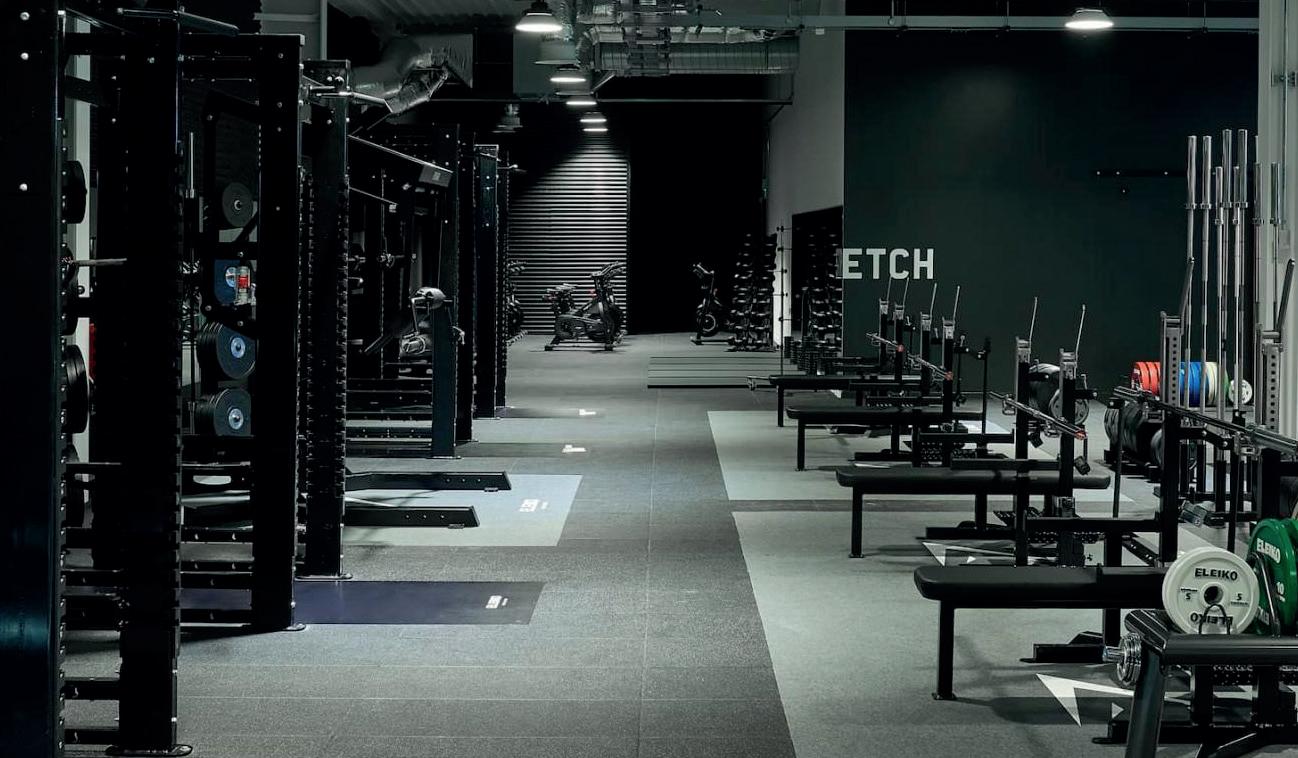
The Gymshark Lifting Club in Birmingham and experiences. In response to customer demand, a premium range is being launched called Everywear.
Gymshark products will increasingly be available on the high street, with the new range launching at Selfridges. A second London store will open at Westfield Stratford City, which follows the launch of the first store
on London’s Regent Street in 2022. There will also be a 12-month NY pop-up and an “incredible brand experience” opening in Dubai.
Its Lift the City fitness events, held in LA and Manchester last year, will continue in 2024 in new locations.
Third Space gears up to open three new clubs
Speaking exclusively to HCM magazine, Third Space CEO, Colin Waggett, says he is feeling optimistic, as the company gears up to open three clubs this summer.
“In terms of optimism, I’m a 10 out of 10,” says Waggett in HCM “The big tailwinds continue to blow very strongly for us: people prioritising experiences, fi tness
being a social as well as a health pursuit, fi tness being a sport in itself, young people exercising more, broadening our appeal and reach… you get the drift.”
The next Third Space will open at Wood Wharf in the summer. It will include a 20m pool, sauna and steam, hydropool, Reformer Pilates, hot yoga and multifunctional fitness area.
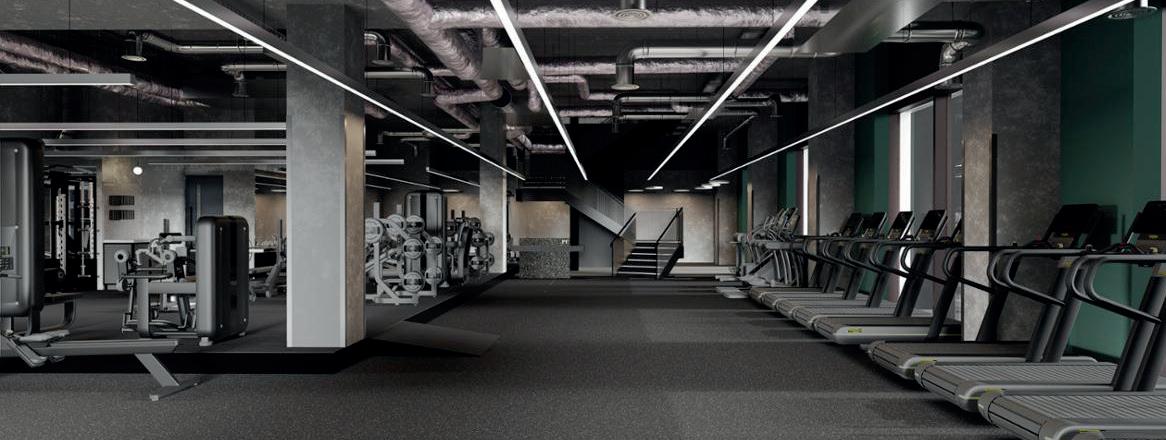
This will be shortly followed by Battersea, which will offer a 20m pool; wet spa with hydropool, sunken Finnish sauna and marble steam; hot yoga, a 15m sled track with custom-built rig, an Eleiko lifting area and a tiered cycle studio with surround sound and dynamic lighting.
Also opening this summer is the Clapham Junction site, in a Grade II-listed former department store. Original features like wooden beams and floor-to-ceiling windows, will be complemented by modern architecture. Waggett has fond memories of this location, saying: “It’s the site of the former Arding & Hobbs department store, where I bought my first work suit over 30 years ago.”
news 32 Issue 2 2024 ©Cybertrek 2024 Get live news at www.HCMmag.com
More: http://lei.sr/F7j5C_H More: http://lei.sr/n6w4B_H
2024 is going to the be biggest year for Gymshark ever Ben Francis, founder, Gymshark
PHOTO: ANT/STUDIO RHE
PHOTO GYMSHARK:
PHOTO: GYMSHARK
“
The next Third Space at Wood Wharf
JOIN W3FIT IN 2024
Representing the next generation of hosted buyer events, bringing together like-minded leaders in the club and fitness industry through scheduled one-on-one meetings, networking, community, and purpose.


W3Fit North America
8–11 September 2024 •
Estancia La Jolla, California
NEW EVENT!
Nestled in the heart of Southern California, Estancia La Jolla Resort & Spa with stunning Mediterranean-inspired architecture and lush landscapes is the ideal setting for the inaugural W3Fit North America event.
W3Fit EMEA
8-11 October 2024 •
Chia Laguna Sardinia, Italy
Experience the marvels of Sardinia at the Chia Laguna Resort, which seamlessly blends elegant and harmonious style with an unwavering commitment to excellence. Truly an unforgettable experience discovering nature, the sea, and the wonders of Sardinia.
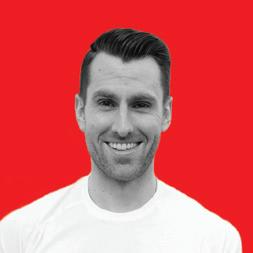

Contact Our Team Today!
Cameron Close W3Fit North America cameron@weworkwellevents.com
Zarb-Jenkins W3Fit EMEA david@weworkwellevents.com
David
Kerzner eyes expansion for Siro fitness hotel
Following the launch of its Siro fitness hotel brand, in the form of Siro One Za’abeel in Dubai, Kerzner International has revealed it plans to create a global chain of properties under the brand.
Speaking at the World Spa and Wellness Convention recently, Zoe Wall, vice president of Siro and Wellness at Kerzner, said the company envisions opening at least 100 hotels, indicating that the Dubai property is already trading well and showing confidence in the freshly launched concept. Montenegro, Japan and Mexico are already on the cards.
Built around five biohacking pillars: fitness, nutrition, sleep, recovery and mindfulness, Siro aims to empower guests on both a mental and physical level.
Kerzner CEO, Philippe Zuber, says: “Siro merges science and innovation to create a space that not only positively blurs the lines of wellness and hospitality, but also brings

The sky high infinity pool at Siro One Za’abeel Dubai together a community of like-minded individuals who want to enjoy the immediate benefits of fitness, while future-proofing their health.”
Facilities include four group exercise studios; holistic classes, IV therapy rooms, sound therapy, cryotherapy, physiotherapy and myofascial cupping. Bedrooms are optimised
for sleep, with thermo-regulating mattresses, recovery equipment and a healthy minibar offering kombucha, ginger shots and blueberries.
Wall has previously spoken of Kerzner’s aim to “weave wellness into every element of the Siro experience”.
Life Time’s record revenues and Agassi deal
In the same week that tennis legend, Andre Agassi, was appointed to the board of Life Time, the company released strong year-end results, with record revenues and EBITDA
Total revenue increased 18.2 per cent to US$558.8m (€516m,
£442 ) for the fourth quarter and 21.6m per cent to US$2,216.6m (€2047.5m, £1754m) for the year.
Adjusted net income increased to US$38m (€35m, £30m) for the fourth quarter and US$129.7m (€120m, £102.62m) for the year.

Adjusted EBITDA increased 28.7 per cent to US$137.7m (€127m, £109m) for the fourth quarter and 90.6 per cent to US$536.8m (€119.8m, £425m) for the year.
Bahram Akradi, founder, chair and CEO, is delighted with the results, saying: “We set record levels of revenue and adjusted EBITDA, improved our balance sheet and further reduced our net debt leverage ratio.”
“Thanks to strategic programming initiatives, member engagement also improved. “We increased average visits per membership to 135/year, compared to 124/year in 2022 and most notably, 108/year in 2019 before the pandemic. “


news 34 Issue 2 2024 ©Cybertrek 2024 Get live news at www.HCMmag.com
http://lei.sr/j5y3j_H
More: http://lei.sr/B6p8u_H More:
PHOTO: SHUTTERSTOCK/PHOTO WORKS
PHOTO: KERZNER INTERNATIONAL
Andre Agassi has joined Life Time to develop pickleball























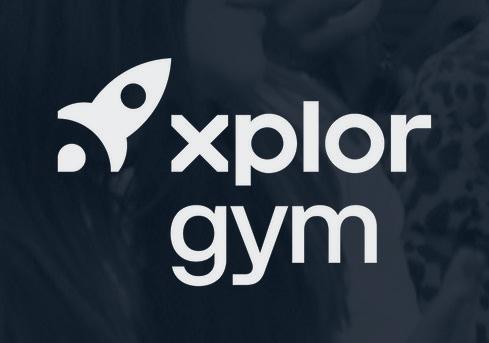


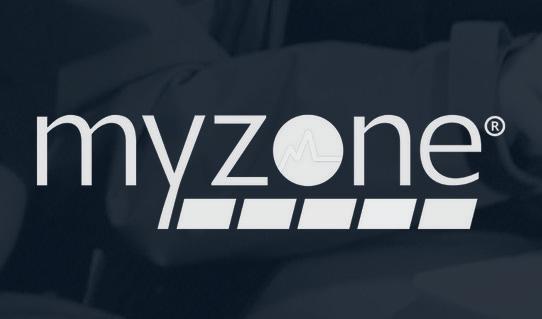

























50+ MASTERCLASSES 100+ LEADING BRANDS THE INDUSTRY’S BEST NETWORKING & AFTER SOCIAL THE UNMISSABLE BUSINESS OF FITNESS EVENT USE CODE ‘HCM10’ FOR 10% OFF AT WWW.PERFORMXLIVE.COM TOBACCO DOCK, LDN 21 - 22 MARCH 202 4
Technogym’s new AI-based Checkup station
Technogym is launching Checkup, an assessment station which uses AI to personalise training programmes in order to create more effective workouts.
The AI-based system scans body composition, balance, mobility and cognitive abilities, as well as analysing strength from workouts on resistance equipment within the Technogym Ecosystem. The data is combined to create a Wellness Age metric.
Technogym Coach then prescribes a set of training protocols before following the training evolution of each individual, enabling operators to create a clustering of club users –based on workout preferences, habits and patterns – which can inform interventions to boost retention, challenges, promotions while also creating upselling opportunities.
Technogym Checkup launched at IHRSA and will be at FIBO as part of the showcase of Technogym Ecosystem.

Technogym’s AI-driven Checkup will deliver a Wellness Age metric
Technogym Ecosystem is an open platform that integrates software applications, fitness equipment, payment methods and members’ consumer apps and wearables to provide a seamless experience for club members.
Founded by Nerio Alessandri 41 years ago, Technogym has been
consistently innovative, being the first company to launch software, then TV screens on equipment, the first internet connected equipment, first cloud platform and first equipment to feature live and on-demand video workouts via its equipment and app.
More:
Samsung launches first wellness smart ring

Samsung has unveiled a smart ring, packed with innovative technologies to aid health and wellbeing, which will be available later this year.
The Galaxy Ring is one of a range of new products unveiled by Samsung at Mobile World Congress in Barcelona, aimed at giving consumers more control over their wellbeing.
The company is working on a seamless digital healthcare system which will use AI to offer personalised health experiences across multiple devices, including the ring, the Galaxy Watch 6 series and Galaxy S24. All will be available to buy later in the year.
“Under our openness philosophy, Samsung is constructing an integrated and seamless digital healthcare ecosystem along with industry partners,” says Hon Pak, VP digital
health team, Mobile Experience Business. “We hope to provide users with a whole new suite of integrated health solutions, giving them the tools to easily manage and understand their health from their home.”
The Galaxy Ring will exhibit intelligent health features, such as My Vitality Score, which will offer personalised health insights based on multiple factors including sleep, activity, heart rate and heart rate variability. The Booster Card technology will track pre-defined goals and deliver actionable insights.
The launch is the latest move from Samsung, which has been working on a 360 degree strategy for consumer wellness for several years.
More: http://lei.sr/A3A7Q_H


36 Issue 2 2024 ©Cybertrek 2024 news Sign up at www.FitTechGlobal.com/signup
http://lei.sr/4Q2T5_H
PHOTO: SAMSUNG GALAXY
PHOTO: TECHNOGYM
Samsung’s Galaxy Ring (in Black, Silver & Gold) will be available later this year









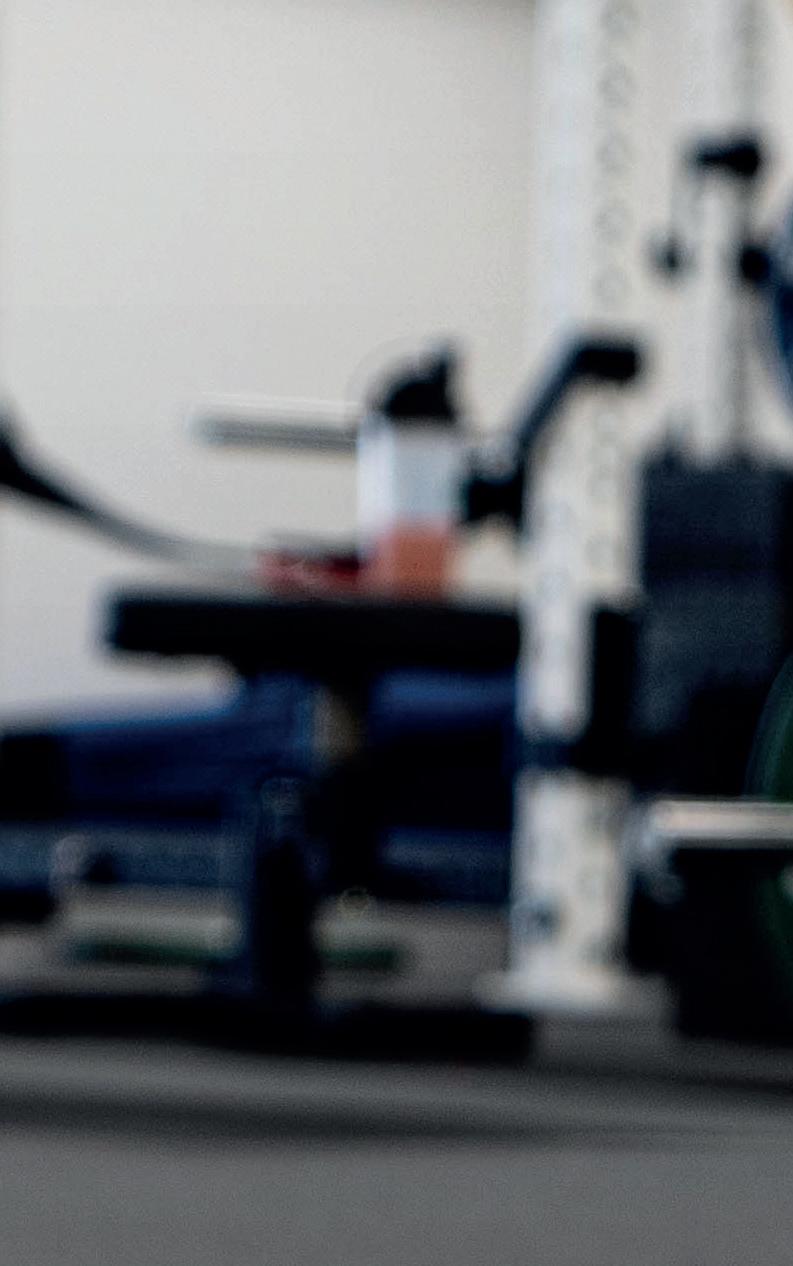













Learn more at blkboxfitness.com FLOORING: BUILT BETTER. FIND OUT MORE
ERGONOMIC DESIGN DAMPENS ACOUSTICS ENSURES SAFETY FORCE REDUCTION UNBEATABLE WARRANTY

38 Issue 2 2024 ©Cybertrek 2024
PHOTO: IAN JACOB PHOTOGRAPHY / ORANGETHEORY
Long founded Orangetheory with Ellen Latham in 2010
Even though it’s been 14 years, it feels as though we’re just getting started

Franchise business Orangetheory Fitness is merging with Self Esteem Brands and is on a long-term path to 10,000 units globally, its CEO and co-founder tells
Kate Cracknell
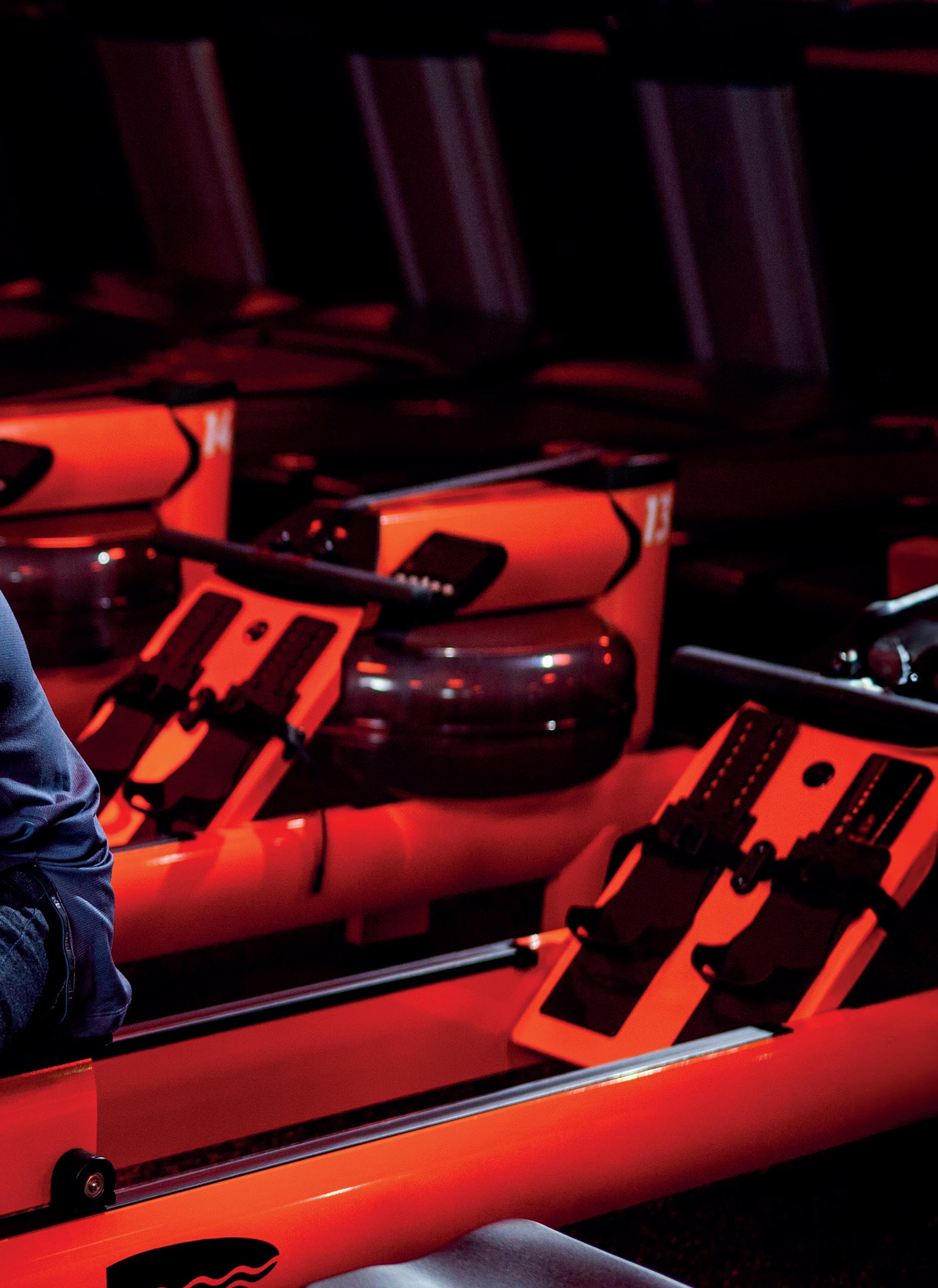
What’s Orangetheory’s USP?
Our business is an intersection of technology and human interaction. We have amazing humans in our studios – our expert coaches and our supportive communities – which means members crave and commit to the in-person experience. But we also leverage science and technology to bring about incredible results for our members.
There’s so much behind the design of the Orangetheory workout, and behind the technology that connects and brings it to life. Many people use wearables, but those wearables don’t know if you’re on a rower or a treadmill. Our technology does and it provides second-by-second data for every single workout so our members get ultra-accurate feedback on their performance and our coaches use that data to deliver exceptional coaching and drive results for members. That’s super important.
I’m asked all the time how it is we’ve grown so fast and I point to the results our members achieve. People work out for a reason. The primarily feedback is currently cardiovascular output, tracking improvements
in distance covered on the treadmill, power output on the rower and so on, plus we have pretty accurate body composition scales in our studios. Moving forward, we’re planning to connect our strength equipment too, so we can also report on strength improvements.
How has the company grown?
Founded in 2010, we’d grown to 1,000 locations by 2018. We’re now at around 1,540 locations across 23 countries; growth obviously slowed in the pandemic. However, we continued to open studios even during those years.
We’re the first boutique that really went to scale and now we’re merging with Self Esteem Brands, owner of Anytime Fitness, to form a US$3.5bn business.
How do you feel about the merger?
None of us can talk much about it until the deal has gone through, but We’re excited about what our combined companies will be able to accomplish together to capture market
39 ©Cybertrek 2024 Issue 2 2024
We’re planning to connect our system with strength equipment, so we can also report on improvements
share, unlock growth and pioneer a healthier tomorrow for consumers around the world
As we start this new chapter, the company will continue to build on its legacy of innovation and transformation. (More: www.HCMmag.com/OSEB.)
Tell us about your programming
Our original Orange 60 workout is heart rate-based interval training: a total-body group workout using treadmills, rowing machines and weights, where you aim to get into the anaerobic zone for at least 12 minutes of the 60-minute class. That means hitting 84 per cent of your maximum heart rate, which is initially calculated based on your age, but ultimately based on your in-studio performance. I believe it to be world-best programming.
Since we launched Orange 60 has been the only programme we’ve offered, which made 2023 really special for us because we launched a second programme globally, called Strength 50.
Our core programming already had plenty of focus on strength, but our members were asking for even more, so we built and tested a product over three years and launched it last September. It’s now virtually booked out at all studios and what we’re seeing is that members are doing it as well as the Orange 60 classes they were already doing. They’re not trading out any classes: they’re doing more.
We don’t coach to heart rate zones in Strength 50: we coach to specific strength outputs and look at progression and form. However, our members still wear their heart rate monitors and we do track heart rate, and on leg day especially, members might still get what we call Splat Points: one point per minute spent in the anaerobic training zones.
Will there be more new programmes?

We launched a third class globally – Tread 50 – in January. There’s another segment of our members who want more endurance training, more cardio, whether that’s for fat burn or cardiorespiratory fitness or training for a 10k. We tested the programme throughout Q4 and it got a higher NPS (Net Promoter Score) than anything we’ve ever launched, although we recognise the bias of members already wanting and therefore loving it!
With a trio of options, members are now able to customise their weekly routines around their specific goals, which we know will add tremendous value. They might already be 70, 80, 90 per cent of the way there, and some people might not want to change a thing, but for others, adding new classes offers the chance to get even greater results.
Average workouts per member is currently almost spot-on where it was pre-pandemic, with most members attending two to three classes a week – we expect that figure to rise even further
40 Issue 2 2024 ©Cybertrek 2024 PROFILE
PHOTO: ORANGETHEORY

BRIEFING


More on that Self Esteem Brands and Orangetheory merger
On 29 February, Orangetheory and Self Esteem Brands announced a ‘merger of equals’ to create a US$3.5 billion business.
A search is underway for a CEO of the combined company, although the existing leaders will stay in place until they’re appointed, at which time they’ll move to the board.
Each of the brands will continue to operate independently, with its own priorities while
with the addition of our new programmes, while our NPS is higher than it’s ever been.
Our next step will be to look at how we continue to personalise the experience, not only in-club with our coaches and the events we run, but also through our mobile app. You can already set and track goals, but later in 2024 we’ll introduce recommendations – the class types you should take – with signposting to the relevant studios and coaches. It’s about simplifying the programming for members based on the goals they’ve given us.
Who are your customers?
One of the common misconceptions of HIIT is that it’s only for fit people. In fact, empowered by our
the merger proceeds and no end date is yet in place for the deal’s conclusion.
In 2023, Self Esteem Brands’ Dave Mortensen told HCM the company had a target of 10k locations. In this HCM profile, Dave Long says Orangetheory has also identified demand for 10k sites, indicating the new combined business will have a goal well north of 10k locations.
Liz Terry, editor, HCM


coaches and our heart rate monitoring, Orangetheory workouts completely cater to every individual.
Our typical customer is around 40, a college educated graduate, generally female – around 65-75 per cent of our customers are women – with one or two kids. But overall it’s a broad spread, from people in their 20s through to a few in their 60s+, which speaks to how our onboarding equips people to be successful, regardless of fitness level and experience.
Rather than immediately setting workout targets, our new customer roadmap focuses on making them feel comfortable: we get them used to the equipment, the heart rate monitoring, the cues. And although regulars still get corrections and support, our coaches spend the majority of their time in class
41 ©Cybertrek 2024 Issue 2 2024
Delivering high-level coaching is at the heart of the Orangetheory model
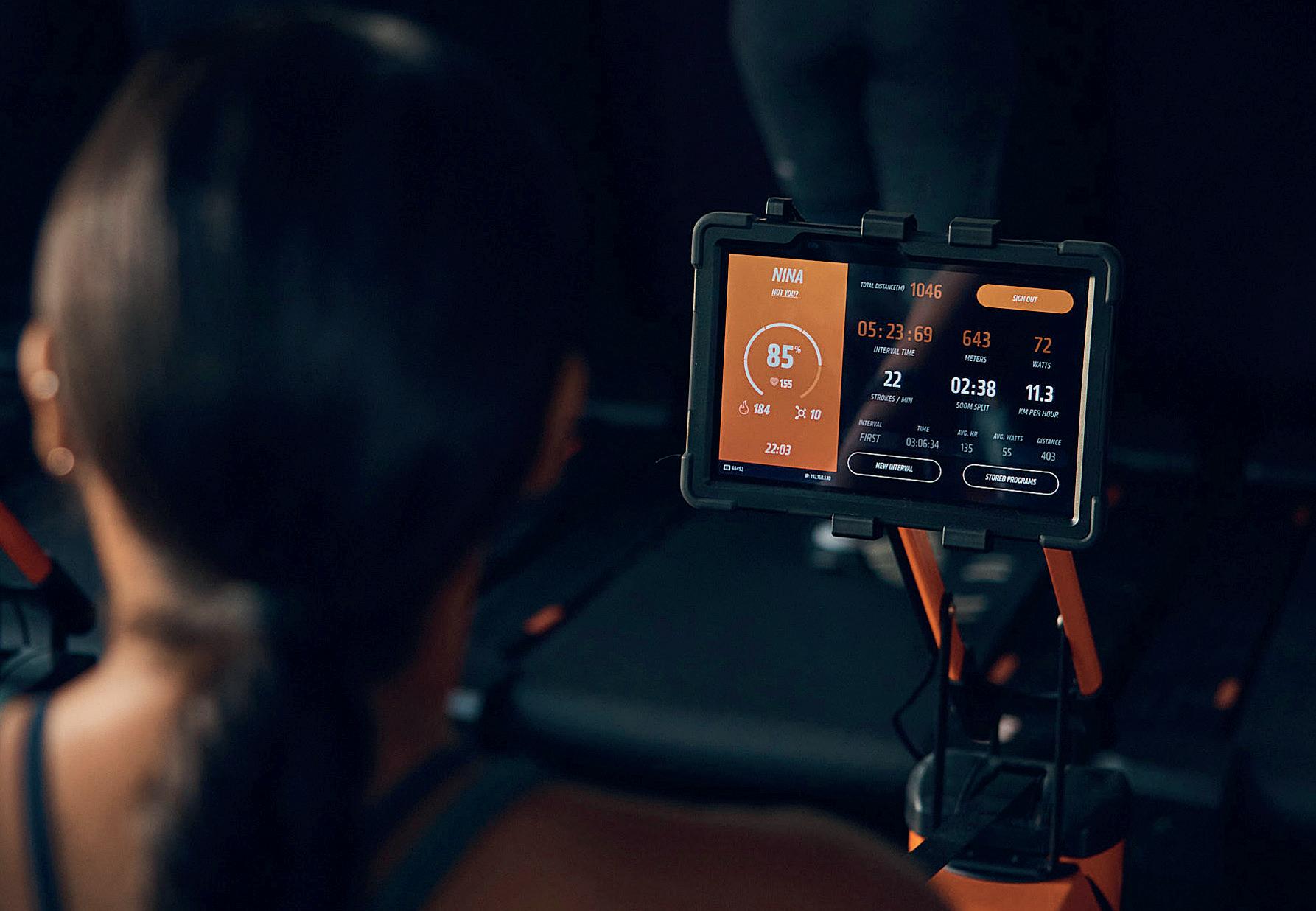
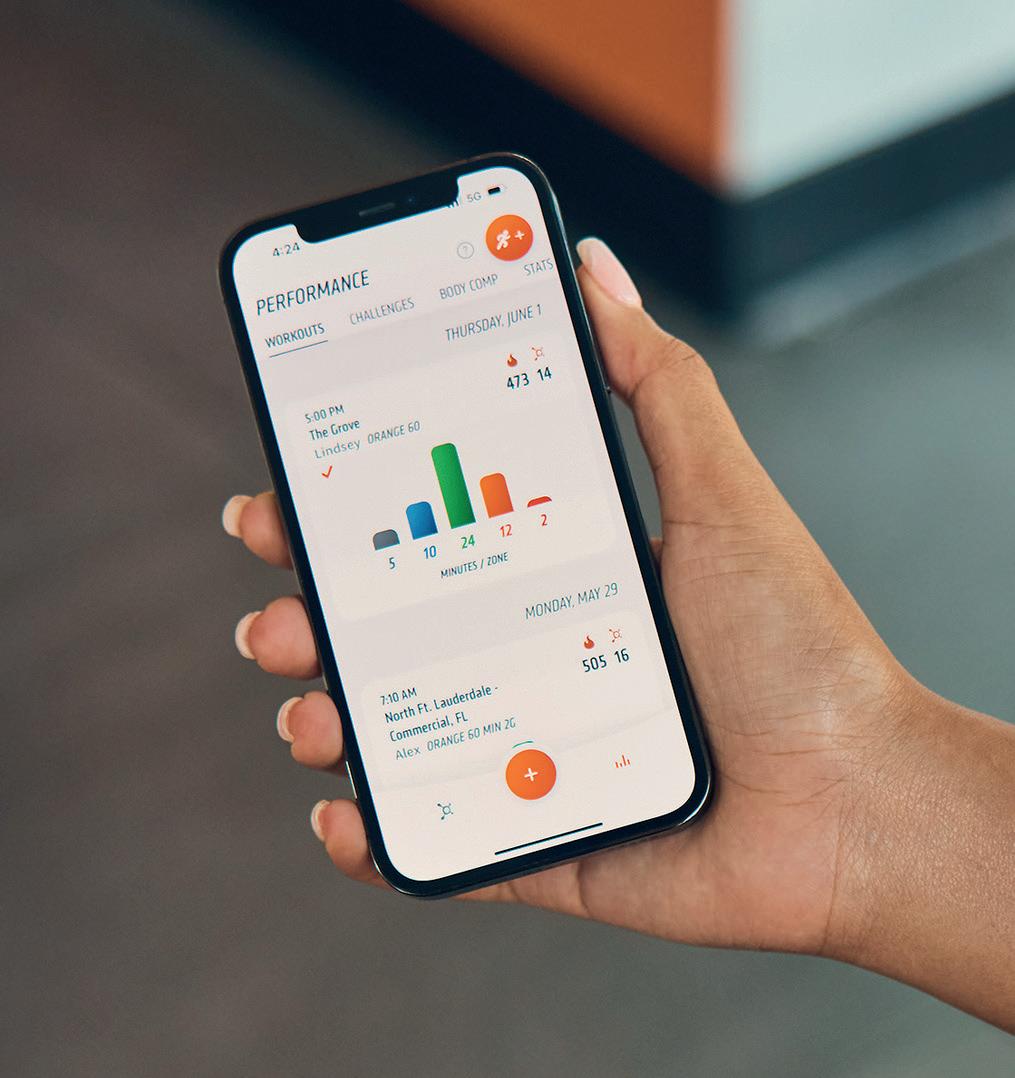
One exciting opportunity we have is to expand our presence in the healthcare market, due to all the data we collect
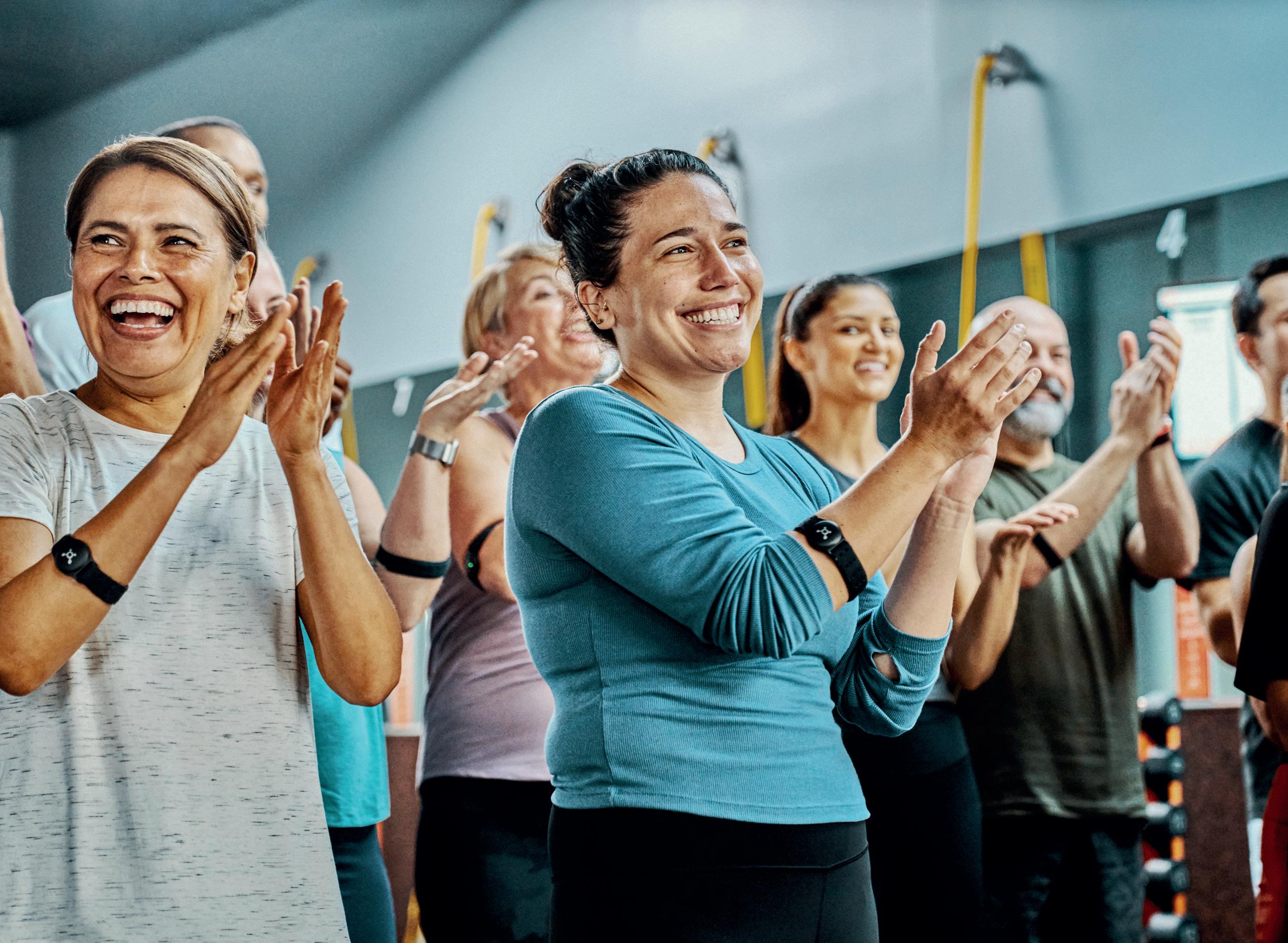 Orangetheory works hard to build community
Orangetheory works hard to build community
PROFILE
The business is built around the proprietory tech platform
PHOTO: ORANGETHEORY PHOTO: ORANGETHEORY PHOTO: ORANGETHEORY

with newcomers, who also receive onboarding emails and a coach-led debrief at the end of class. It ramps up really nicely and sets people up for success.
I think there’s probably still work for us to do around our messaging, making it even clearer that we cater for all levels so we appeal to more people. But once people come in, our conversion rate is high and referrals are strong. Members are also loyal, even with membership packages that are month-by-month in most markets. People stay for the results, not because of contracts.
Most members stay with us more than a year first time around, but the unique thing about our brand is that people leave and come back frequently; we don’t penalise that by charging additional enrolment fees. A quarter to a third of people who leave come back a second time and typically stay 50 per cent longer than they did the first time. Some come back a third time.
You recently changed strategy in the UK…
Our goal for Orangetheory Fitness is for our franchisees to operate the studios; we’re happy to acknowledge that they’re better at this than we are! What we focus on is advancing the product, technology and marketing, creating an amazing franchise system and support model.
Particularly in overseas markets, local knowledge is really important. We’ve learned and continue
to develop the muscle of how to maintain the core of our brand so it works outside the US, but we would never pretend to have the level of expertise required to locally nuance the offering.
With this in mind, in November we announced the sale of our four London studios, that had previously been corporately owned, to Digme Fitness. Digme is a new franchise partner, with Orangetheory’s London expansion now being led by Dan Williams – previously co-founder of WIT Fitness – who has joined the business alongside Digme CEO Geoff Bamber.
We’re really excited to bring them on as our London franchisee. They’re highly motivated, really believe in the product and already have the skillset needed to run successful studios. They’ve got a lot of horsepower behind them.
At this point, the plan is for them to own and operate, although the flexibility is there to bring on other franchisees within the territory if a fantastic partner comes along who wants to do a cluster.
What are your plans for the UK and Europe?
We have massive expectations for the development of Orangetheory Fitness in Europe and the UK.
We’re bullish about London. We’re saying four more studios by the end of 2025, but that’s a conservative estimate which gives our new franchise partner time
43 ©Cybertrek 2024 Issue 2 2024
Bucking the trend, members are loyal, even wtih monthby-month packages, says Long
PHOTO: ORANGETHEORY
to understand the model and drive performance at the existing locations. I’d say two more studios next year is realistic and likely more than two in 2025.
Outside London, we’re aiming for 16 sites by the end of 2026: some in the north of England, where we already have a few locations and some just outside the M25.
In mainland Europe, Spain is set to be our big growth market for 2024. We had a really good year there in 2023, with tremendous membership growth, and the flagship that opened there in 2022 has grown to be a very successful location. There are plans for five more clubs in Spain in 2024: in Barcelona, Madrid and one other new city.
We have locations in Poland and Denmark and a few other markets and all are performing decently, but for 2024 our European growth will really be focused on Spain and the UK.
Tell us about your flagship studios.
For us, a flagship isn’t about creating something unscalable just for the sake of marketing, where it’s treble the expense to open and impossible to make profitable. It isn’t pie-in-the-sky stuff: we want franchisees to look at our flagships and think ‘I could open that and be profitable’.
In Madrid, for example, our flagship includes an on-site training facility and meeting spaces, but the studio itself is only just slightly bigger than the norm for Spain. We have a great flagship in New York City, too, on the corner of Lexington and 58th Street. So they all have fantastic locations, but in every case, we want them to be model studios – showcases of profitability and operational excellence.
We’re eyeing two or three European cities to open flagships in 2024 or early 2025, with existing and potential new partners. For these sites, we might consider joint venturing, as they will drive brand visibility in Europe.
What are your growth plans?
Our international markets are generally 12–18 months behind the US in terms of fully recovering from COVID.
Canada, for example, had a tough time. They weren’t really fully clear to be open until mid-2022, and in 2023 they opened just a handful of units. They’ve had good success with Strength 50, but 2024 will be the first year of getting back to driving growth, with eight to 10 new locations already planned.
Latin America does well, with one key partner who’s going to open five to seven new units in 2024.
The other rapid growth market will be Japan. Had the pandemic not hit, Japan would probably be at


PROFILE
an important
the Orangetheory formula PHOTO: ORANGETHEORY
Personalisation
is
part of
The company has over 1,500 locations globally
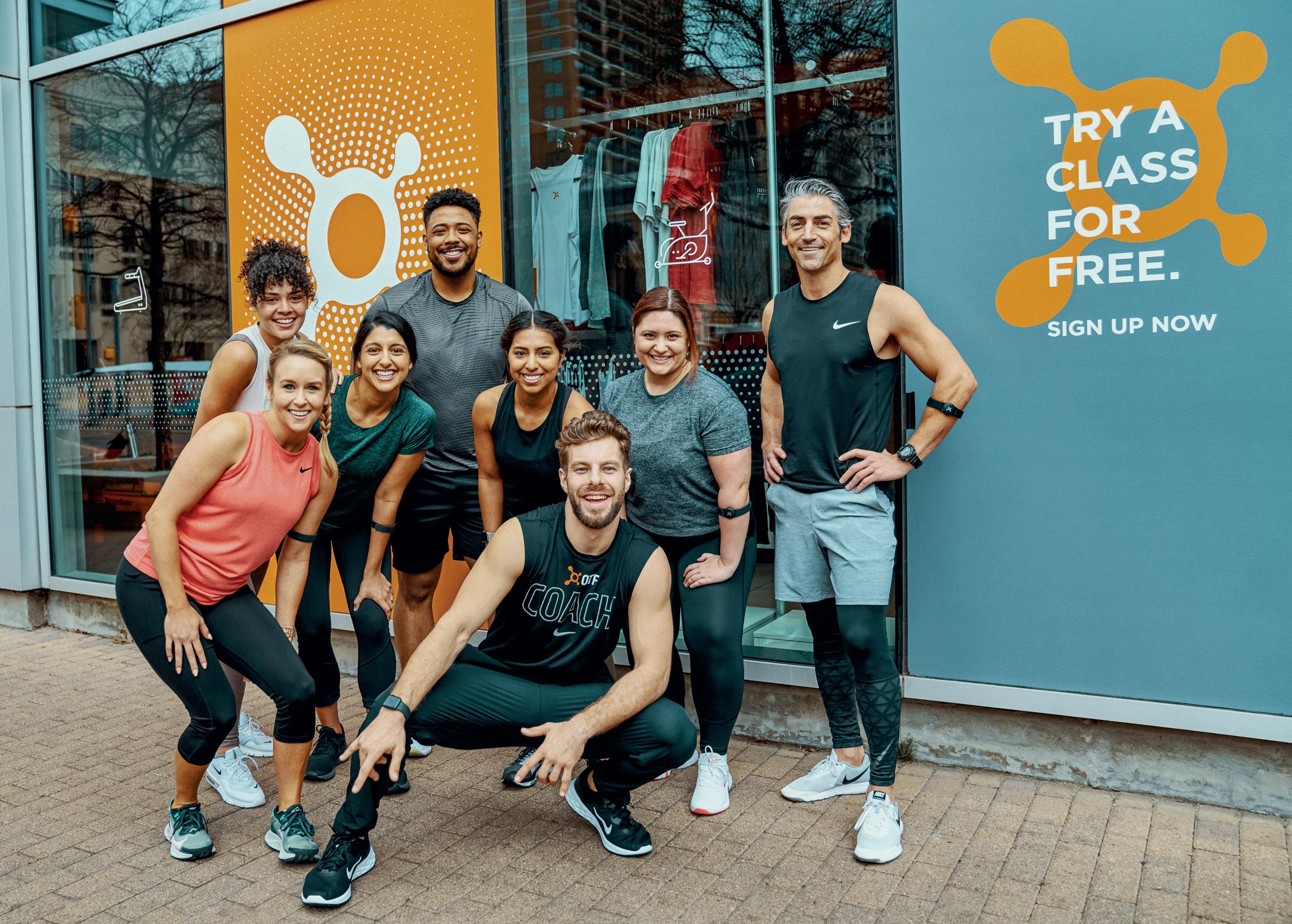
100 locations today. As it is, they’re at 14, but they’ve really figured out the localisation of the model and have an extremely strong fan base. We won’t open lots of new studios there in 2024, but it will be a set-up year for really rapid growth from 2025. This is a market that could get to hundreds of units.
Meanwhile, we’re aiming for about 75 new locations in the US in 2024, which still isn’t quite back to the volumes we achieved historically. We’re very much about quality over quantity, though. We could have a lot more stores in the US, but it wouldn’t necessarily benefit our franchisees or our brand. Having a profitable franchisee means a great experience for the member and that’s been our mantra from day one.
We always look for convenient locations in great areas that are spaced just far enough apart. We aren’t looking for crazy high volumes of storefronts, and I think that’s important to recognise. For all markets globally, we’d rather have fewer studios that are very successful and servicing our customers really well.
Any other exciting plans?
We’ve always had digital workouts on our app –strength, yoga, recovery – but in lockdown, we wanted to do something different from everything else
For 2024 our European growth
will be focused on Spain and the UK and in 2025,
Japan
out there. We built a product called Orangetheory Live: a digital interface where the coach can see all the members and their heart rates on-screen. We still have tens of thousands of members using it, but we haven’t marketed or scaled it because members returned to our studios as soon as they reopened.
There are, however, other things we might do with that platform down the road. I already mentioned adding more personalisation in
45 ©Cybertrek 2024 Issue 2 2024
PHOTO: ORANGETHEORY

Looking at Orangetheory 10–20 years down the road, international markets will be three to five times the size of the US. At that point, we’ll be talking 10,000 units globally
The company is merging with Self Esteem Brands
PROFILE PHOTO: ORANGETHEORY


the app, but we might also offer human-facing personalisation via our digital platform, using it as a coach console for convenient virtual calls to go through your performance, heart rate and so on.
Should we engage with a nutrition provider, this platform could be a gateway for that as well; we still aren’t directly doing anything with nutrition, even though it’s a critical part of getting results.
The other exciting opportunity, thanks to all the data we gather to showcase results for members, is to expand our presence in the healthcare market.
Over the years, we’ve worked closely with the American Heart Association and the CDC to monitor people’s improvement in cardiovascular output, and how that correlates with meeting the CDC’s guidelines for physical activity, and we already have some unique partnerships with healthcare providers, primarily in the US for now.
At present, there are two healthcare providers who will fully pay for Orangetheory memberships for their customers. They recognise the value we provide in getting those people healthier. Their productivity, their mental health, their healthcare costs… everything is so much better over time by staying consistent with a programme like ours.
Our big goal now is to work with more partners, getting Orangetheory subsidised or fully paid for by even more healthcare providers.
What are your challenges?
There are no deal-breakers, but we haven’t seen the improvements in economics and rents we’d hoped for in a lot of markets. The situation with lending also means there’s a point beyond which it’s harder to get funding.
We’ve therefore been optimising our studio footprint and set-up costs. When we first started out in 2010, we typically looked for 200sq m for a studio. As we grew and studios got busier, they organically got bigger, often 300+sq m. Now our prototype is back where we started, at 200sq m, which means our start-up cost is 30–40 per cent lower now. In the UK, for example, the total initial investment required to begin operating an Orangetheory franchise starts at £415k. Meanwhile labour costs are rising, which has challenged us to look at our model. We’ve always paid our coaches well and this has allowed us to continue running our standard model throughout everything that’s happened in recent years. However, we’ve reviewed our front-of-house operations and automated what we can at an administrative level –including empowering members to do more via the app – so the front-of-house role that remains is all about engagement. That makes it easier to recruit and also means we need fewer people: we’ve been able to go down from three to two or even one per studio.
There are obviously things we can’t control, but of those we can, we’re working hard to optimise what we do without negatively impacting the experience.
What are your long-term growth goals?
The lion’s share of our locations are currently in the US, with only around 200 outside our domestic market: around 100 in Canada and 100 rest-of-world. The exciting question is: where’s the tipping point where we’re bigger internationally than we are domestically?
We think parity is around five to seven years away, when we reach around 3,500-4,000 locations, and that 10-20 years down the road, the international
47 ©Cybertrek 2024 Issue 2 2024
Members get close guidance on their progress
PHOTO: ORANGETHEORY
I’ve grown a massive a nity for franchising. It’s so exciting to be able to provide the platform and toolkit for people to have their own successful businesses
markets will be three to five times the size of the US. At that point, you’re talking 10,000 global units, which I think is realistic. It’s going to take a long time – a decade or more – but that’s the long-term goal.
What continues to motivate you?
Fitness and wellness have always been at the heart of my passion and purpose, so I’m very excited about the things we’re going to do with the Orangetheory Fitness product itself to make it even better and more personalised.
I’m also excited about international expansion, because that’s a decades-long project with so much we can do year after year. And I’m excited about the potential to impact more people through healthcare partnerships, by removing
cost as a barrier to participation. That really is a win-win, as it will also accelerate growth for us.
Last but not least, I’ve grown a massive affinity for franchising. It’s exciting to be able to provide the platform and toolkit for people to have a successful business.
The success rate of franchise businesses is high compared to trying to do it on your own, but there are so many profitable options to choose from, all with great systems. Our secret weapon, I think, is that with Orangetheory it’s more than just a business decision. People choose us because they love the brand, love what it does for members and want to be part of it. We’re building on those incredibly strong foundations, and even though it’s been 14 years, it feels as though we’re just getting started. ●

PROFILE
Franchisees have a passion for the business, says Long
48 Issue 2 2024 ©Cybertrek 2024
PHOTO: ORANGETHEORY
Latham co-founded Orangetheory and developed the original workout


About Ellen Latham
Co-founder, Orangetheory
Ellen Latham is a trained physiologist with a lifelong passion for health and fitness. Her desire to be on the cutting edge of fitness inspired her to design The Ultimate Workout, which became the foundation for Orangetheory.
Latham is a partner and founder of Orangetheory Fitness and Owner of Ellen’s Ultimate Workout gym in Florida.
Inspired by her father Arthur Calandrelli, a physical education teacher and coach, Ellen has been motivating and training clients for over 35 years. She holds a BA in Physical Education and a Masters in Exercise Physiology.
Before perfecting her signature workout, Ellen worked at the Bonaventure Spa when it was the main fitness retreat for the stars, as well as managing Williams Island Spa and The Eden Roc Spa. She served as a TV fitness expert for six years, authored fitness columns for The Miami Herald and South Florida Sun-Sentinel and earned the title of Business Woman of the Year in South Florida. Through her position as fitness editor for Women’s Fitness magazine, Ellen began focusing on Pilates and opened the first group equipment-based Pilates studio in Fort Lauderdale, Florida.

PHOTO: IAN JACOB PHOTOGRAPHY / ORANGETHEORY





















































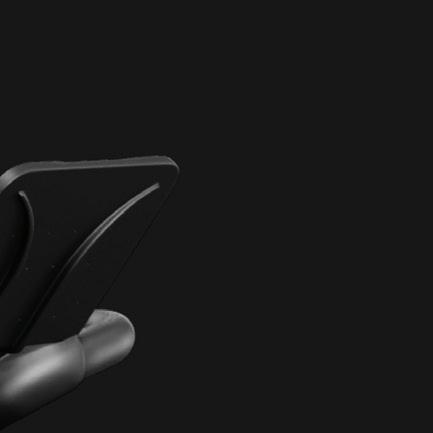












Everyone’s talking about...
Leases
Property experts say it’s a golden moment for health and fitness operators to secure leases, as the sector has come through the pandemic with its reputation largely intact and clubs are seen as desirable anchor tenants.
Kath Hudson finds out why landlords want to talk
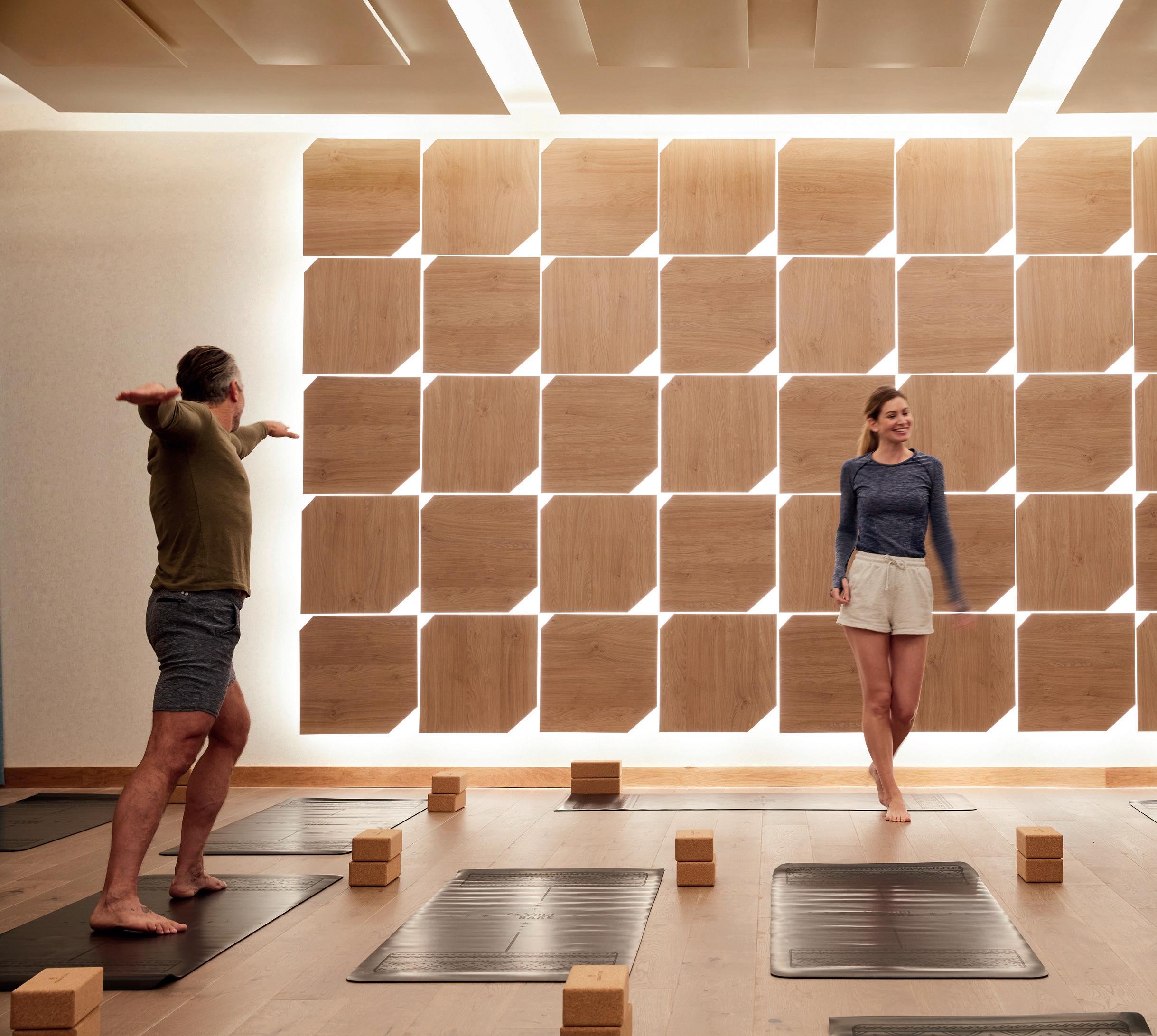
TALKING POINT 52 Issue 2 2024 ©Cybertrek 2024
PHOTO: THIRD SPACE/MARK SCOTT
Third Space Wimbledon, the latest opening for the high-end operator
It’s time for tenants to push back against service charges. I hate the way landlords hire third party advisors to spend money and get the tenants to write the cheque
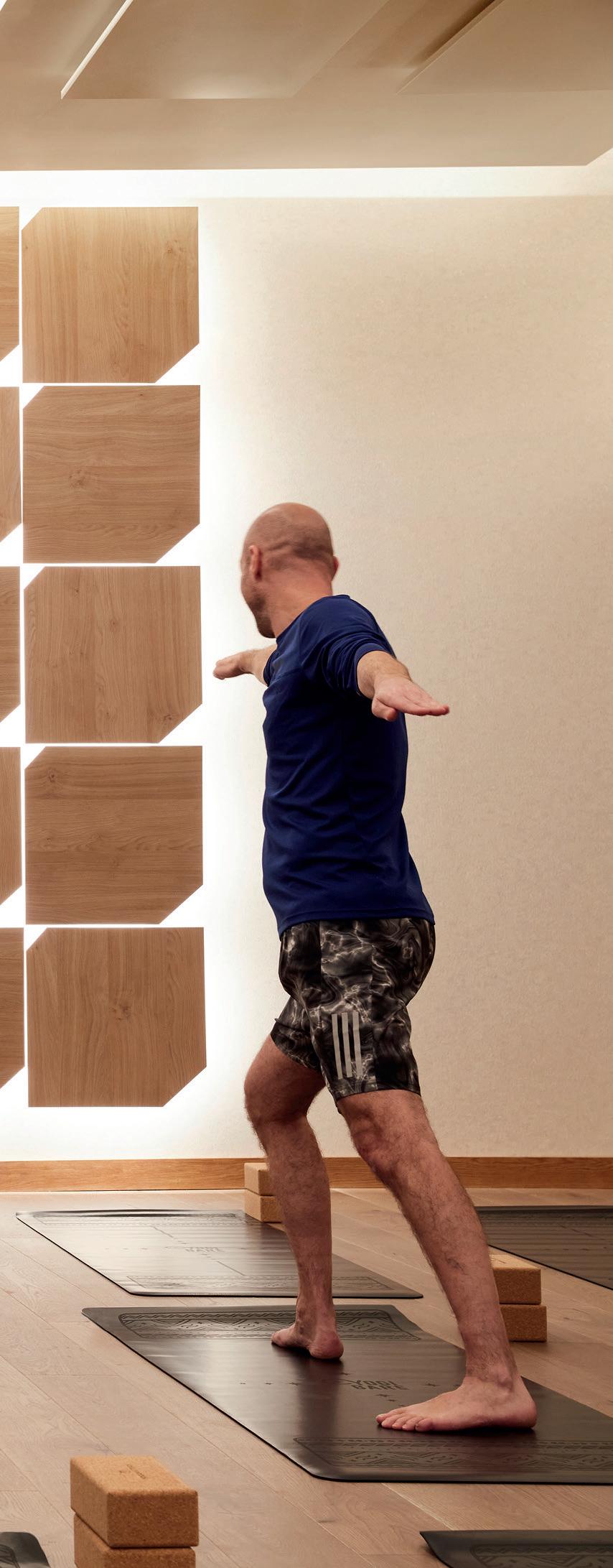 Colin Waggett CEO
Colin Waggett CEO
Third Space

From a real estate perspective, this is a golden opportunity for our sector. Historical competitors for space at ground floor and basement levels – large format retail and casual dining restaurants – are shedding space and office space is also being repurposed. More than ever before, landlords need us to take space, and provide an amenity for the rest of their building or development. The deals just need to be sustainable and the homework needs to have been done on demand and the cost base.
As should be the case, we’re seeing more landlords prioritising environmental criteria to protect their investment. Although this can impose costs at fit-out, it should save operating costs in the long-term.
Landlords are also taking more interest in long-term use of the space: gyms are seen as part of their amenity and they want to know who their tenant will be, as well as whether they can pay the rent.
We’ve come out of a period of rent stability and low inflation –both are changing so both parties need to think carefully about rent review terms. Open market reviews in our sector are challenging because there is often not much comparable evidence, but also index linking can be dangerous when inflation and rent levels are de-linked for a time.
When signing a lease, consider the true cost of getting into the property: the rent, the quality and condition of the building and exact terms of future rent reviews. Also be aware of the options if you need to get out. Hopefully you’ll never need to, but if you do it can drag a whole company down. I’ve certainly learned more in the past about leases by negotiating our way out of them.
It’s time for tenants to push back against service charges! I hate the way this works and how landlords hire third party advisors to spend money – often ineffectively – and get the tenants to write the cheque.
53 ©Cybertrek 2024 Issue 2 2024
Waggett says he’s learned a lot in the past from having to negotiate out of leases
PHOTO: THIRD SPACE
 PHOTO: LYNDONYEOMANSLLP
PHOTO: LYNDONYEOMANSLLP

Health and fitness is considered a positive footfall generator
Neil Yeomans
Partner
Lyndon Yeomans LLP
The pandemic has obviously been a challenging period for both landlords and tenants. As landlords were also in difficulty with their own debt repayments there were fraught and complex rent concession negotiations on closed businesses in all markets. As business has slowly returned to normal, we’ve seen the introduction of pandemic clauses in new leases and a tougher, more protracted lease negotiation arena emerge.
On reflection, given the pandemic closures and tough economic
conditions, the sector has held up very well, with gym operators emerging from the crisis largely with a positive reputation. There has generally been a resilient response from health and fitness operators, with less CVA/restructuring deals in comparison to other sectors, such as retail and hospitality.
The small box studio-style operators have been the hardest hit, due to factors including expensive town centre locations, the work from home shift and the difficulty of refinancing. This has resulted in large numbers of failures and closures, particularly in central London.
However, in the affordable fitness arena the big players have shown impressive resilience and
54 Issue 2 2024 ©Cybertrek 2024
TALKING POINT
David Lloyd is reporting strong trading and an appetite for growth as it moves to refinance

are still pursuing active expansion programmes, as well as reporting a return to pre-pandemic membership numbers. At the high end, the challenges being faced by Equinox are counterbalanced by the growth of Third Space in London, while David Lloyd is reporting strong trading and a desire to expand further.
The health and fitness sector is showing ‘bouncebackability’, with a number of interesting deals taking place on closed health club and gym sites that are still proving to be an attractive proposition.
In Poole, the YMCA has taken over a former Fitness First club. Hampshire-based trust, Horizon Leisure, has refurbished the former Sports Direct club in Guildford.
Just Fitness (a new health and fitness brand from Bannatyne) is operating the site of the former DW Fitness in Westwood Cross Broadstairs. In Bradford, an Easy Gym site is under offer to a new independent female-only gym.
I believe there’s reason to be positive in both the short and medium term. Gym operators are viewed as possible anchor tenants in mixed use schemes and health and fitness is considered a positive footfall generator. Rents are generally stabilising, investor interest remains strong, the mental health benefits associated with fitness are driving membership numbers and there’s positivity from operators, so the future looks healthy.
TOP TIPS
What to look for in a lease
Neil Yeomans
Fixed five-year rent review structure. Normally fixed cap on RPI – say 2/2.5 per cent per annum (pa) increase or cap and collared consumer price index (CPI) or retail price index (RPI) – increases 3 per cent pa and 1 per cent pa. We’re also seeing lower open market value (OMV) or a 2 per cent pa compounding review structure as seen in the retail sector.
Flexible alienation provisions. Ability to assign/sub-let whole and sub-let part. Sub-let at OMV plus ability to grant up to 25/35 per cent of the whole to licenses/concessions to help future-proofing.
Service Charges. Tenants in schemes will look to exclude items such as sinking fund and non-repair work that landlords carry out, such as improvements, redevelopment or refurbishment items.
Tenant’s standard shell developer specifications: highlight acoustic requirements and detail what the tenant requires to keep its fit-out capital expenditure costs under control.
24-hour trading hours. Many operators push for 24-hour trading ideally, in practice some flexibility will be shown depending on individual site circumstances.
Monthly rental payments
These assist cashflow.
15-year lease term with tenant-only break clauses (usually 10-year break and 6/12 month notice).
55 ©Cybertrek 2024 Issue 2 2024
PHOTO: DAVID LLOYD
Landlords are more focused than ever on securing a strong covenant
Oliver Tester
Director of property acquisition
The Gym Group
The long-term proposition for low-cost fitness is attractive to landlords. The UK has seen many closures in the retail, office and hospitality sectors, so landlords are more focused than ever on securing a strong covenant, giving greater certainty and attractive investment yields.
Gyms can breathe new life into underutilised buildings along local high streets or out of town retail parks, helping landlords and developers create a mixed-use destination which people will travel to, while also increasing average dwell time. Another opportunity we’re seeing is with new residential developments: we’re talking to house builders who are keen to include The Gym Group within the scoping phase of their future mixed-use developments.
We’re witnessing ESG becoming increasingly important for landlords. As the UK’s first carbon neutral gym chain, as well as being AAA MSCIrated, and with a commitment to a science-based target to achieve net zero by 2045, The Gym Group is using its green credentials to strengthen its proposition as a tenant.

This period is offering great expansion potential, especially in urban residential areas. We’ve just opened our latest site in Uxbridge and will be launching Coventry and Stafford by the end of the year, bringing our total to six new gyms in 2023. Next year we’re ramping up expansion to 10 to 12 launches.

56 Issue 2 2024 ©Cybertrek 2024
TALKING POINT
Tester says gyms are great anchor tenants for mixed-use sites
Urban residential areas show great expansion potential
PHOTO: THE GYM GROUP PHOTO: THE GYM GROUP
Thomas Rose
Co-founder P-THREE
The COVID-19 pandemic has brought about an unexpected shift in the priorities of landlords, who are now compelled to curate more appealing spaces to draw occupants back into offices. This shift, coupled with the contemporary emphasis on wellness, has elevated the desirability of gyms to an unprecedented level.
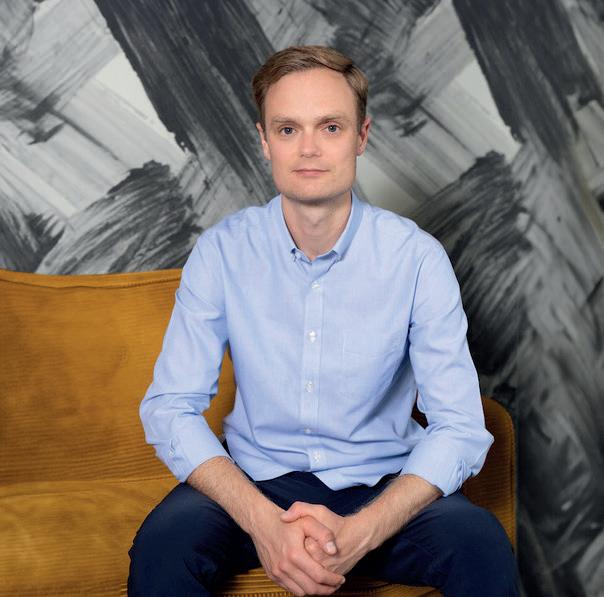
Health clubs are now ranking alongside artisan coffee shops and esteemed food retailers like M&S Simply Food, in terms of the brands landlords aspire to secure for their developments. With landlords increasingly eager to integrate wellness offerings into their assets, one could argue that this represents a once in a generation opportunity for gym operators.
We’re witnessing a trend of landlords actively educating themselves about the fitness market. While their primary objective remains securing successful tenants who pay the rent, there is now an additional focus on ensuring these tenants have sustainable business plans that will endure for the long term, over the 15-year term of a lease.
Whether it pertains to gyms, restaurants, cinemas, or other leisure operators, landlords are becoming more astute in their due diligence efforts to align
Health clubs are now ranking alongside artisan coffee shops and esteemed food retailers
with operators possessing viable and relevant business models.
At P-THREE, we represent Third Space, a brand many landlords and developers are keen to incorporate into their projects. However, Third Space are rightfully very selective when it comes to shortlisting suitable locations. Within the property world, the studio format or boutique sector continues to reign supreme in terms of profile, although some recent consolidation has prompted a note of caution.
The studio concept resonates well with landlords because it necessitates smaller sites which can easily transform an old shop or restaurant unit. Moreover, studios do not have complex requirements like pools, which means that, in
case of failure, they can be readily repurposed for other operators. Hence, a mid-market chain with a pool may be less enticing to landlords compared to the high-end full service offer, budget chains with a clear plan, or the studio model.
As we transition into a post-COVID world, the importance of a healthy lifestyle has become universally acknowledged. For landlords, the focus is on crafting the ultimate real estate destination: a compelling line-up of ground-floor tenants can translate into higher rental rates for the office space above, where the true value lies. This presents a significant opportunity for fitness, particularly in major cities like London, where the array of gym occupiers is relatively limited.
57 ©Cybertrek 2024 Issue 2 2024
PHOTO: P-THREE
Rose sees the rental landscape evolving
Health club operators often take spaces which are not suitable for other uses
Kevin Conibear
Director & head of urban markets Fleurets
The majority of landlords and tenants held constructive negotiations during COVID and agreed either rent-free periods or rent deferment during closure periods. Many of these negotiations were specific to individual circumstances, but we did witness a trend of similar agreements.


Since then, some operators have looked to incorporate pandemic clauses into leases, so there is a defined mechanism to address periods of enforced future closures.
Landlords have increasingly turned to health and fitness, competitive socialising and experiential leisure to diversify their tenant mix. Gym use is attractive because it drives footfall, increases dwell time and attracts a wide-ranging demographic. Although there’s significant competition for
space, health club operators often take spaces which are not suitable for other uses, as they don’t need prominent frontages and can often occupy upper or lower floors.
Given the commitment of leases, it’s worrying that so many tenants don’t take professional advice before signing agreements. It’s worth paying careful consideration to the timing of rental payments, (monthly or quarterly) service charge and repair obligations, keep open clauses, alienation provisions (the ability to assign or sublet) and importantly the rent review mechanism. Generally, rents are reviewed every five years
and many parties agree a cap and collar, so there is a maximum or minimum that the rent can increase.
Since the pandemic there have been a multitude of issues to navigate and a general nervousness around the economy which has dented confidence and stalled some expansion plans. The extremely challenging economic period is causing some consumers to reduce their spending, however the nation is becoming much more health conscious and as we strive to lead a healthier lifestyle, there’s no doubt gyms will retain their popularity. Hopefully a number of the economic issues are stabilising and improved confidence will follow. l
58 Issue 2 2024 ©Cybertrek 2024
TALKING POINT
While consumer spending has reduced in other areas, gyms are still busy
PHOTO:FLEURETS
PHOTO: SHUTTERSTOCK / BODHAN MALITSKIY






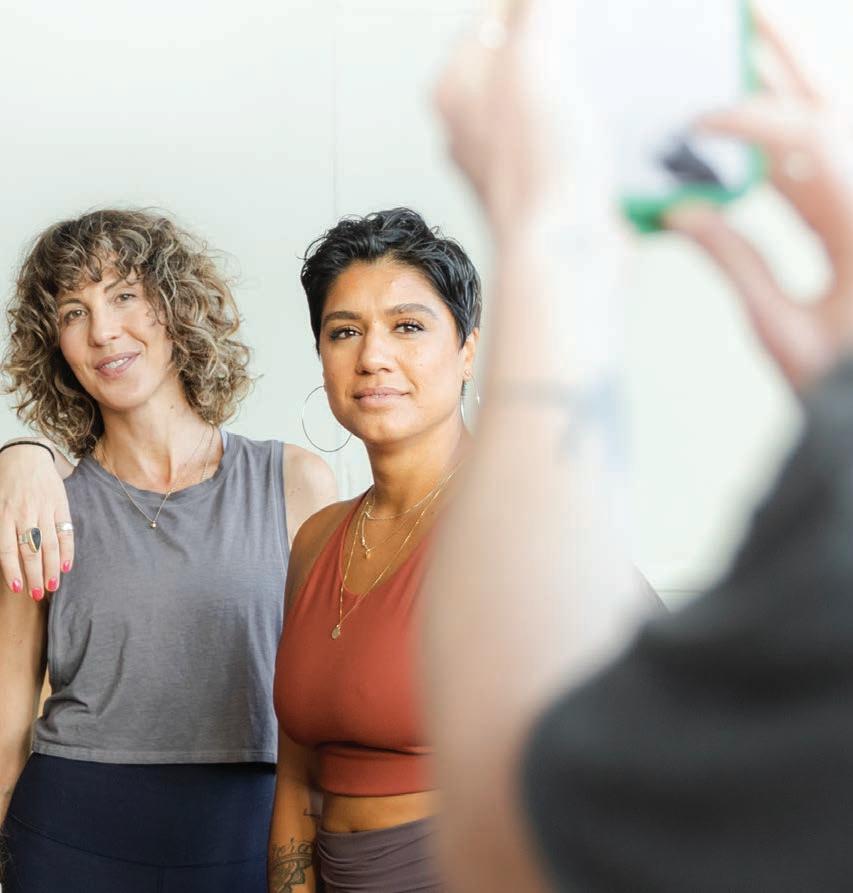
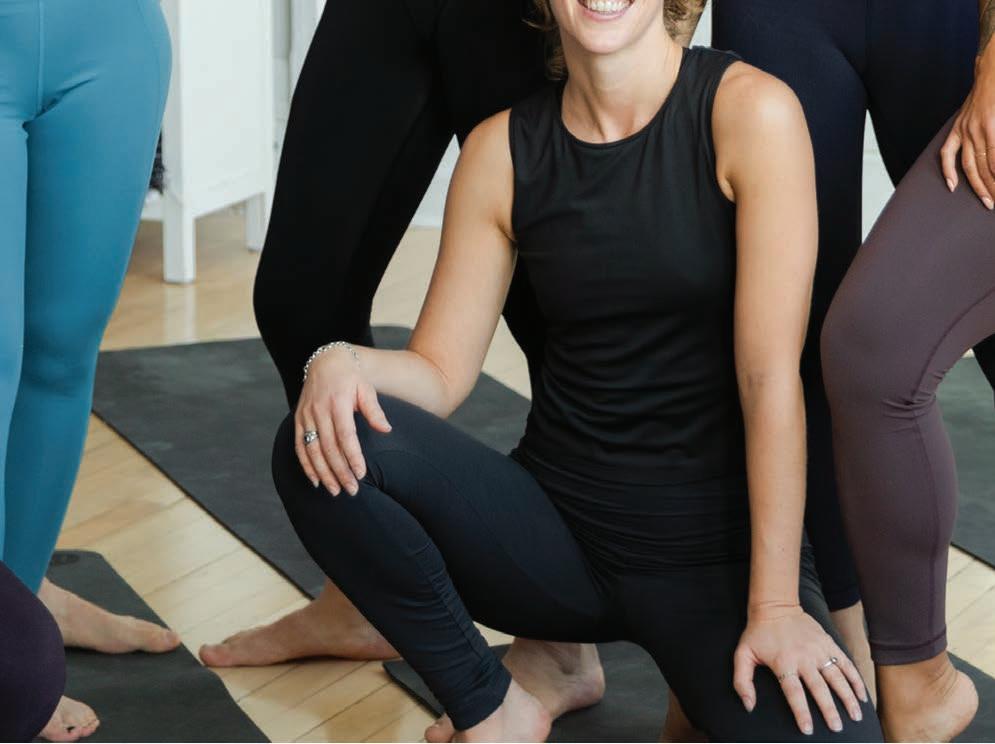
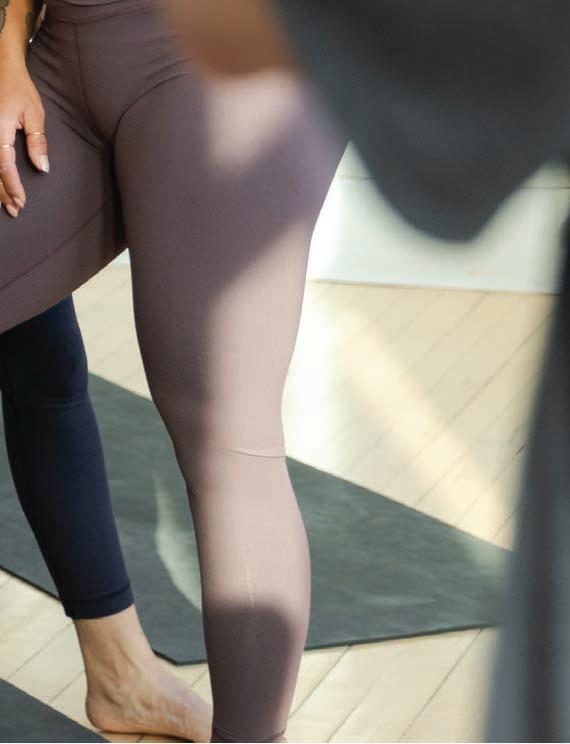
There’s only one studio like yours. Everything you need to run—and grow—your business. There’s only one software like ours. To book a demo or learn more, visit uk.mindbodyonline.com
POWER BRAND
Liz Terry looks at which operators are most recognised by consumers, using Kantar’s latest brand insight
Brand expert, Kantar, has curated a selected ranking of health club operators and overlaid consumer insight data to show how they perform in relation to perceived value and consumer awareness.
The research sample used to create the insight was comprised of consumers who are ‘category users’, ie, are or have been members of a health club.
Many operators are not included, so the list is not comprehensive, but it does give valuable insights into customer sentiment, which is an area of growing interest for the sector.
The rankings are part of the Kantar BrandSnapshot powered by its BrandZ service, which delivers intelligence on 10,000 brands in more than 40 markets, offering a quick read on each brand’s performance.
Listed in the health and fitness operator segment are Pure Gym, David Lloyd Leisure, Fitness First, Virgin Active, Nuffield Health, JD Gym and Everyone Active. Also assessed are Crossfit, Les Mills and Peloton.
Awareness rankings
The overall ranking of consumer brand awareness – based on a sample of 401 people and assessing the brands by the percentage of people who are aware of them when prompted – shows Pure Gym as the UK health and fitness operator with the highest level of consumer awareness in the group at 92 per cent.
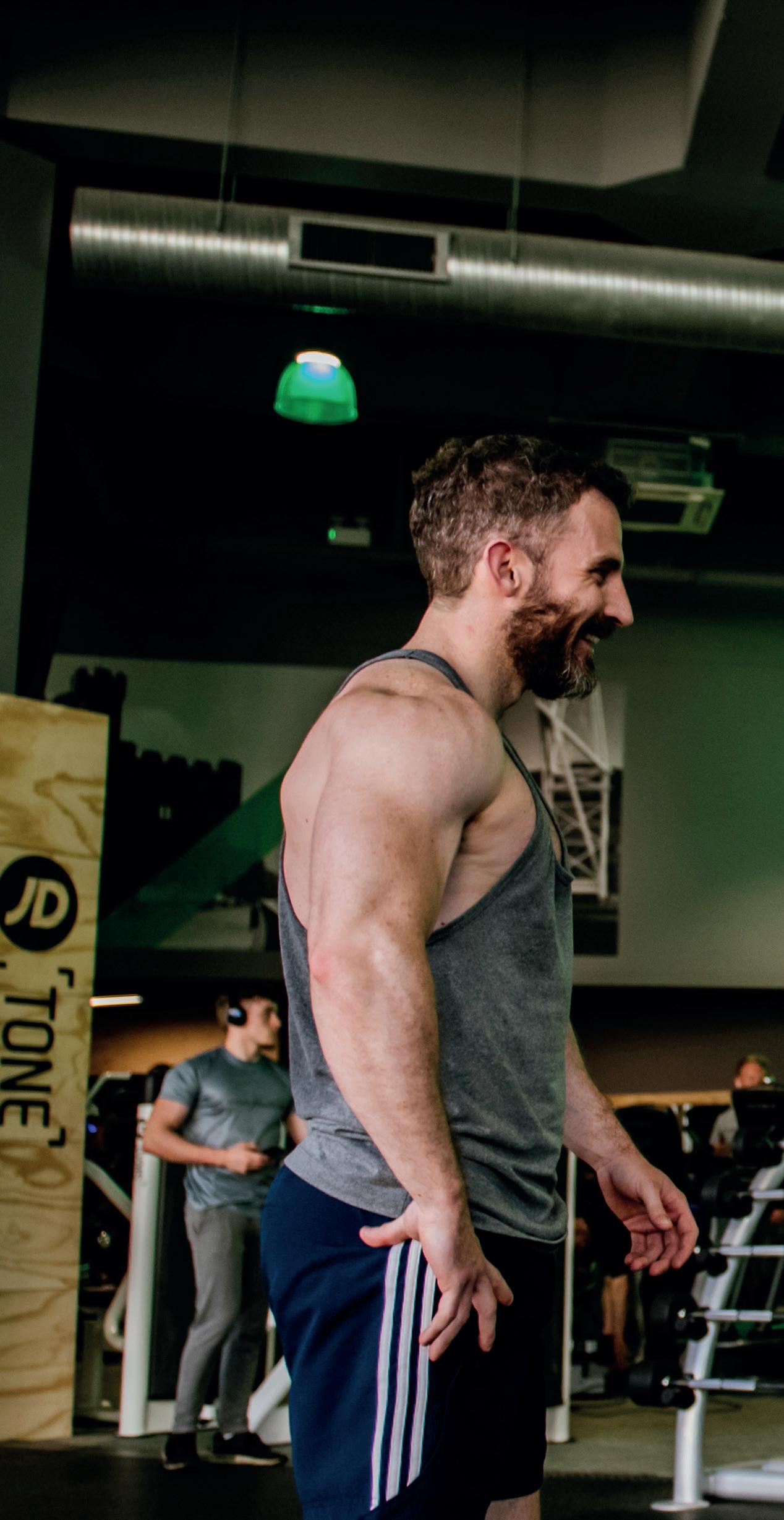
DLL comes in at 78 per cent – the same position as fitness brand Peloton – with Fitness First close behind at 76 per cent.
Virgin Active is next at 72 per cent on a par with Nuffield Health, with JD Gyms on 78 per cent and Everyone Active on 41 per cent.
Crossfit comes in at 73 per cent and global brand Les Mils Mills at 50 per cent – this is likely because the Les Mills brands, such as Body Pump, have higher rates of consumer recognition than the name of the company.
Insight into perceptions of pricing Kantar also assessed perceptions around pricing, finding a wide range of results.
INSIGHT 60 Issue 2 2024 ©Cybertrek 2024
Table 1 Brand awareness
Selected health and fitness operators
The percentage of people who are aware of the brand when prompted All respondents are category users
Pure Gym
David Lloyd Leisure
Fitness First
Virgin Active
Nuffield Health
92%
78%
76%
72%
72%
JD Gyms 68%
Everyone Active 41%
©
Pure Gym is seen as ‘great value’ by consumers, as is JD Gyms, with this meaning, as expected, that they ‘deliver great value to customers at a low price point’. Kantar says this leaves room for the brands to leverage their strong position in negotiations and offer premium extensions, as well as advertising their value.
In the next category, Fitness First and Everyone Active are seen as ‘value’ brands, which Kantar says means they rely on pricing to sustain business, but in the longer term could benefit from brand-building. Advice is to communicate price advantage when compared with competitors and emphasise quality and value in marketing.
Virgin Active is seen as ‘margin risk’, which, according to the insight, means it “could be in


Kantar researched key health club operators to create an insight tool

trouble if it doesn’t demonstrate value to its members’. Kantar recommends investing in the brand and limiting the use of price promotions to those that will drive people to do a trial. Also to create ‘bundle’ options to improve value perception, potentially using a ‘good, better, best’ strategy.
David Lloyd Leisure is seen as ‘high priced’, meaning it needs to ‘ensure brand associations are well supported and that it ‘could be losing custom at the point of sale’. Advice from Kantar in this situation is to ensure smaller ‘unit sizes’ are available for consumers – for example, as a trial or an affordable treat – and to reframe the value by using less quantifiable concepts such as time, happiness and pleasure in messaging.
61 ©Cybertrek 2024 Issue 2 2024
Kantar Group and Affiliantes 2022
PHOTO: JD GYMS DARDIFF
Nuffield Health is seen as ‘overpriced’, meaning it might ‘risk the need to rely on price promotions’, which is interesting, given Nuffield is currently running a ‘no joining fee and get two months free’ offer (@ 1 March 2024).
Kantar did not seek to establish if consumers value Nuffield’s links to the medical sector and its more holistic offering or the effect this is having on perceptions.
In its report, Kantar advises Nuffield to identify weakness in brand perfections, especially among non-customers and seek cost reductions to lower price levels, while also checking if the operation is over-depending on price promotions.
Demand power
Kantar has measures it calls ‘Demand Power’ which it uses to assess a brand’s power to capture significantly more volume of business and ‘Future Power’, which indicates its potential to gain value share in the future. It also assesses ‘Pricing Power’ – the ability to command a price premium.
Looking at these measures one at a time, Pure Gym comes top for Demand Power with a score of 20.8 per cent with DLL a distant second at 12.1 per cent.
Fitness First sits at 10.8 per cent, Virgin Active and Nuffield Health at 8.4 per cent and JD Gyms at 9.3 per cent. Everyone Active is at 5.4 per cent.
Demand Power estimates a brand’s volume-share based on brand associations. Calculated from measures of how ‘meaningful’, ‘different’ and ‘salient’ the brand is, Demand Power is reported as a percentage.
Pricing power
Pricing power is calculated only by asking those who would consider purchasing the brand, with a score of 100 representing the “justification of the brand’s equity to the category’s average price”.
David Lloyd scored most highly at 103, with PureGym close behind with 102 and JD Gyms at 100.
Everyone Active and Fitness First tied at 98 and Nuffield Health came in at 97. Virgin Active was at 95.
In the supplier group, Peloton was 107, Crossfit 102 and Les Mills 99, showing they have high levels of consumer awareness when it comes to value.
Future power
Kantar also measures ‘Future Power’ – the probability that a brand will grow value share in the next 12 months, based on the strength of current brand associations. This measure is expressed as an index, where the average score is 100.
Everyone Active comes out on top with 124 – one of the highest scores – with PureGym second with 113 and David Lloyd with 109.
JD Gyms is next with 105, then it jumps to Fitness First with 93, Nuffield Health with 92 and Virgin Active with 86
Kantar analysis also contains a SWOT analysis, created based on scores, with advisory notes relating on standardised variables and each one is detailed below More: www.kantar.com
Everyone Active is seen as inclusive, respectful and egalitarian by Kantar’s consumer panel
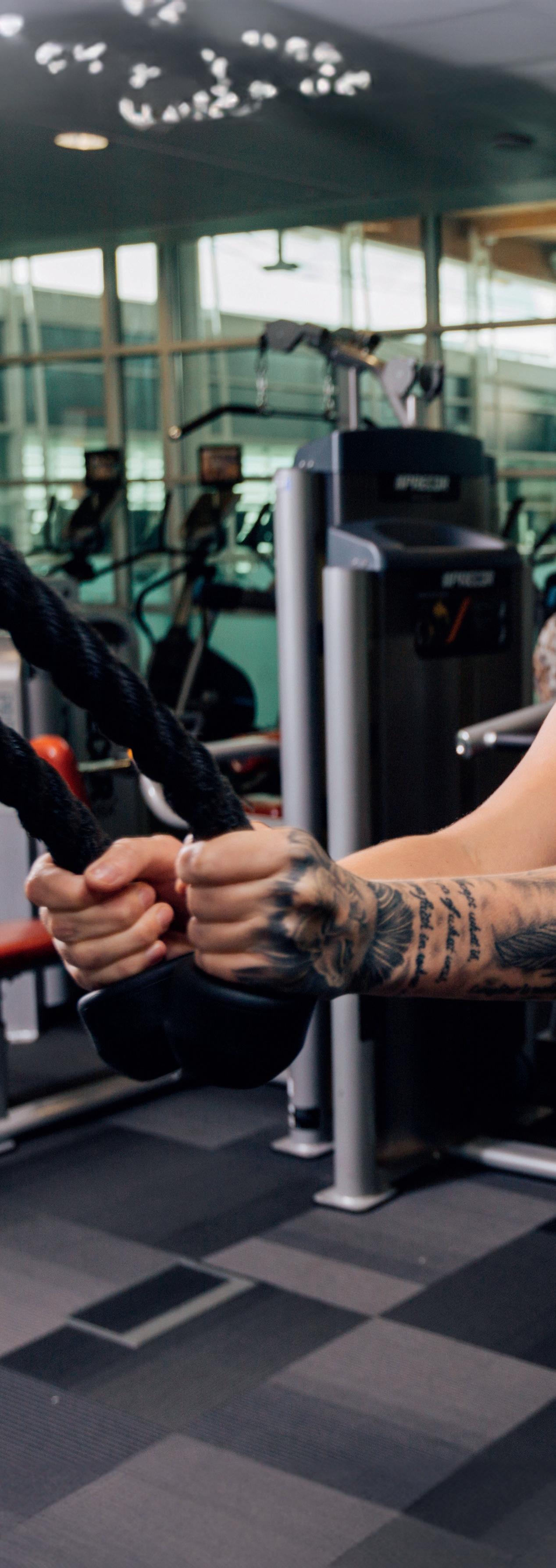
INSIGHT
62 Issue 2 2024 ©Cybertrek 2024
PHOTO: EVERYONE ACTIVE / DANIEL LLOYD
Everyone Active runs facilities under contract for local authorities

Kantar SWOTs highlights >>>
>>> Everyone Active SWOT
Strengths
● Your brand has a distinctive personality and is seen as inclusive, respectful and egalitarian
● Your brand is a bit cheaper than others and seen as fair value for money. Make sure to communicate your price advantage over competitors
Weaknesses
● Kantar BrandZ data shows no specific weaknesses for Everyone Active Opportunities
● Consumers find your brand attractive and effective, making it highly meaningful for them – can you leverage this further?
● You’re converting prospects into customers really well
● This is a small brand which is primed for growth. It is challenging well and threatens the larger brands in the category
● Many consumers are loyal to one brand in your category, so ensure you invest in brand-building
● You’re a brand in demand with potential to attract more people if they knew you
● You’re primed for growth – make sure you activate across all channels to realise growth
Threats
● You may struggle to leverage marketing activity until you can raise brand awareness
● PureGym is likely to be growing over the next year and may steal your share
© Kantar Group and Affiliantes 2022
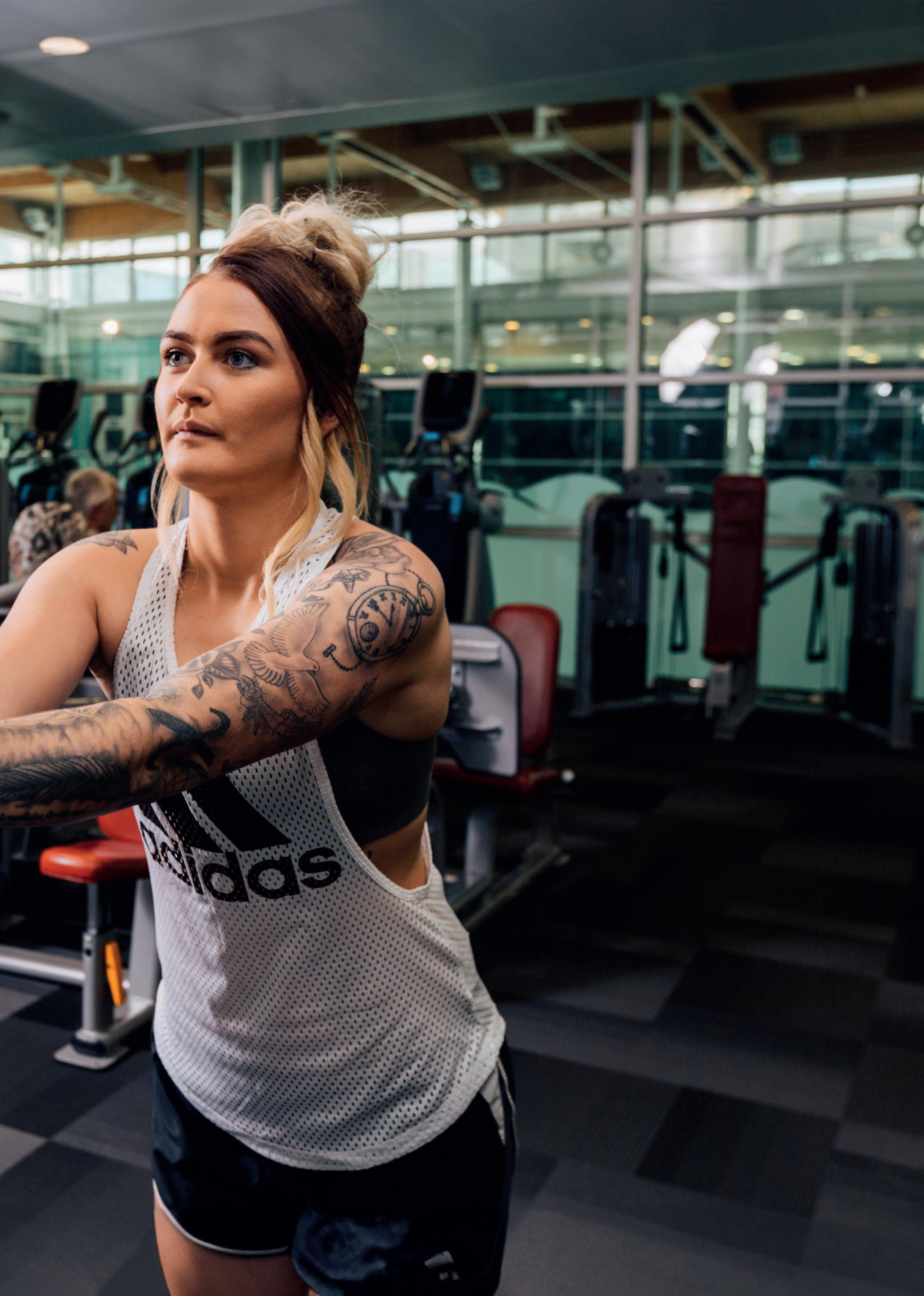
63 ©Cybertrek 2024 Issue 2 2024

>>> Nuffield Health SWOT
Strengths
● You have lots of regular users – make sure you build your brand through delivering a great experience
● Your range of products and services is appreciated
Weaknesses
● There’s room to improve awareness of your brand
● Too many non-trialists are apprehensive about the brand. How can their pre-conceptions be overcome?
● Your brand’s salience is low
● This brand is not in a successful position, being a small brand with weak equity
● You are not justifying your brand’s current price
● You brand lacks differentiation in some areas
Opportunities
● You’re top of mind with more consumers than are currently using you – can you exploit this mental advantage?
● Your brand is seen to make peoples’ lives better – leverage this in your positioning and communication ideas
● You have a very well-defined brand personality
● Target Virgin Active to steal share from: they are most vulnerable in the short term
● Many consumers are loyal to one brand in your category, so ensure you invest in brand-building
● You’re a brand in demand with potential to attract more people if they knew you
Threats
● Your customers are actively looking for an alternative
● Everyone Active, PureGym are likely to be growing over the next year and may steal your share
● Based on the number of considerers, your levels of purchase/usage are low. Check your activation around decisions at the point of sale
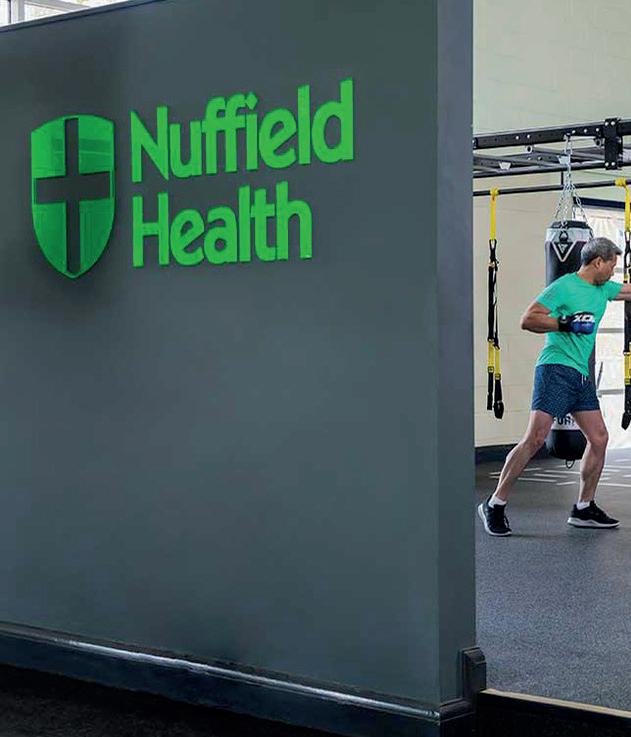
INSIGHT 64 Issue 2 2024 ©Cybertrek 2024
PHOTO: NUFFIELD HEALTH
© Kantar Group and Affiliantes 2022
Kantar advises Nuffield to activate its points of sale

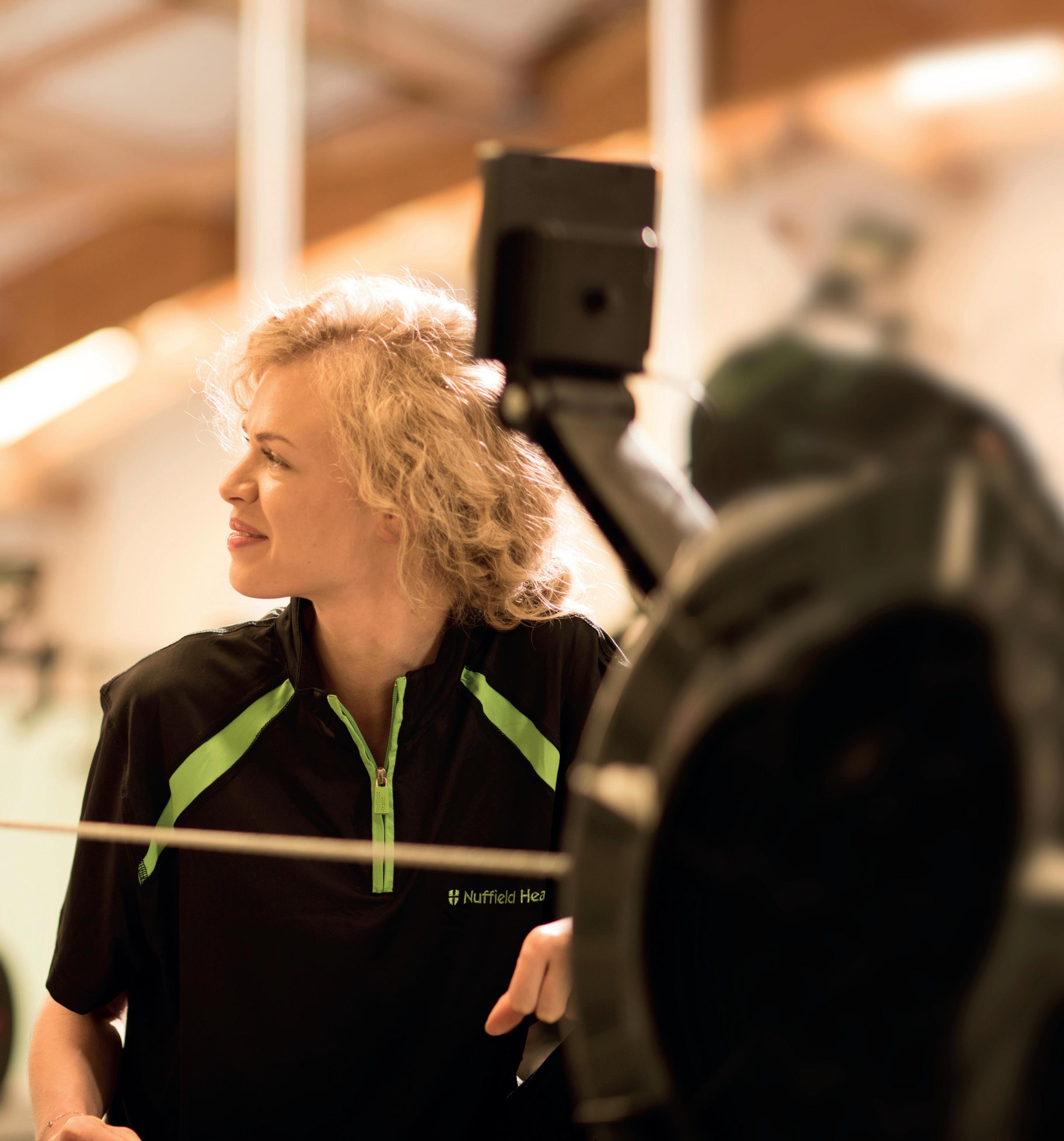

Nuffield’s range of products and services is appreciated, but there’s room to improve awareness of the brand
65 ©Cybertrek 2024 Issue 2 2024
PHOTO: NUFFIELD HEALTH
PHOTO: NUFFIELD HEALTH
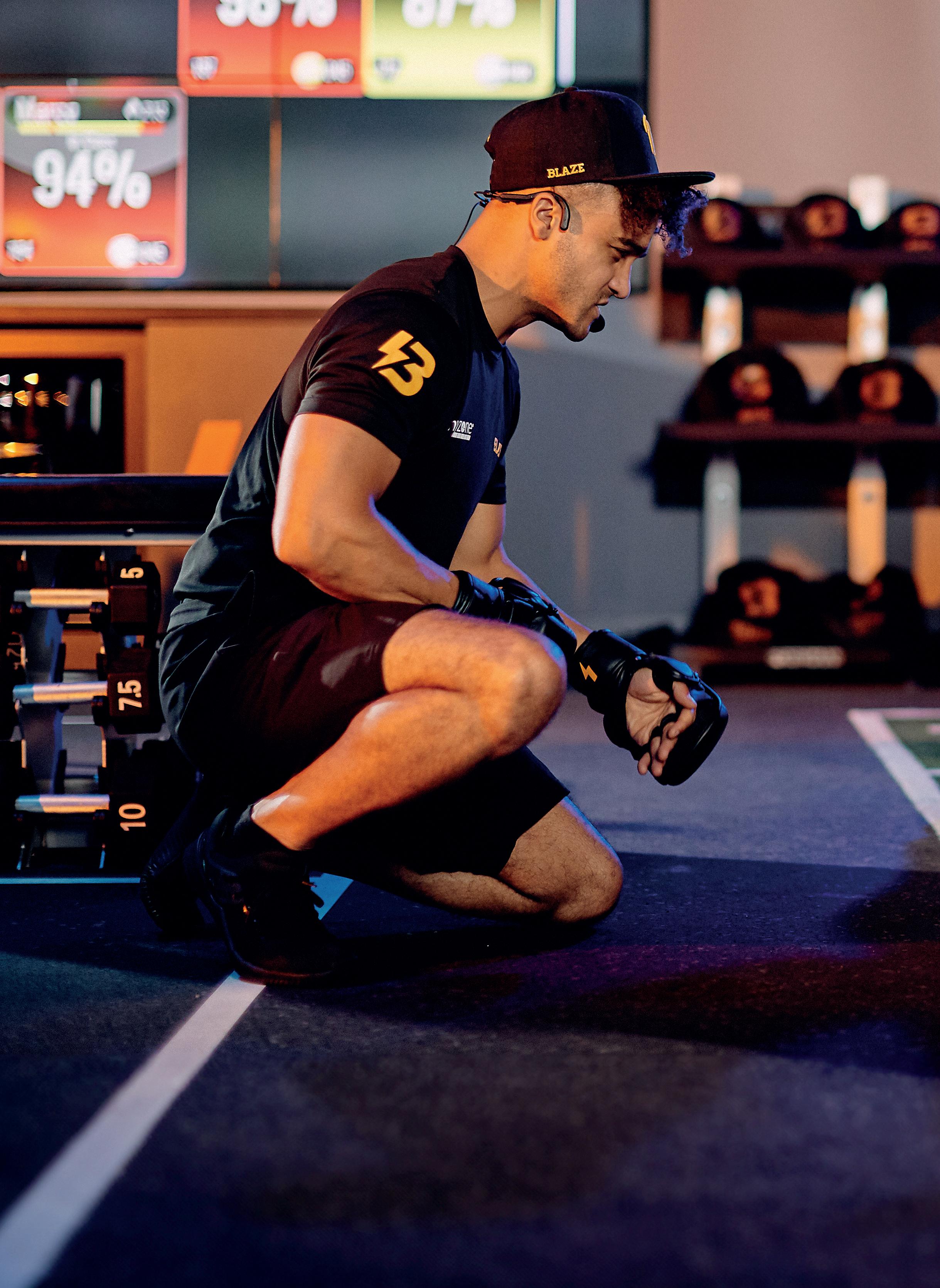 >>> David Lloyd Leisure SWOT
>>> David Lloyd Leisure SWOT
Strengths
● You have lots of regular users – make sure you build your brand through a great experience
● Your brand has a distinctive personality
● Consumers have a meaningful connection with your brand
● Your range of products and services is appreciated
● You are very familiar to consumers
● Your customers tend to reject alternative brand choices
● This is a strong brand with potential to grow further. Current marketing is effective and should be sustained
Weaknesses
● You're well known but not enough people have tried the brand
● Many trialists wouldn't consider buying the brand again. Could the brand experience be enhanced?
● You brand lacks differentiation in some areas
● Too many non-trialists are apprehensive about the brand. How can their pre-conceptions be overcome?
Opportunities
● Many consumers are loyal to one brand in your category, so ensure you invest in brand-building
● You're top of mind with more consumers than are currently using you – can you exploit this mental advantage?
● You're a brand in demand with potential to attract more people if they knew you
Threats
● Based on the number of considerers, your levels of purchase/usage are low. Check your activation around decisions at the point of sale
● Your brand has high price perceptions with a risk of consumers trading down. Make sure your products are available in affordable packages
● Your customers are actively looking for an alternative
● Operators such as PureGym and Everyone Active could pose a future threat to your market share
INSIGHT
66 Issue 2 2024 ©Cybertrek 2024
© Kantar Group and
2022
PHOTO: DAVID LLOYD LEISURE
Affiliantes

67 ©Cybertrek 2024 Issue 2 2024
David Lloyd is familiar to consumers and has potential to attract more people
Kantar says JD Gyms is a strong brand with potential to grow

68 Issue 2 2024 ©Cybertrek 2024 INSIGHT
PHOTO: JD GYMS WIGAN
 >>> JD Gyms SWOT
>>> JD Gyms SWOT
Strengths
● This is a strong brand with potential to grow further. Current marketing is effective and should be sustained
● Your customers tend to reject alternative brand choices
● Your range of products and services is appreciated
● You are very familiar to consumers
Weaknesses
● Many trialists wouldn’t consider buying the brand again. Could the brand experience be enhanced?
● There is room to improve awareness of your brand Opportunities
● Many consumers are loyal to one brand in your category, so ensure you invest in brand-building
● You’re top of mind with more consumers than are currently using you – can you exploit this mental advantage?
● Your brand is seen as best value – leverage this position among customers.
● You’re a brand in demand with potential to attract more people if they knew you
Threats
● Everyone Active, PureGym could pose a future threat to your market share
● Based on the number of considerers, your levels of purchase/usage are low. Check your activation around decisions at the point of sale
© Kantar Group and Affiliantes 2022
69 ©Cybertrek 2024 Issue 2 2024


INSIGHT
Pure Gym scored top in the Kantar consumer sample for brand recognition
PHOTO: PURE GYM / MARTIN BRENT PHOTO:
/
Pure Gym is being driven by consumer repeat purchase habits
PURE GYM
JAMES MCCAULEY
>>> PureGym SWOT
Strengths
● You are very familiar to consumers
● You have lots of regular users – make sure you build your brand through a great experience
● There is high demand for your brand from consumers
● Being a popular, safe choice is driving customers to your brand
● Your customers tend to reject alternative brand choices
● Your salience alone will be helping to drive sales/usage
● This is a strong brand with potential to grow further. Current marketing is effective and should be sustained
● You have the advantage of consumer repeat purchase habits
● Your perceived price advantage is driving current sales/usage
● Your brand is convenient, fitting easily into consumers’ everyday lives
Weaknesses
● Many trialists wouldn’t consider buying the brand again. Could the brand experience be enhanced?
© Kantar Group and Affiliantes 2022
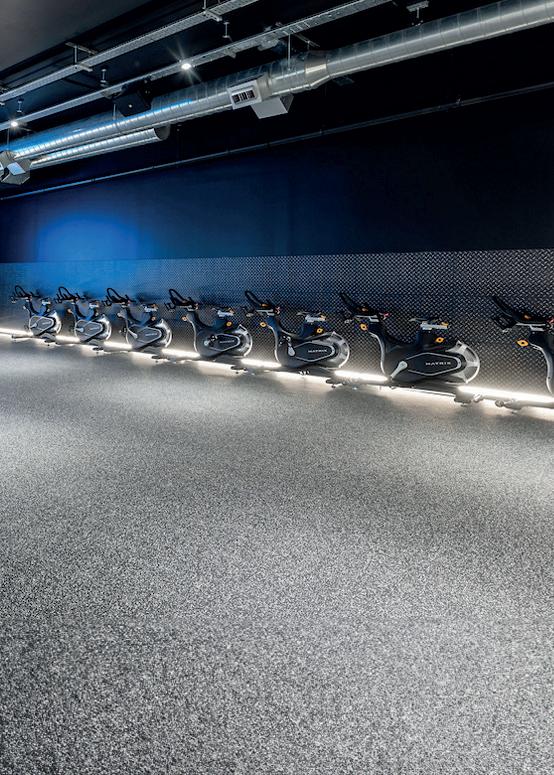
Opportunities
● Many consumers are loyal to one brand in your category, so ensure you invest in brand-building
● You’re primed for growth – make sure you activate across all channels to realise share growth
● Your brand is seen as best value – leverage this position among customers.
● People trust your brand – use it to your advantage!
● You’re top of mind with more consumers than are currently using you – can you exploit this mental advantage?
Threats
● Everyone Active could pose a future threat to your market share.
● Your customers are actively looking for an alternative
● Based on the number of considerers, your levels of purchase/usage are low. Check your activation around decisions at the point of sale
71 ©Cybertrek 2024 Issue 2 2024

>>> Fitness First SWOT
Strengths
● Your brand is a bit cheaper than others and seen as fair value for money. Make sure to communicate your price advantage over competitors
● This is a brand competing well in its market. It’s a mid-ranking brand likely to retain its share
● You are very familiar to consumers
● You have lots of regular users – make sure you build your brand through delivering a great experience
Weaknesses
● Your brand lacks differentiation
Opportunities
● Many consumers are loyal to one brand in your category, so ensure you invest in brand-building
● You’re top of mind with more consumers than are currently using you – can you exploit this mental advantage?
● Target Virgin Active to steal share from: they are most vulnerable in the short term.
● You’re a brand in demand with potential to attract more people if they knew you
Threats
● Everyone Active, PureGym are likely to be growing over the next year and may steal your share
● Based on the number of considerers, your levels of purchase/usage are low. Check your activation around decisions at the point of sale
● This is a large brand but lacks the equity to drive future growth and is therefore at risk
Fitness First has a price advantage over some of its competitors

72 Issue 2 2024 ©Cybertrek 2024
INSIGHT
PHOTO: FITNESS FIRST / LEILAJOYPHOTOGRAPHY.COM
PHOTO: FITNESS FIRST / JANYON BOSHOFF © Kantar Group and Affiliantes
2022
>>> Virgin Active SWOT
Strengths
● You are very familiar to consumers
● You have lots of regular users – make sure you build your brand through a great experience
● This is a brand competing well in its market. It’s a mid-ranking brand likely to retain its share
● Your range of products and services is appreciated
Weaknesses
● There is still room to improve awareness of your brand
● Too many non-trialists are apprehensive about the brand. How can their pre-conceptions be overcome?
● You’re well known but not enough people have tried the brand
● Your brand’s salience is low
● This brand is not in a successful position, being a small portfolio with weak equity
● Consumers are questioning your pricing and value for money: you need to invest in your brand or risk relying on promotions
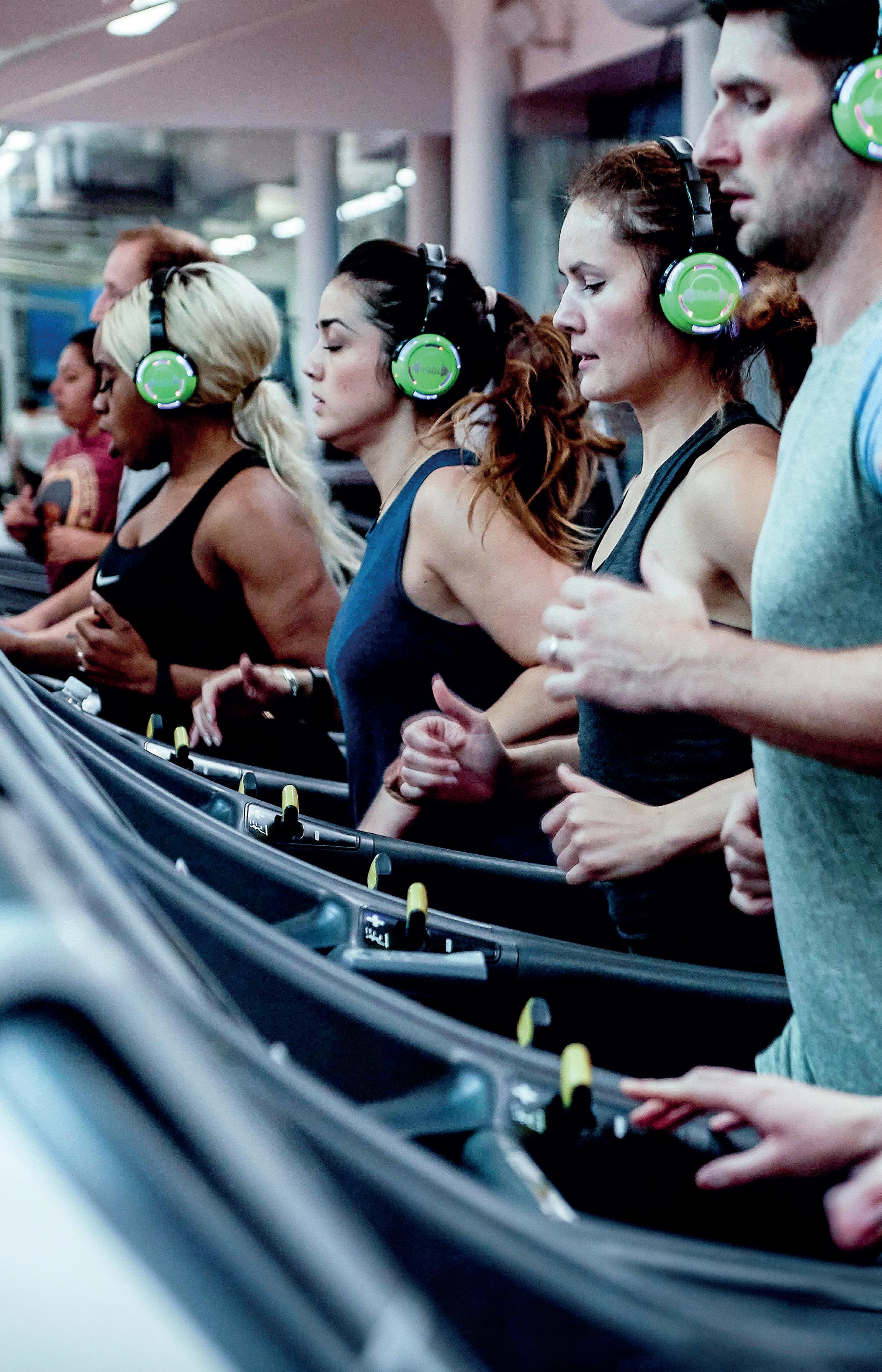
Opportunities
● Your brand has distinctive assets, so use them across your advertising and touch points
● Many consumers are loyal to one brand in your category, so ensure you invest in brand-building
● You’re top of mind with more consumers than are currently using you – can you exploit this mental advantage?
● You’re a brand in demand with potential to attract more people if they knew you
Threats
● You are at significant risk of losing share in the next year
● Your customers are actively looking for an alternative
● Other operators are likely to be growing over the next year and may steal your share
● Based on the number of considerers, your levels of purchase/usage are low. Check your activation around decisions at the point of sale
73 ©Cybertrek 2024 Issue 2 2024
Although Virgin Active is a familiar brand, not enough consumers know what it can do for them
PHOTO: VIRGIN ACTIVE / EMULSION LONDON LIMITED
© Kantar Group and Affiliantes 2022
Life lessons ____


It was a hugely challenging taking on a project of unparalleled size against a backdrop of collective distrust and even hostility
HUW EDWARDS
Remember when there was mass hostility about London hosting the 2012 Olympics?
Huw Edwards, CEO of UK Active, was there. He talks to Kath Hudson about the lessons he learned
With the exception of the pandemic, the toughest part of my career – and an experience I wouldn’t swap for the world – was my time spent working for the London 2012 Olympic Delivery Authority (ODA). I led the organisation’s political and business engagement from 2006 to 2012, first as government and business relations manager, and then as the head of dignitary and ministerial management for the government’s Olympic Executive under the Department for Digital, Culture, Media and Sport.
Having worked previously in the Mayor’s Office for the Greater London Authority, it was a fantastic opportunity to really challenge myself in that
74 Issue 2 2024 ©Cybertrek 2024
TOUGH TIMES

political landscape. For us as a team it was a hugely challenging proposition: taking on a project of unparalleled size, which had a hard deadline, against a backdrop of collective distrust and even hostility.
When we first went to the site it was hard to conceive that such a highly contaminated, barren wasteland could be transformed into a vibrant Olympic Park, however, the government had assembled a team of world-class individuals, who had clarity of approach about what they were going to deliver and how they were going to get there. On a day-to-day basis I was absorbing all this incredible knowledge, experience and expertise from those who were working above me.
The first 12 to 18 months were the most difficult. Everyone felt on the back foot, because of changes to budgets and the lack of confidence externally. As most of that time was spent clearing and decontaminating the site it was hard to show progress to stakeholders and the media. We could never take our eye off the ball, but it did make us very resilient.
The end of the beginning
The turning point came in spring 2008 when the construction of the Olympic Stadium began and we could show people we were making progress, were ahead of schedule and on track to deliver. The whole perception of the Games changed overnight.
Being part of that team taught me hugely invaluable life lessons. There were so many learnings from six years of working with world-class people, who were consummate professionals in delivery and leadership, such as clear communication, being strategic about setting milestones and delivering on them, as well as getting stakeholder engagement.
I’ve endeavoured to apply those lessons to my role at UK Active, where we have a responsibility to provide strong leadership for the sector, making these areas crucial for success. These lessons have proven to be invaluable in helping me to guide the team and our members as we navigated the major national challenges posed by both the pandemic and the energy crisis, as well as our strategic growth more generally.
75 ©Cybertrek 2024 Issue 2 2024
PHOTO: CARMEN VALINO
Edwards (left) interviews sports minister Stuart Andrew on stage at the Active Uprising conference 2024
Stakeholder engagement and collaboration have been crucial at every step of this journey and at the end of the day it’s all about building relationships and trust.
My experience with the Olympics taught me how to build a team of people who have clarity about what needs to be delivered and how everybody in the team needs to understand the part they play when going on that journey. If you have a brilliant team of people who are completely committed to supporting each other to get to that destination, you've got a chance.
Perspective is another thing I learned. When you’re dealing with what seems to be a crisis the first thing is to work out whether or not it's actually a crisis, because the majority of the time it’s not. More often than not there's a solution. Just keep learning from mistakes, learning from life and moving forward.
Standout moments
There were so many stand-out moments from that time. The late Queen coming to the park and planting the first tree, so many state visits, including the Chilean president – about two or three weeks after the Chilean miners were rescued. He brought us gifts of gravel from the mine, which was a surreal experience.
I was back at the office helping to coordinate operations from HQ on ‘Super Saturday’, but I had the opportunity to go to the incredible environment of the velodrome and watched the closing ceremony with Damian Lewis, which was brilliant to witness, as the conclusion of such a successful and inspiring sporting event.
I believe the London 2012 Olympics was a celebration of the very best of the UK. That’s how I felt when I watched Danny Boyle’s opening ceremony.
I know what good looks like when we achieve government engagement – how to take the



I know what good looks like when we achieve government engagement
government on the journey, show them what’s possible and really sell the vision. It’s about understanding their motivations and challenges and then helping to present the solutions and strategies for them to invest in. I know how to succeed and how to create the environments for change. It was humbling and an honour to be involved in helping to deliver such a significant international event at that time. ●

TOUGH TIMES
Edwards saw the transition from hostility to joy
The creation of the Olympic park – ultimately a triumph – was politically fraught
PHOTO: SHUTTERSTOCK/RON ELLIS
PHOTO: SHUTTERSTOCK/ AERIAL-MOTION














THE B2B EVENT THAT GETS THE NATION MOVING WWW.ELEVATEARENA.COM The UK's largest annual trade event dedicated to physical activity, health and performance. REGISTER FREE 250 5000+ 200+ 1000+ Exhibitors Attendees Speakers Products
AT YOUR SERVICE
You might be tempted to skip a service, but experts say it will cost you in the long run. Providers tell Steph Eaves why they their work is important to the management of assets
Michael Ellis /// ServiceSport
We’ve established long-term relationships with operators such as Nuffield Health, GLL and the Ministry of Defence, to prolong the life of their gym equipment as opposed to replacing it.
These decisions are made off the back of data accumulated over time in relation to member feedback on existing equipment and overall experience of the gym; the number of breakdowns recorded; the availability of replacement parts; the general look and feel of the existing gym equipment; and cost-analysis of maintenance programmes provided by the original equipment manufacturer versus independent providers.

www.HCMmag.com/servicesport
By adopting an approach that focuses on prolonging the life of the existing gym equipment, such operators have not only continued to achieve high levels of member satisfaction, but have also been able to invest funds into other areas of their business due to the savings they’ve made.
Nuffield Health has significantly reduced operational costs by eliminating many administrative tasks associated with managing the maintenance of equipment, such as tracking assets, reporting faults and scheduling engineer visits.

ServiceSport focuses on optimising assets

We’ve done this by providing each Nuffield Health site with remote access to its own asset management software, which gives access to its full range of assets, remote reporting of equipment defects and the ability to view the progress of jobs. Such data allows senior management to make informed business decisions regarding the equipment across its estate.
By focusing on prolonging the life of equipment, operators have been able to invest funds into other areas
SPECIFIER
Negligence can expose a club to legal liability if a member is injured due to faulty kit

For the past four years, PSLT has maintained an all-inclusive contract with Places for People Leisure (PFP).
In the earlier stages of our partnership, PFP faced challenges such as extended equipment downtime and torn upholstery. We addressed these issues, reducing downtime and enhancing the gym experience and our upholstery team regularly visits PFP’s gyms to attend to repairs. The feedback from members and PFP has been overwhelmingly positive.

The utilisation of our client portal has streamlined the process of reporting, tracking, and completing repairs. This system ensures that servicing is automatically scheduled, without requiring customer prompts.
www.HCMmag.com/PSLT
Proactively investing in maintenance proves more cost-effective than dealing with the aftermath of neglected equipment. Negligence can expose any health club to legal liability if a member is injured due to faulty kit, leading to lawsuits and reputational damage. Equipment maintenance is pivotal to the success of a club, as malfunctions breed frustration.
Asset lifespan is also improved by good maintenance practices. This not only maximises initial investment, but also reduces the need for costly replacements. Wellmaintained equipment also saves money on energy costs.
A health club’s commitment to equipment upkeep signals professionalism and care for members.
79 ©Cybertrek 2024 Issue 2 2024
Graham Bertrand /// PSLT
Keeping equipment in tip top condition signals to members that an operator cares
PHOTO: SHUTTERSTOCK / GORODENKOFF
www.hcmmag.com/gymkituk
Some operators are happy to spend vast sums kitting out their gym with the latest gear but skimp on servicing equipment to save money and while I empathise, missing a service is a false economy.
Prevention is key. Much like having your car serviced, if caught early enough most issues can be dealt with quickly, preventing further problems.
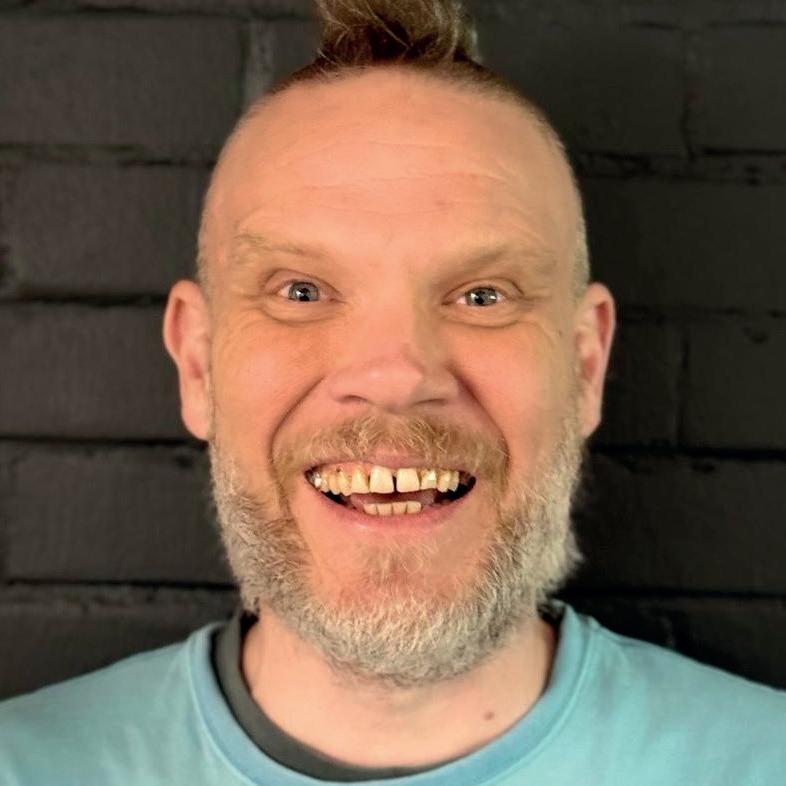
Often, it’s engineers’ travel costs that rack up the most expense and this can be reduced by consolidating call-outs – we strive to book in advance, so we can attend multiple sites in one day.
Health club owners take a sigh of relief when we diagnose and fix a piece of equipment for a fraction of the cost it would take to replace and most equipment can be fixed in situ, meaning members don’t have to go weeks without access.
Luxe Fitness in the UK is one of our clients. We’ve taken on the servicing of all its products and bundled it with a new installation, giving them a cost-saving, first-time fixed rates and fewer call-out charges, because we’re taking care of them in every way we can.
We even service other manufacturers’ products on-site to save them the time and effort of working with multiple providers.



www.hcmmag.com/inspace
There’s a misconception that you need to commit to stretchedout service and warranty packages, which you pay the earth for, but if the product is as good as the manufacturer states, let them deliver on that promise. We’re more than happy to stand behind the products we sell and at the end of the term, to give wellpriced, sensible extended servicing and warranty terms. Good maintenance is a strategic investment in the longevity of equipment. Timely and effective maintenance can extend its lifespan, saving significant costs long-term.
If the product is as good as the manufacturer states, let them deliver on that promise
New agreements are changing the servicing landscape
Ben Steadman /// Inspace Fitness
SPECIFIER
consolidating
Travel costs are reduced by
call-outs
Steve Woolle /// GymKit UK
PHOTO: STEVE RUFFELL
Inspace Fitness also services other products
PHOTO: SHUTTERSTOCK / GROUND PICTURE
PHOTO: INSPACE FITNESS
PHOTO: INSPACE FITNESS

Equipment maintenance is paramount to the success of a health club and the utilisation of a digital asset management platform enhances its importance by streamlining maintenance processes, facilitating proactive monitoring and optimising resource allocation.

Our asset management platform includes digital service ticketing. With this feature, our clients can swiftly log and prioritise maintenance requests and issues, ensuring that all the correct information is sent to their maintenance provider the first time. This speed ensures that maintenance tasks are addressed promptly, reducing the time it takes to resolve issues and minimising equipment downtime. Clients can also access records of past maintenance tasks, track the progress of ongoing issues and generate reports for analysis and future planning.
It’s important to note that servicing and maintenance isn’t a generic, one-size-fits-all matter. In reality, each piece of equipment can have unique maintenance requirements based on factors such as usage patterns, environmental conditions and manufacturer recommendations. A digital
A digital asset management platform allows clients to log and prioritise maintenance requests and issues
www.hcmmag.com/orbit4
asset management platform allows for the customisation of maintenance plans, taking these factors into consideration. Leveraging service and maintenance data combined with asset depreciation information collected in the asset management platform allows our clients to make informed decisions about the lifecycle of their equipment. By analysing historical maintenance data and tracking asset depreciation trends, our clients can accurately determine the optimal time to sell or replace assets. l

81 ©Cybertrek 2024 Issue 2 2024
Steve Ruffell /// Orbit4
Orbit4’s asset management platform
PHOTO: ORBIT4
PHOTO: ORBIT4

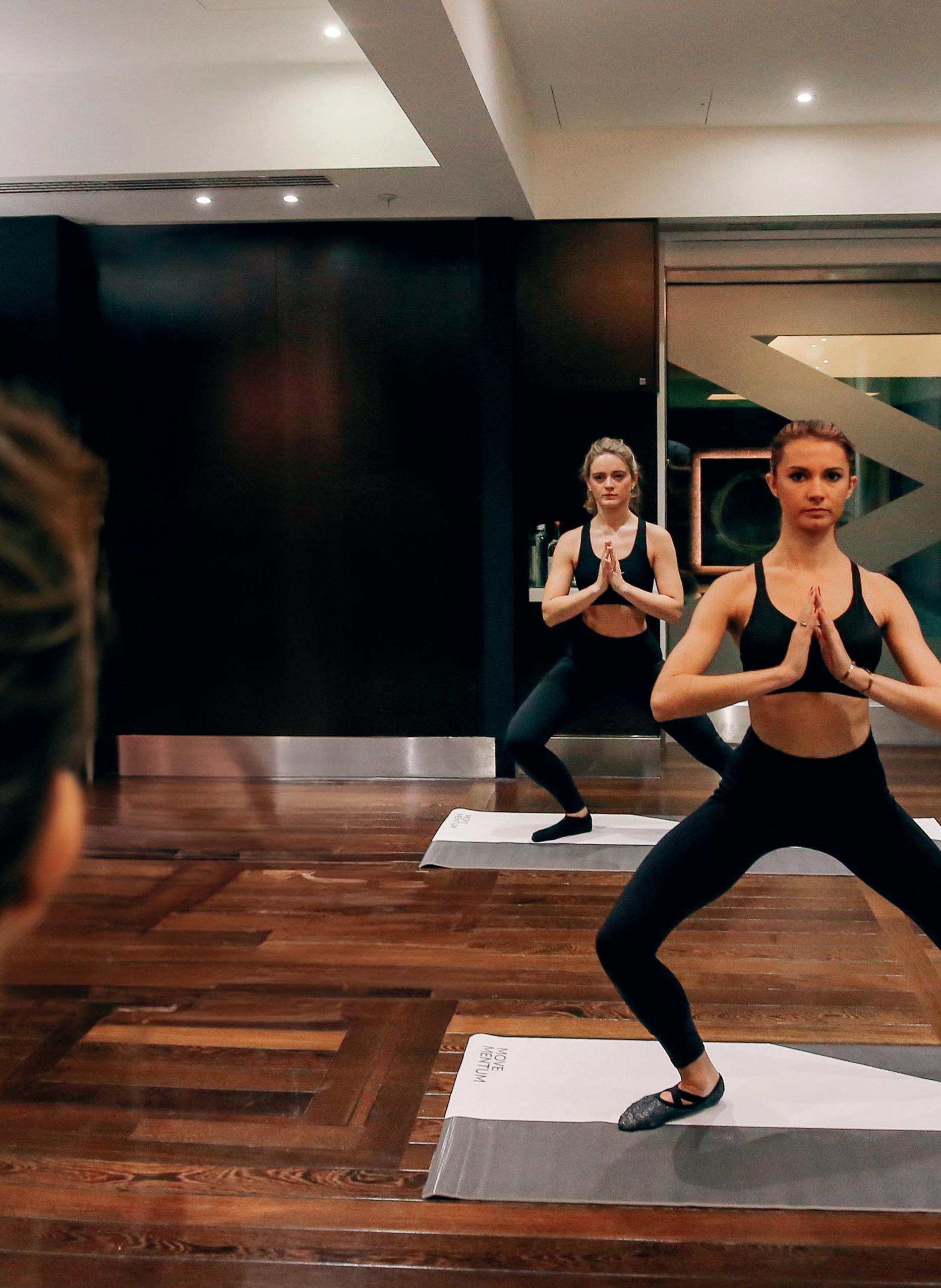
work Well
at



Absenteeism and presenteeism is taking a huge economic toll, with musculoskeletal problems and poor mental health the biggest issues. Can workplace wellness make a difference? Kath Hudson investigates
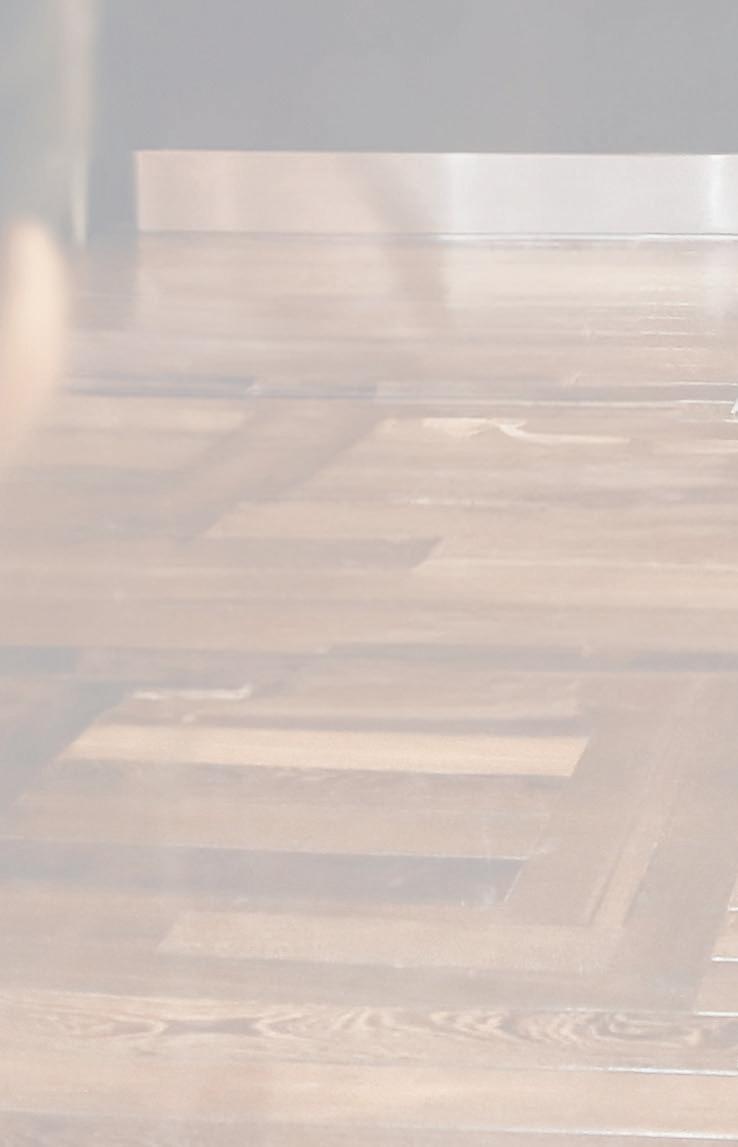
According to Statista, 2.8 million people in the UK were not working due to long-term sickness in November 2023. This is a considerable increase since 2019, when 1.97 million were economically inactive for this reason. The Health Foundation has calculated that worsening working-age health since early 2020 is adding £16bn to annual borrowing through higher welfare spending and foregone tax receipts.
Research by Vitality has shown that presenteeism –the term for working while ill with an impaired performance – has also increased and is strongly related to non-communicable diseases, such as diabetes, heart disease and kidney disease. Much of this ill-health is attributable to poor lifestyle behaviours, including inactivity and poor diets. As health risks are interrelated and individuals who are risk of physical inactivity and poor diets are more likely to be at risk for chronic conditions as well, a large proportion of total work impairment is concentrated within a small segment of the population. With the UK the only G7 economy yet to return to pre-pandemic levels, could workplace wellness help solve this problem? We ask the experts…
Workplace wellness programmes can embed life-changing healthy habits
WELLNESS 82 Issue 2 2024 ©Cybertrek 2024
PHOTO: SHUTTERSTOCK / MAX4E PHOTO PHOTO: SP&CO
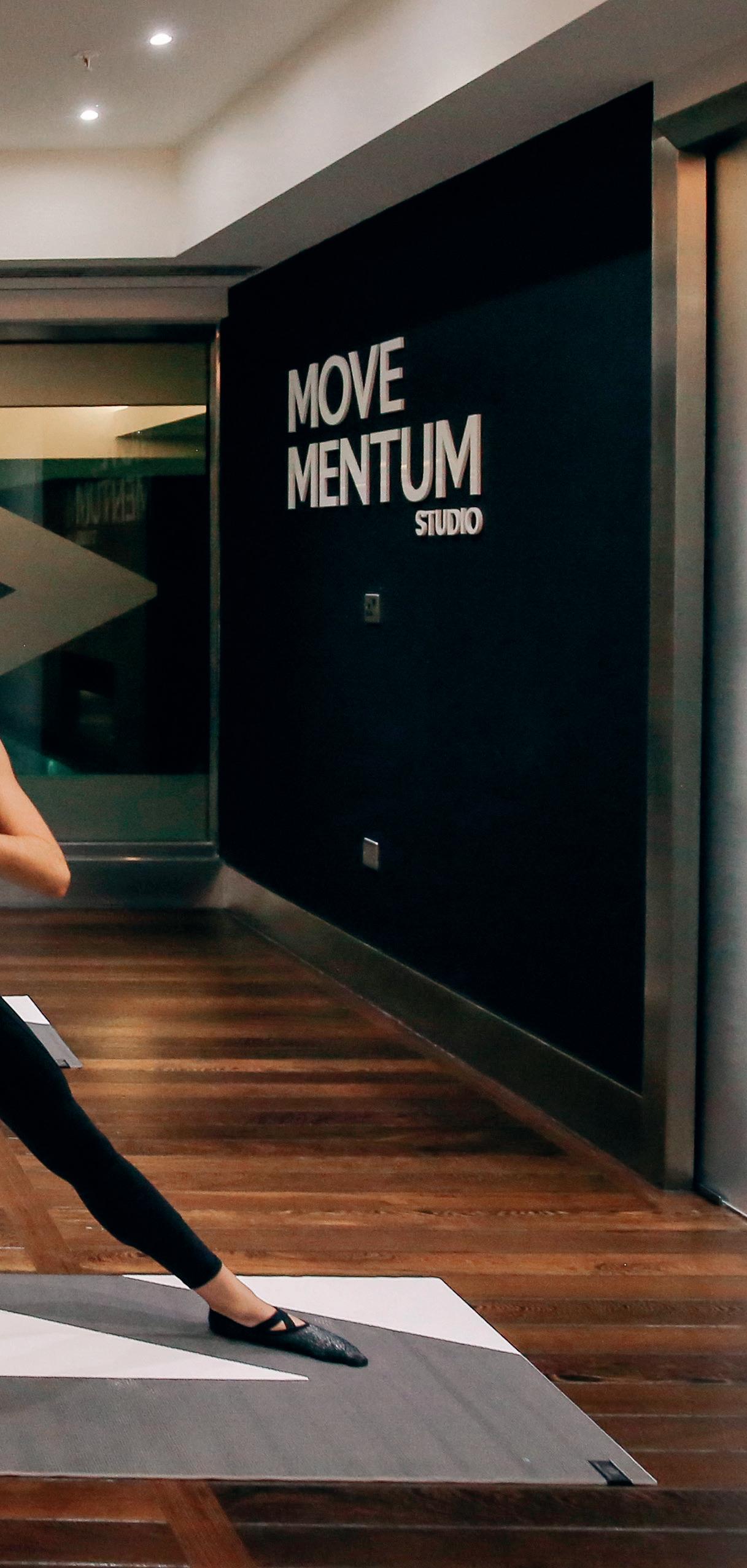

I believe the whole longitudinal health market is the responsibility of the health and fitness industry
Stephen Price SP&Co Group
The rise of muscloskeletal and lifestylerelated disease and mental wellbeing challenges pose a threat to an already stagnant workforce. Although there are bigger policy plays around public health, the health and fitness industry has an opportunity to play a significant role in workforce wellbeing.
I believe the whole longitudinal health market is the responsibility of the health and fitness industry – a responsibility we’ve never taken on with much success. Living/working better is a day-to-day mechanism and presents an enormous opportunity for the sector to support both individuals and whole communities to be active and positive for their whole life.
Ironically the majority of operators simply don’t work a values-based model and certainly don’t take the mantle on.
Ultimately, operators should be the flag-bearers of prevention, but we’re so far away from this. Weaknesses include lack of collaboration, lack of focus on meaningful health changes in the communities we work with, lack of education and training for our workforce in understanding longitudinal health and our role in health care.
There are some incredible operators from large through to boutique, but there isn’t a common values-based mission for the industry and until there is, the democratising of basic health and fitness knowledge, empowerment and support will not exist.
The medical community is crying out for support in this area. They want to be able to de-medicalise patients that simply shouldn’t be patients and also help communities de-risk and health and fitness operators should be playing a major role in supporting the NHS and thereby the health of he nation.
I’m hopeful policy makers will come together to provide guidance relating to models of care that can help operators and the industry as a whole fill the void that currently exists.
● www.spandco.co.uk
83 ©Cybertrek 2024 Issue 2 2024
Stephen Price
PHOTO: SP&CO GROUP

Supporting people to become active would empower people to prioritise their health and ensure they seek help before they reach crisis point
Eamon Lloyd Gympass
The pandemic disrupted our interaction with healthcare. Routine check-ups, chronic disease management and mental health support were neglected and as a result, we’re seeing people developing long-term health concerns that are preventing them from working.
There are a number of ways we can work together to change the narrative. It starts with refocusing our understanding of workplace benefits from reactive to proactive. Many Gympass clients are
acknowledging the need to put the emphasis on keeping staff healthier and active before a crisis occurs. The health of our nation’s workforce could be improved with a few interventions: better education around symptoms, destigmatisation of mental ill health and signposting ways to get help. Supporting people to become active by removing barriers and building a culture of wellness within the workplace would empower people to prioritise their health and ensure they seek help before they reach crisis point.
There are two routes gym operators can take to support people. Firstly, by promoting preventative health, including the provision of options that target the needs, and budgets, of as many people as possible.
Secondly, recognising the holistic wellbeing of an individual and providing as much information as possible to empower them to make informed choices about their health, for example with packages that explore topics such as nutrition, stress management, sleep hygiene and injury prevention.
By supporting people holistically, and providing preventative care we can keep people healthy and in work.
● www.gympass.com

WELLNESS
Workplace wellness programmes can link to activities in the gym
PHOTO:
/ MAX4E PHOTO
Eamon Lloyd
SHUTTERSTOCK

The fitness sector is in a prime position to deliver the message that prevention is always better than cure
Emma Vivo
Epassi (formerly Incorpore)

Many risk factors of ill health are socially patterned and have multiple causes, such as inequalities in income, education, access to green spaces, healthy food and clean air.
Although I don’t have the expertise to propose solutions to the big issues, I believe the fitness sector is in a prime position to deliver the message that prevention is always better than cure. This may be something that’s acknowledged in the sector, but there’s more we can do to deliver.
Operators are already playing an important role within the community and continued training to improve knowledge is critical, as delivering improved outcomes fosters loyalty and trust in the sector. We also see consumer demand changing and health and fitness operators must continually innovate to align with this.
I’m pleased to see many introducing mindfulness classes, as work-related stress and burnout are increasingly common reasons for employee absences. According to People Management one in five workers reported taking time off in the last year because of poor mental health caused by pressure at work, however, mindfulness classes can help build resilience to counter this. Operators could reach out to local businesses, inviting them to trial meditation, relaxation or focused breathwork classes, or even deliver a workshop on the importance and benefits of mindfulness and self-care.
Working with local doctors’ surgeries to maximise GP referral schemes is an effective way of facilitating quicker recovery for people with an existing health condition and preventing these from worsening. UK Active has reported that 21 per cent of people with an existing health condition would rather receive support for their condition in a gym or leisure centre than a hospital setting.
Each year, we deliver more than half a million health club memberships to our network of fitness partners. Although there’s still work to do, by encouraging employees to exercise regularly, membership by membership, we’re contributing to the wellbeing of the working population.
● www.incorpore.co.uk
85 ©Cybertrek 2024 Issue 2 2024
Prevention
is better than cure should be the main message for the sector
Emma Vivo
PHOTO: SHUTTERSTOCK / ANDREY_POPOV
PHOTO: EPASSI
There’s a huge opportunity for the health and fitness sector to make a compelling commercial case to the corporate sector
Oli Patrick
Pillar Wellbeing
Organisations are facing a range of social and environmental shifts that are far beyond the pace of their business development. An employee might be citing burnout when they’re working the same hours they worked 20 years ago, but back then they didn’t go home to global 24-hour news cycles; 1,000 lives better than theirs on Instagram, ultra-processed food and perpetual blue light.


There’s a huge opportunity for the health and fitness sector to make a compelling commercial case to the corporate sector. Behaviour change is the only meaningful way to influence health markers and productivity and no other profession can deliver habitual change across movement, nutrition and sleep like the health and fitness profession.
An estimated £4.17 billion is lost in the UK each year as a result of absenteeism and that’s not taking into account presenteeism. Looking at the Health and Safety at Work 2022 statistics, 51 per cent of new or long-term sickness is due to stress, anxiety or depression; 27 per cent is caused by musculoskeletal problems and the remaining 22 per cent comprise a multitude of conditions where lifestyle may play a role in preventing return to work.
Improving cardiovascular fitness, movement quality and muscle mass would immediately make an impact on the health of the workforce. We have incredible data around the power of exercise to be more effective than antidepressants at a certain level and musculoskeletal problems are largely a disease of being sedentary.
Organisations are spending huge amounts of money on return-to-work schemes, when they would be
better off investing in maintaining the health of their workforce as part of their core offering.
Some organisations have taken it upon themselves to do health checks for their people – such as blood pressure monitoring – to see if they have specific health issues, rather than creating an overall wellness environment and using a preventative approach to ensure they have the best opportunity to be healthy. This is where the fitness industry can play a significant role.
The core skills are already in place in the sector to partner with corporates and improve the health of the workforce, but there are a few challenges. The word fitness is one: we need to use the term wellbeing and recognise that outside the gym environment, body aesthetics are less important. There is also the challenge of speaking to those who are inactive because they feel excluded from exercise because of school sport. Much bigger traction will come if we talk about movement beyond the concept of fitness; nutrition, but not sports nutrition, as well as sleep and stress.
● www.pillarwellbeing.com

86 Issue 2 2024 ©Cybertrek 2024
PHOTO:FUTURE PRACTICE
WELLNESS
Oli Patrick
PHOTO: PILLAR WELLBEING
Workplace wellness programmes have huge value for corporations


Attract new members with
Epassi UK
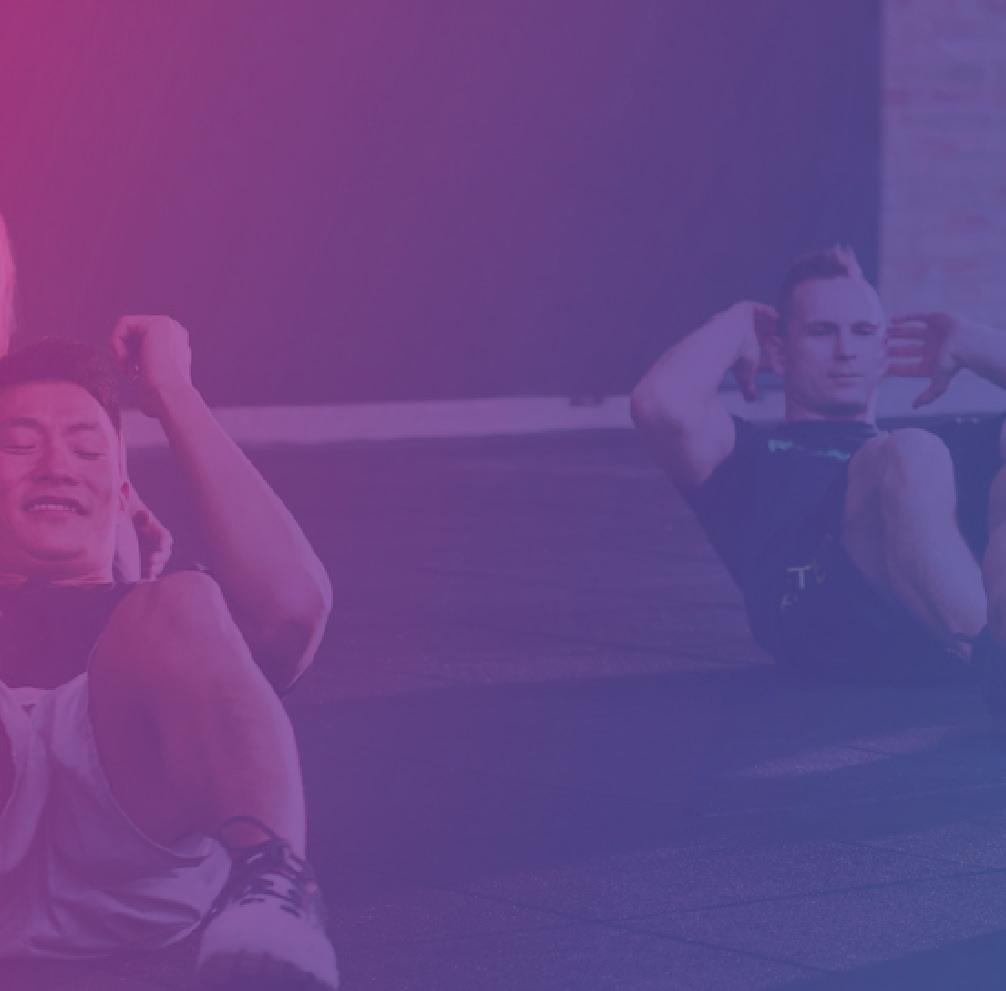







List your club for free today and join 3,600+ fitness facilities who are already driving more revenue and members into their clubs.
Receive 12-month company funded memberships and hot leads from our two schemes, MyGymDiscounts and GymFlex.
75,000+ website log ins every month
96% of our network receives new members from us
Average Epassi UK customer spends £585 per year


Get in touch to find out more!

wellbeing Pivot to
Although there’s much talk about working with health services, research from SLC suggests there’s much work to do before the sector is ready for the challenge. Kath Hudson asks the experts to identify barriers and solutions


88 Issue 2 2024 ©Cybertrek 2024 DEBATE
PHOTO: SHUTTERSTOCK/PEOPLEIMAGES.COMYURI A
The overall conclusion we’ve come to is that the leisure workforce isn’t ready to deliver active wellbeing
Duncan Wood-Allum SLC
The lack of the right skills in the sector could derail the whole active wellbeing movement just as it starts to build momentum.
SLC has been supporting numerous local authorities in pivoting their leisure services into an active wellbeing service – a more integrated health, social care and wellbeing offer. This aligns with Sport England’s The Future of Public Sector Leisure strategy, which has been adopted by a number of progressive local authorities that have recognised that leisure, in its current format, is unsustainable and not sufficiently benefitting those communities who experience the greatest health inequalities.
Leisure services need to evolve into an active wellbeing offer, which will be part of a systemwide approach, focusing on improving the health of people who are inactive, less active or living with long term conditions, in addition to meeting the wider universal needs of residents.
This
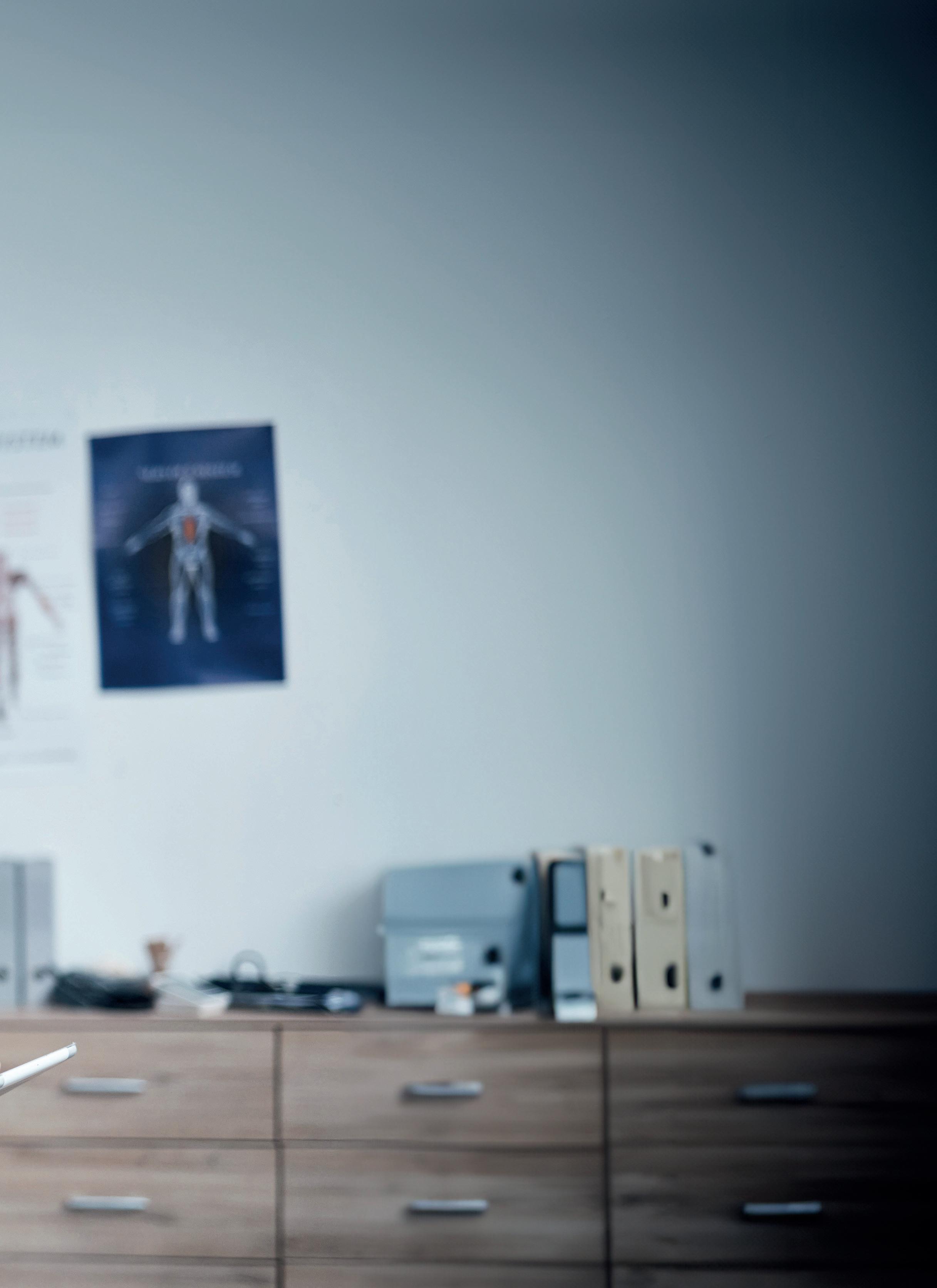
1. Standards
Existing professional standards make little reference to working with people who are inactive, less active or have long-term conditions. This is partly because health and social care commissioners weren’t involved in the development of those professional standards. As a result, qualifications and CPD courses have very little content relating to working with people in poor health or with inactive lifestyles.
2. Culture
There’s also a big cultural gap between leisure professionals and health and social care professionals, which results in different languages, working styles and expectations. This makes joined-up working more difficult.
3 Qualifi cations

While





















This would entail the use of a different service delivery model: adapted facilities and universal services proportionately supporting different groups and providing preventative support and interventions linked to supporting behaviour change and communities taking greater responsibility for their wellbeing.











While the partnerships, funding and facilities to support active wellbeing can be brought together, our research at SLC has identified the biggest challenge currently is the skills level in the leisure workforce for the following reasons:












The current system for creating appropriate pathways and qualifications is underdeveloped and not sufficiently aligned to the health and social care sector’s requirements. Having shared a white paper highlighting these issues with sector organisations, representative bodies and leaders, the overall conclusion SLC has come to is that the leisure workforce isn’t ready to deliver active wellbeing. If we are to become a key preventative health and social care partner, we need to raise awareness of the issues that need to be tackled.





white
















Working with the health service will be part of consumer’s journey to better wellbeing Wood-Allum: ‘Biggest challenge is the skills level of the workforce’
 Tara Dillon CIMSPA
Tara Dillon CIMSPA
The issue really isn’t about the workforce being ready – as a sector we’re already partnering with allied professionals in the health and social care sector – the challenge is that policy hasn’t kept pace with societal needs, which is why we haven’t seen the collaboration that’s needed between the two sectors happen at scale.
We need greater government buy-in and resourcing for social prescribing and prevention activity to address the high-levels of long-term ill-health in the UK, as well as collaboration across government departments which, in its simplest form, acknowledges and leverages the benefits of regular physical activity and exercise in reducing the burden on the health service.
There are two significant challenges holding the sector back from having the impact we need at scale in relation to delivering active wellbeing. The first is recruitment and retention. The CIMSPA Workforce Insights Report 2023, shows that although advertised salaries in our sector have grown closer to the average of all occupations, they remain lower, which makes it difficult for our sector to attract and retain talent.
At a time when our economy is seeing a tight labour market, it has become even more challenging to attract talent in competition with other sectors.
Our data shows there are significant skills shortages in the sector for in-demand roles such as lifeguard, sports coaches and swimming
The overwhelming positives of our sector are incredibly hard to ignore
instructors, as well as shortages of staff with skills in managing safeguarding, mental wellbeing, longterm health conditions and equalities and diversity.

While we can support those already working in the sector to develop these skills, it will continue to be challenging to retain them – and attract new entrants with skills and experience in these areas – if we don’t incentivise people to work in our sector.
The second challenge is the lack of systemic joined-up thinking at policy-making level. We need a genuine partnership between the sector and the Office for Health Improvement and Disparities (OHID) so commissioning of physical activity at a local level is enabled at scale to reduce the burden on local health diagnosis and treatment services.
The work we’re delivering at CIMSPA, through our local delivery team and the establishment of Local Skills Accountability Boards, is already demonstrating the value of this type of approach. We’re bringing
DEBATE 90 Issue 2 2024 ©Cybertrek 2024
Dillon: ‘We need a more joinedup approach’
PHOTO: CIMSPA

together employers, Active Partnerships, health commissioners and education and skills development providers, to identify what’s needed locally.
This connection is vital and is the conduit for conversations that enable the right provision to be developed to serve the local need. The challenge is to scale these partnerships so they can deliver at pace and that’s where the need for leadership from policy makers is imperative to ensure that what’s delivered is available to the widest possible proportion of the population.
Through CIMSPA’s work in places such as Leicestershire, Devon and Suffolk we can see how a joined-up approach, with our sector working hand in hand with health professionals, skills development and education providers and employers is leading to great opportunities for participation, particularly within communities and demographics that are typically difficult to reach or engage. These opportunities are resulting in
more activity, which in turn is improving health and wellbeing, meaning less pressure on NHS services.
However, until we see a joined-up approach across government with the Department of Culture, Media and Sport (DCMS) working alongside DHSC, DoE, DBEIS, DLUC, and most importantly, the Treasury, to seriously drive the benefits of activity for good health across the population, I worry we’re only going to be able to talk about the benefits as small-scale initiatives.
The good news is that alongside our partners on the National Sector Partners Group* we’re engaging with the government and the opposition to show the great work across the sector. We’re providing a huge amount of evidence about how physical activity is improving lives, reducing demand on the health service and having positive economic impacts across communities.
*Active Partnerships, CIMSPA, Sport for Development Coalition, Sport and Recreation Alliance, UK Active, Youth Sport Trust
91 ©Cybertrek 2024 Issue 2 2024
The vision is for medical professionals to transfer patients across to the physical activity sector for guided interventions
PHOTO: SHUTTERSTOCK/ PEOPLEIMAGES.COM-YURI A


Overall, the ingredients are there to work collaboratively with the health care sector: shared purpose, great examples of good practice to learn from, vast knowledge and training to support ongoing workforce development. As an industry, our primary purpose should be to eradicate inactivity and drive physical activity in all sectors of the population, without over-reaching our remit and causing confusion with potential partners.

Our MSK Hubs project has so far generated an estimated £400,000 in social value and with 28 hubs across our facilities, we’ve been able to achieve more than 1,700 new referrals.
At Parkwood we’re investing heavily in ensuring we have genuine experts leading our development. We now have in-house clinical, nutrition and wellbeing expertise and more than 230 of our colleagues have been upskilled in delivering a range of healthrelated interventions across MSK conditions, cancer rehabilitation, mental health and disability.
As well as offering clinical support, we added social coffee mornings, thereby making the intervention about engaging the community, not just tackling the conditions.
However, barriers exist at both an individual and systemic level and we must address both if we are to continue delivering sustainable change. Often active wellbeing initiatives exist in silos, which can lead to a duplication of effort, missed opportunities and difficulty in achieving sustainable impact. Policy
92 Issue 2 2024 ©Cybertrek 2024
Andy Farr
Parkwood Leisure
DEBATE
The sector has a skills shortage in the area of mental health
PHOTO: PARKWOOD LEISURE
Often active wellbeing initiatives exist in silos, which can lead to difficulty in achieving sustainable impact
2.Collaboration
We need more cross-sector collaboration through joint training initiatives, knowledgesharing platforms and secondment programmes, as creating clear career progression paths within the active wellbeing field will enable us to recruit a more diverse workforce, with greater lived experience that resonates with our customers.
3.Funding


and funding limitations, as well as data and evidence gaps, present further causes for concern. Individually, developing cultural competency is key – this is crucial for community engagement and ownership and something that requires greater recognition and focus in workforce recruitment and development. The system changes needed can be broadly split into four areas:
1.Workforce
We need to improve recruitment, development and support and to better equip leisure professionals with skills in behaviour change, health promotion, community engagement, working with diverse populations, as well as the technical skills required for safe activity delivery.
This continues to be a considerable challenge –tackling inactivity should be seen as a generational challenge that requires long-term planning and funding. To accompany this long-term planning, our sector needs to invest in research and evaluation and then allocate resources based on evidencebased decisions. Our experience at Parkwood has shown this helps to identify sustainable best practice and to adapt programmes for maximum impact.
4.Policy
If we are to create long-term behaviour change, active wellbeing must be integrated into key policy frameworks, especially health, social care, and urban planning policies. We can then empower our workforce to focus on driving physical activity in all sectors of the population. In doing so, we’ll make a valuable contribution to support better health outcomes and reduce health inequalities in our communities; support better educational outcomes for children and young people; and support community cohesion and cultural integration.
93 ©Cybertrek 2024 Issue 2 2024
PHOTO: SHUTTERSTOCK/PEOPLEIMAGES.COMYURI A
The leisure workforce is not ready to partner at scale with the health and social care sector to tackle inactivity and inequalities. There are many barriers: staff pay and qualifications and the cost of upskilling. Also, staff numbers have been reduced to the bare bones in many areas due to the immense financial pressure, so often there simply aren’t enough staff to deliver community outreach programmes. Furthermore, our credibility is not where it needs to be. Some of this is perception, some is reality in that we simply don’t have enough qualified staff.
But all is not lost! There are an increasing number of operators, of all models, seeing a huge opportunity to align their businesses with a cause that will enthuse their staff, clients and customers. Every single council we engage with wants leisure to support the wider aims of improving population health.
Sport England and the Local Government Association are investing huge sums into place-based working and developing local leaders who

In order to be commissionready, we need to better understand what our roles could be

understand that in order to change we need to change the system.
CIMSPA is making great progress with Local Skills Improvement Boards, UK Active is successfully rolling out MSK hubs across the country and GM’s Active Prehab4Cancer programme is winning national awards.
If we present a unified proposition we’ll increasingly be the go-to sector that can help change people’s lives. To do this we need to be confident and upskill our staff. We must also be humble: ask our health care partners what we can do for them, not what we can get out of the system. The key to success is to contribute and then the commissions will come. This is already happening up and down the company, in sufficient instances to give hope.
To be commission-ready, we must better understand what our roles could be as part of a collaborative approach and develop a deeper awareness of the issues we’re proposing, so we can be involved with, and part of, the solution. When the health care sector does turn to us we must be ready – then we’ll finally be part of a national wellness service that’s focused on prevention and prehabilitation.
94 Issue 2 2024 ©Cybertrek 2024 DEBATE
Andy King
Miova
PHOTO: MIOVA
-
A
PHOTO: SHUTTERSTOCK/PEOPLEIMAGES.COM
YURI
We want to be the go-to sector that can change people’s lives
 Rob Johnson
Rob Johnson
Future Fit
Pockets of the workforce are undoubtedly ready to partner with the health and social care sectors, but there still needs to be a broader and better understanding of the part the fitness sector plays in a wider systems approach. Understanding the language, culture and ways our partners in health, social care and education work, and the part we can play in that wider system, is critical if we are to become a truly recognised partner and solution to the problem.

to delivering more of an active wellbeing solution in the community, there needs to be a shift to upskilling our workforce with the relevant knowledge, skills and behaviours required to achieve this.
For a long time, a large proportion of our sector has been focused on fitness and leisure and as such the training and qualifications available to the workforce have been geared towards this, so if we are to pivot
That shift doesn’t just apply to the customer-facing workforce, it has to start at the top, with transformational leadership training required to help managers and leaders truly understand what a pivot means and what is actually possible. However, upskilling requires investment, which is challenging. It’s not just the barriers from within that we have to deal with. As with all new ways of thinking, there are those on the outside that say we should stay in our lane of traditional leisure provision, so it’s really up to us to change that way of thinking and to show how we can be part of the wider system solution. If the leisure workforce is to be able to

DEBATE
PHOTO: SHUTTERSTOCK/PEOPLEIMAGES.COMYURI A
There are those on the outside who say we should stay in our lane, so it’s up to us to change that way of thinking
deliver active wellbeing effectively, we have to start by getting them to think and behave differently.
They have to understand the wider system they sit within, and the part that they can play within the active wellbeing of their communities and not just within the confines of their facilities. There needs to be wider collaboration within the communities they serve with organisations such as the NHS, ICB’s, and Active Partnerships. These collaborations must be place-based, because each area will prioritise its own unique strategic challenges and approach the solutions differently.
GM Active in Manchester UK is leading the way. Starting a pivot to active wellbeing at the start of the pandemic, it embarked on an extensive programming of upskilling its 3,600-strong workforce. This was backed up by the implementation of a transformational leadership programme that aimed to educate GMs and duty managers in leadership and understanding the wider system they sit within. This has been backed up by collaborative working across the Manchester area, with all organisations involved in the wellbeing of their communities.

Collaborations must be place-based, as each area will deal with its unique challenges
97 ©Cybertrek 2024 Issue 2 2024


This is ultimately less about workforce development and more about challenging traditional ways of working
Dr Marlize De Vivo
National Centre for Sport & Exercise Medicine
The leisure workforce is part of the solution, but is not the only solution to tackle inactivity and inequalities. We have to look at the bigger picture and ensure we connect the dots to streamline our efforts and challenge traditional ways of working.
There’s a perceived gap between the health and fitness sectors, particularly concerning clinical population groups that would benefit from physical activity to manage their conditions. The recent consensus statement on the risks of physical activity for people living with long-term conditions has made some strides in terms of addressing fear of adverse events, but the leisure industry has been slow to respond and – given that fitness professionals are largely unregulated – concerns around safety and quality remain valid. However, there are highly skilled, highly qualified professional workforces who are
98 Issue 2 2024 ©Cybertrek 2024 DEBATE
HP O T O : N A T I ONAL CENTREFORSPORT&EXERCISE MEDICINE
SHUTTERSTOCK/PEOPLEIMAGES.COMYURI A
PHOTO:

consistently being overlooked as part of the solution, including clinical exercise physiologists, biokineticists, sports rehabilitators and BASES-certified exercise practitioners.
Traditional physical activity referral schemes – or exercise referral programmes delivered by exercise referral instructors over 12 weeks – are no longer fit for purpose and require a rethink, particularly in terms of exit strategies and behaviour maintenance. Only 16 per cent of the UK population hold a gym membership so we have to look more widely to meet people where they are, whether this is through the provision of activities in the community, home-based, or digital solutions.
Embedding physical activity in clinical pathways must take priority as part of a preventative agenda and the commissioning of physical activity-related services should become a priority. We lack governance, leadership and action from those with the influence and reach to implement this.
We also need to think beyond traditional allied health professionals and consider the wider, multi-disciplinary
What’s happening?
Exercise is shown to improve a myriad of health conditions, while also delivering preventative protection against disease
The health and fitness sector has the opportunity to work with the health sector to deliver exercise interventions in health clubs and leisure centres
What’s the issue?
The sector has skill shortages in areas such as mental health support, safeguarding and the delivery of health-related interventions for musculoskeletal conditions. Also needed are skills in cancer rehabilitation and working with people with disabilities. A White Paper by consultancy SLC has found that the sector is not skilled-up to be able to deliver against the coming demand for services
What’s the solution?
Experts believe that paying staff more, collaboration between sectors, working with allied professionals, aligning qualifications with the health sector and ramping up training capacity can all help address the challenge and deliver on the opportunity
workforces that have a key role to play and could be integrated in care pathways and teams. We’ve seen some good examples of this in other parts of the world, such as Canada, Australia and South Africa.
Perhaps this is ultimately less about workforce development and more about streamlining our efforts and challenging traditional ways of working. The co-location model implemented by the National Centre for Sports and Exercise Medicine in Sheffield is a good example of this. By delivering NHS appointments within community leisure facilities, NHS staff and patients experience an environment that encourages physical activity and promotes wellbeing. The facilities are designed to be deliberately different from traditional clinical settings and bring health to the community and support people to make lifestyle changes.
99 ©Cybertrek 2024 Issue 2 2024
Embedding physical activity in clinical pathways can lead to great outcomes
The ultimate aim is a quality-assured integrated training package, linked with Allied Health professional status
Jo Ireland
North Yorkshire Council

As a new authority formed of seven legacy districts and a number of different operators, we have one of the largest leisure portfolios in the country and it’s a real focus for us to become a credible partner with health and maximise our potential to make a real difference to health and inequalities.

We recognise that if we are to expand our work with people who aren’t currently active, who have long-term health conditions and who face additional barriers to becoming and staying active, then we need to ensure our workforce has the skills to encourage behaviour change in a wider group of people, and a wider range of settings, than is currently the case. The ultimate aim would be a national training
programme and professional standards and qualifications, developed and recognised across the leisure, health and social care sectors, including both practitioners and leadership teams. However, this is a long-term goal and locally and nationally we need to move incrementally to a more strategic approach to workforce development. Access to appropriate training at scale is a barrier. There are also cultural differences between the health and leisure sector which can create challenges. This is underpinned by a challenging financial backdrop for local authorities and health and social care partners. While investing in the workforce is necessary to achieve the long-term gains, it’s expensive at a time when recruitment and retention is already a challenge. In the short-term, whether we have enough lifeguards can feel like the more pressing concern. As we target a more diverse user group, more diversity within our
100 Issue 2 2024 ©Cybertrek 2024
DEBATE
The leisure workforce needs the skills to encourage behaviour change in wider groups
PHOTO: NORTH YORKSHIRE COUNCIL
PHOTO: NORTH YORKSHIRE COUNCIL


workforce is also an important issue, so a focus for us is how we can recruit from a wider range of communities.
System change is complex, imperfect and never really finished but needs to be driven by a common purpose and a long-term view. It needs small steps, as well as big ones, to create a movement and groundswell of change both locally and nationally. Key to the change is a wider repositioning of the leisure service as central to good health, wellbeing and tackling inequalities and a shared understanding of the contribution of the sector and the workforce to improving population health. This is happening faster in some areas than others, but is definitely momentum to build on.
The cultural gap between leisure and health needs to be closed through mutual understanding. This includes developing a common language around universal,
targeted and specialist offers. Moving towards some commonly recognised skills and qualifications would help build trust and confidence in the interventions we can offer in leisure settings, with an ultimate aim of a quality-assured integrated training package, linked with Allied Health professional status.
Moving forward, we need to work together on our evidence-based approaches to demonstrate the value and quality of what we do. We need to encourage health and leisure staff to share space and work together with an integrated tiered approach to interventions. We also need to share our learnings and setbacks, so locally developed progress and solutions come together as part of a national movement and systemic change at scale. l
101 ©Cybertrek 2024 Issue 2 2024
North Yorkshire is repositioning leisure as being central to health
PHOTO: NORTH YORKSHIRE COUNCIL
Dr Paul Bedford talks to Jak Phillips about the double-edged sword of the strength training trend and his ambitions for the sector
SEARCHING

QUESTIONS
How would you assess the current state of the market?
Generally, pretty good. There are issues within some businesses, but that's more to do with business models and practices than the industry as a whole. We've certainly seen people returning to clubs, but they're using them differently and in some cases using different clubs.
Generally speaking, health club operators now have a share of a customer, rather than owning their entire fitness experience. People are going to multiple facilities, sometimes doing their own thing at home, then supplementing that with one-off boutique visits. This opens up opportunities for aggregators.
With Tuesday to Thursday being the new office week, people are either investing more in suburban clubs (often with their families) or taking a pay-as-you-go approach to urban clubs and being willing to pay a premium for infrequency – as many of us are doing with travel – paying ad hoc fares instead of buying season tickets.

How does this impact membership tenure?
It varies widely by location. We worked with an operator recently and a third of their club locations had seen average membership tenure stay flat, a third had increased by a month or two, while a third had dropped by seven to 10 months. That’s a huge variance within one business and points to the importance of having a strong portfolio when it comes to locations. On average, club membership lengths are trending shorter, so more clubs are embracing the importance of delivering great experiences to mitigate this, but that requires a long-term commitment to realise meaningful results.
How can clubs counter such challenges?
It’s important to have a distinct offering – if you try to stand for everything, you can end
OPINION 102 Issue 2 2024 ©Cybertrek 2024
PHOTO: DR PAUL BEDFORD

up standing for nothing. Take a CrossFit or Hyrox offering – you’re appealing to committed exercisers and it’s simply a case of whether they choose to go with you or your competitors.
The industry is missing a trick in failing to engage with people who are new to exercise. We've significantly improved the quality of almost everything we do over the last 20 years and have some beautiful facilities to showcase, but we’re lacking
The industry is missing a trick in failing to engage with people who are new to exercise. We’re lacking when it comes to onboarding
when it comes to how we do our onboarding. If we're going to grow the industry, we need to start segmenting and putting the right support in place so new joiners are being set up for success.
Why do operators struggle with onboarding?
There’s always been a challenge around measuring the value of onboarding, which is why so many are disinclined to invest in it.
When you speak to many gym staff they’ll say members know what they’re doing and don’t need support, but that clearly isn’t the case – we did work recently for an operator in London and 40 per cent of members told us they would have benefited from onboarding support.
These were the members who responded, so the true figure is likely to be higher when you factor in
PHOTO: LES MILLS / FINN COCHRAN
103 ©Cybertrek 2024 Issue 2 2024
With a rise in working from home, suburban clubs are in greater demand
all those who’d already left the club and so couldn’t respond. The other 60 per cent said they were confident already and didn’t need onboarding.
When the operator broke down what it would take in terms of work hours to provide onboarding support to relevant members, it came to one and a half hours a day, which is clearly manageable. It doesn’t need to be daunting to do onboarding well, but it can make a massive difference to the bottom line.
As an overview of the culture of the sector, the rise of the low-cost, self-service clubs has also had an impact, leading to less emphasis on personal touchpoints.
What role can digital play in member engagement?
Operators have been buoyed by the strong return of members to clubs, but they dismiss digital at their peril. Some operators tell me they’ve never had a prospect ask them ‘What’s your digital offering?’ and take from that there’s no demand, but if someone wants to do digital workouts at home, they’ll have found themselves a solution before you ever hear from them.
It comes back to share of wallet – we know consumers are doing more digital workouts at home, so do you want that service to be provided by your club or by a competitor? It’s a huge undertaking to produce high-quality content, so it makes sense for clubs to consider outsourcing if they can get the commercials right and ensure it’s a consistent extension of their brand and in-club experience.
There’s also a retention element that requires further examination – we did work with a US operator and found that even though the usage of their digital offering wasn’t super high, the members who added digital services to their club membership stayed longer than those who didn’t.
What behavioural differences are you seeing between younger and older demographics?
It’s a bit like music: different age groups are always going to prefer certain styles at different stages of their life –and that’s certainly true of me and my 22-year-old son!
Strength is a massive training category right now, partly driven by the rise of influencer culture. Given you’re in a fixed position when you’re strength training, it’s one of the easier activities to film yourself doing in the gym (as opposed to being in the middle of a busy class) so that’s what content creators tend to capture. Gen Zers then see this content on social media and are then inspired to copy it.
This is called vicarious learning (learning through watching) and it’s something people have always done in gyms – trying out things they see other people doing around them. As a result, we now have a network effect occurring through social media and this is driving the massive trend towards strength training.
Another factor relating to this is that because young people receive this information (and inspiration) through their phone, they then become reliant on their mobile to guide them through workouts as well – to the extent
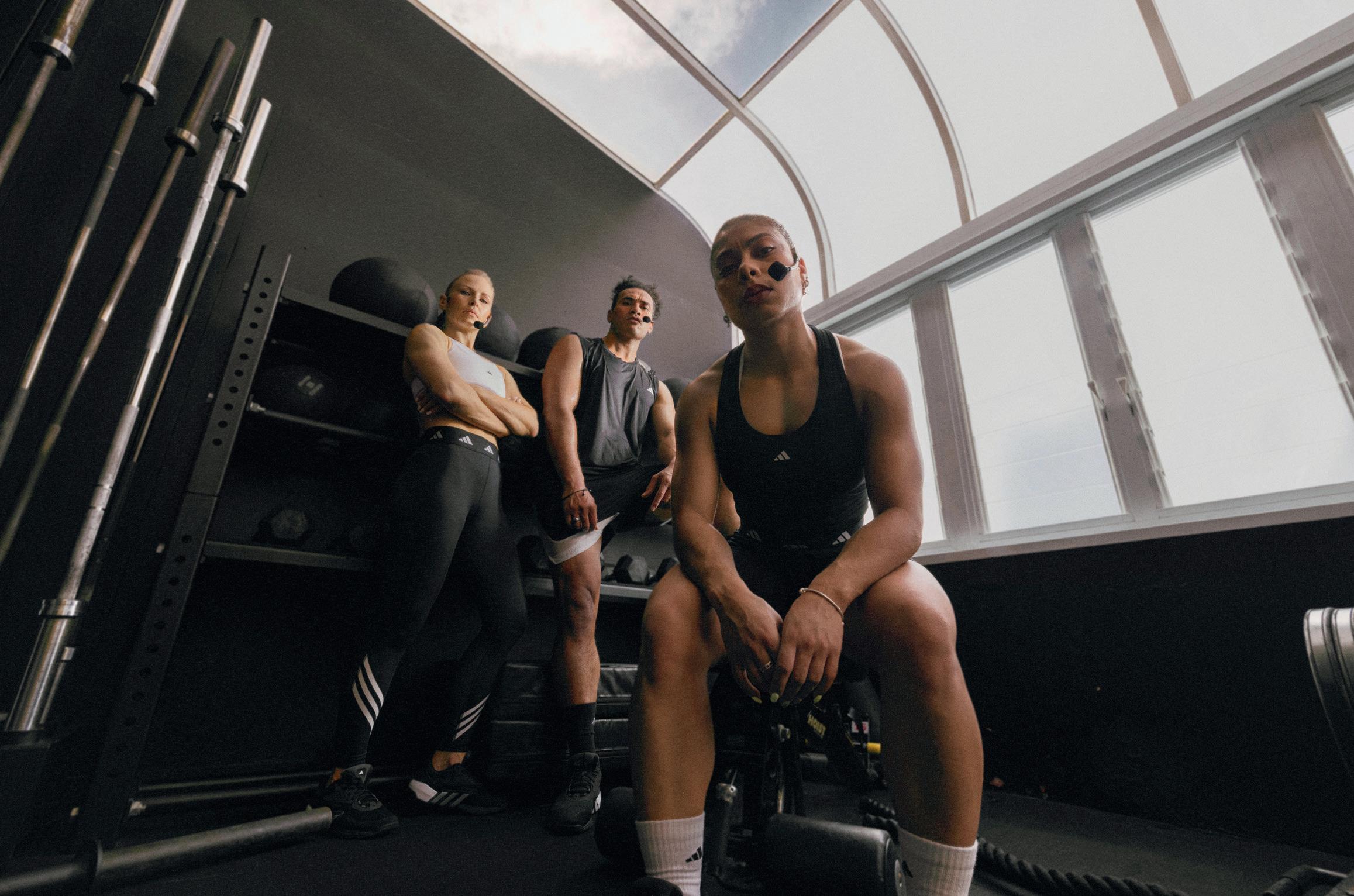
OPINION
Strength is a huge training category right now
/ FINN COCHRAN
PHOTO: LES MILLS
Operators have been buoyed by the strong return of members to clubs, but they dismiss digital at their peril

Clubs now only have a share of a customer’s fitness experience
PHOTO: LES MILLS / ADIDAS
Gymtimidation can be heightened in environments where everyone is lifting weights, sometimes in ways you wouldn’t imagine
that they tend not to engage with the experts on hand to support them in the health club and this creates a disconnect and reduces their engagement and loyalty.
The other thing we’re seeing is bottlenecks on the gym floor as everyone wants to use the same strength equipment.
How can clubs manage the problem of overcrowding?
Some have stuck with the appointment systems they introduced during the pandemic, so members can book a slot on the gym floor – sometimes even on a specific piece of equipment.
Others are signposting members to areas where there’s more capacity, such as group exercise studios and functional areas.
Operators can encourage this through the onboarding process, by making sure that new members are aware of the full range of facilities on offer and then further reinforcing this through ongoing member communications.
They can also use these capacity insights to inform their marketing strategy – if a health club operator knows that they would struggle to service more members who want to use the strength equipment, they’d be better off targeting prospects who want to use areas of the club where they still have capacity, for example.
If an operator is in a better position to meet the needs of these prospects, the members are likely to stay longer and yield a greater lifetime value, representing a better ROI for their marketing spend.
What other impact is the strength training trend having?
It’s great that more people are joining gyms to do strength training, but there are other factors we need to be mindful of. Gymtimidation can be heightened in environments where everyone is lifting weights – sometimes in ways that you really wouldn’t even imagine.
I was talking to some members in their late 40s recently who were clearly experienced

OPINION 106 Issue 2 2024 ©Cybertrek 2024
lifters, but were hesitant to go and do squats because the club had recently changed from allblack bumper plates to multi-coloured ones.
They said no one took any notice when the plates were all black, but now each plate had a colour to indicate weight, people tended to observe and make judgements about them based on how much was being lifted.
It’s the sort of thing I hadn’t even thought about, but members pick up on these subtleties. So as we embrace the strength training trend, it’s crucial that we’re really conscious of the environments we're creating and making sure we keep Gymtimidation in check.
How do you see the role of group training in the current landscape?
Group exercise is always going to have a role to play. The benefits it brings in terms of retention and creating community are well-documented and you could argue they take on greater significance at a time when memberships are trending shorter.
Where strength training is bringing new people into the club, a lot of these members are enticed by the relative simplicity of the set-up and the movements.
Typically, strength training involves moves they can watch on their phone and then replicate by following pointers, whereas the group exercise studio is
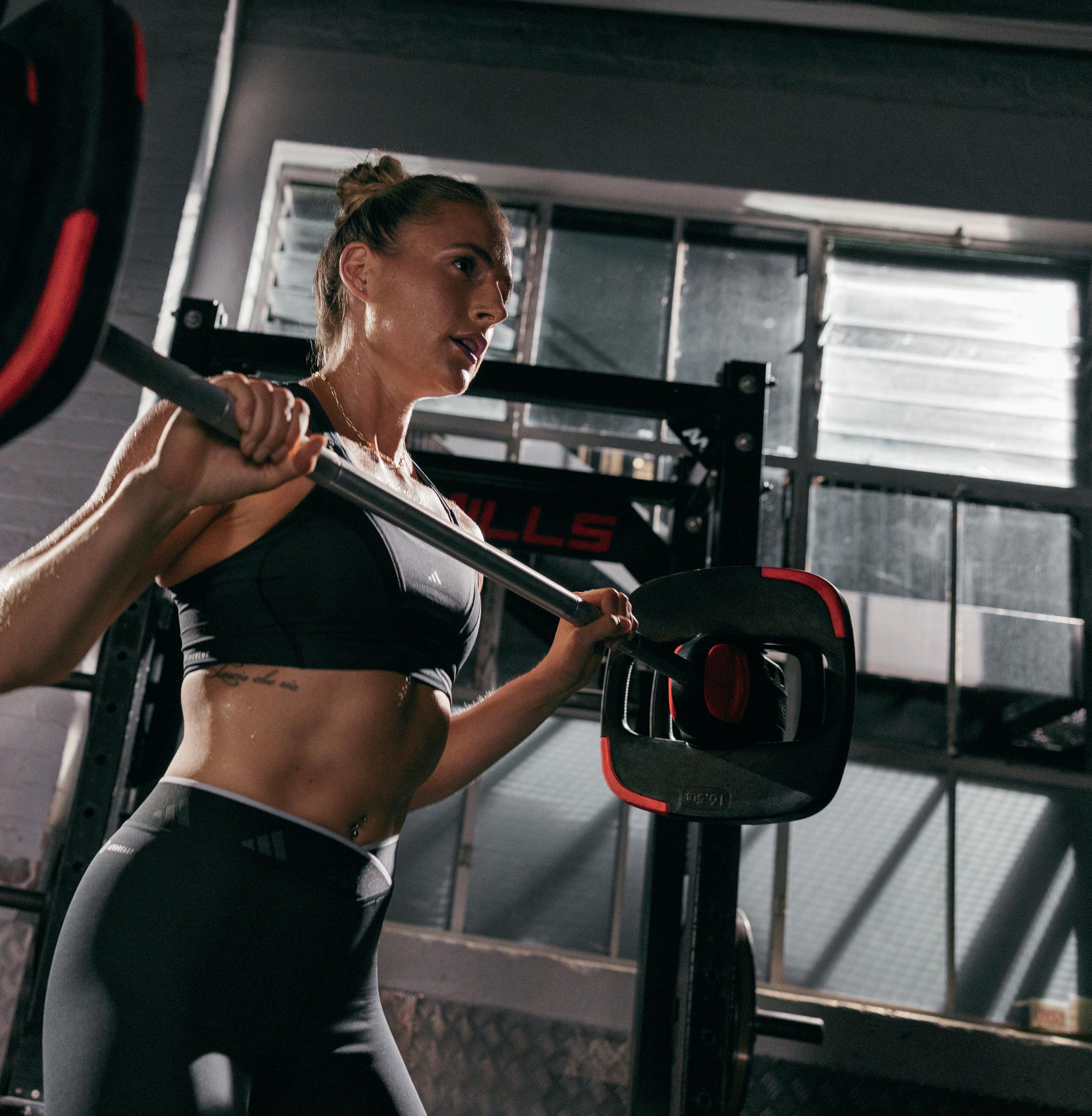 The rise in strength training has been further fuelled by influencer culture
The rise in strength training has been further fuelled by influencer culture
COCHRAN
PHOTO: LES MILLS / FINN
sectioned off from the club, they might need to book, it’s often fast-paced and there can be choreography involved, so it can feel like something that’s harder to get to grips with – and perhaps be a little intimidating.
The job for clubs is to set members up for success and give them proper support to get engaged with group exercise and reap the rewards.
I did some work with a Danish health club operator where we offered a number of class options to see which would be more effective in drawing new members into the club.
The first option was a live class in the club, led by an instructor. The second option was a live class on digital – again, led by an instructor – and then finally they were offered on-demand classes on an app for use at home.
We found that offering pre-recorded classes for use at home was a great way for members to learn the moves and build confidence, so they felt comfortable coming into the club and joining the group and this is definitely something I’d recommend operators consider adding to their onboarding process.
Another benefit of group exercise is that members don’t have to think too much – they can turn up and do what they’re told, in contrast
TAKEAWAYS
Generally speaking, health club operators now have a share of a customer, rather than owning their entire fitness experience
Consumers are either investing more in suburban clubs (often with their families) or taking a pay-asyou-go approach
On average, club membership lengths are trending shorter
PHOTO: LES MILLS / FINN COCHRAN
Members who added digital services to their club membership stayed longer than those who don’t
People are in a fixed position while strength training, meaning it’s one of the easier activities to film and what content creators tend to capture

Gymtimidation can be heightened in environments where everyone is lifting weights
Group exercise is always going to have a role to play. The benefits it brings in terms of retention and creating community are well-documented
If an operator knows they’re at capacity on strength equipment, they’re better off targeting prospects who want to use other areas of the club
One benefit of group exercise is that members don’t have to think too much – they can turn up and do what they’re told
OPINION 108 Issue 2 2024 ©Cybertrek 2024
Pre-recorded classes for use at home is a great way for members to learn the moves and build confidence
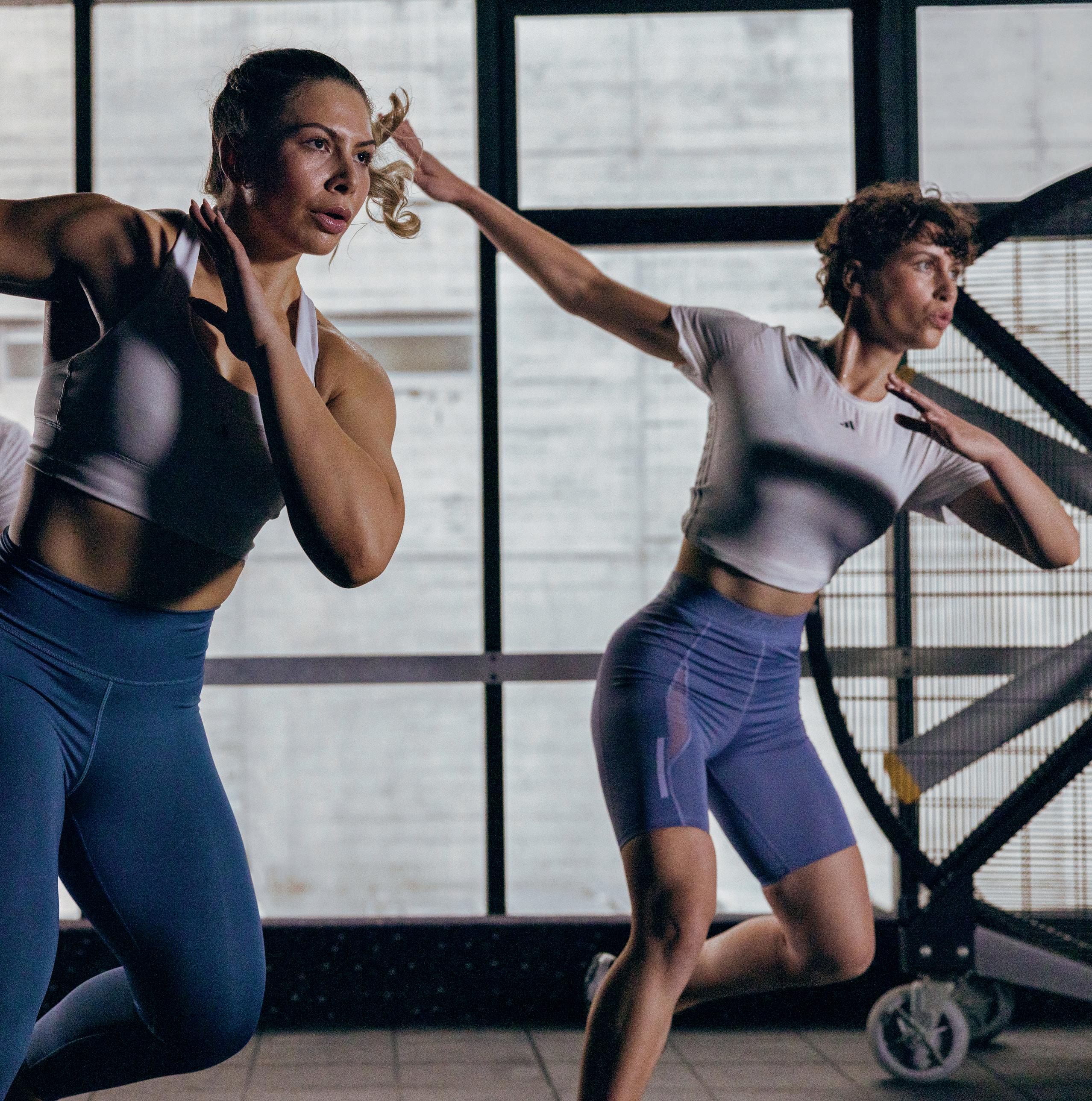
to self-directed workouts, which require a lot of decisions to be made. This all adds to the cognitive load, which can put some people off – especially on days when they simply can’t be bothered.
And of course, the timetabling element is dynamite for retention and exercise adherence. If someone always goes to a class at 6.00pm on a Monday, it becomes ingrained as a habit and becomes something they look forward to, but it also becomes part of them and what they do, so then people don’t ask them to do other things at that time because they know that 6.00pm on a Monday is when X does their class.
Our diaries are so hectic today that if a timeslot isn’t protected, then it quickly gets filled and exercise can easily fall by the wayside if we fail to make time for it.
What does the industry need to keep moving forward?
Sometimes we just need to take a hard look at ourselves. I know we're really good at selfpromoting – and we need to be. But we also need to be a bit more self-critical and ask searching questions around what we can do better.
I'm a public pessimist and I’ll always challenge the industry, purely because I want it to do better. We’re capable of so much more, and it’s not just a case of impact at any cost. We can do this while still being profitable and driving growth – it’s very much a win-win. The future’s bright, but it’s not going to come easy, so we need to raise our game and keep pushing forward. l
109 ©Cybertrek 2024 Issue 2 2024
Exercise classes can extend capacity when strength areas are full
Product innovation
Steph Eaves rounds up the latest health, fitness and wellness kit

Egym’s Open Mode extends access to its strength equipment, says Tanya Hall
Egym has introduced Open Mode on its Smart Strength machines, enabling them to be used as a replacement for traditional weights on the fitness floor, rather than solely as circuit-based machines. The new functionality opens up

“Our
Open
Mode makes personalisation possible across the entire fitness floor”
Tanya Hall
access to smart features such as automatic settings, training methods and smart weight profiles.
In Open Mode, members can work out on Egym Smart Strength equipment as a guest, without having to set up an account.
Beginners can work out with the guidance of the Egym Curve and training programmes, while advanced users can have a workout tailored to their needs.
Exercisers adjust repetitions, weights and training methods, while workout routines such as pyramid training or drop sets are automatically saved. A new feedback feature – the Egym Bar –is designed to motivate users during workouts. Workout analytics via
Dedicated recovery areas from Hyperice will raise the bar for operators, says Jim Huether
Hyperice has announced a partnership with Escape Fitness to create wellness areas within health club to deliver recovery. The areas will be equipped with Hyperice kit and will introduce
dedicated pods/stations and merchandise racks, designed and manufactured by Escape.
The MARS (Multi-Activity Resource Station) screen from Escape will deliver virtual coaching

● Percussion devices will be tethered to recovery stations
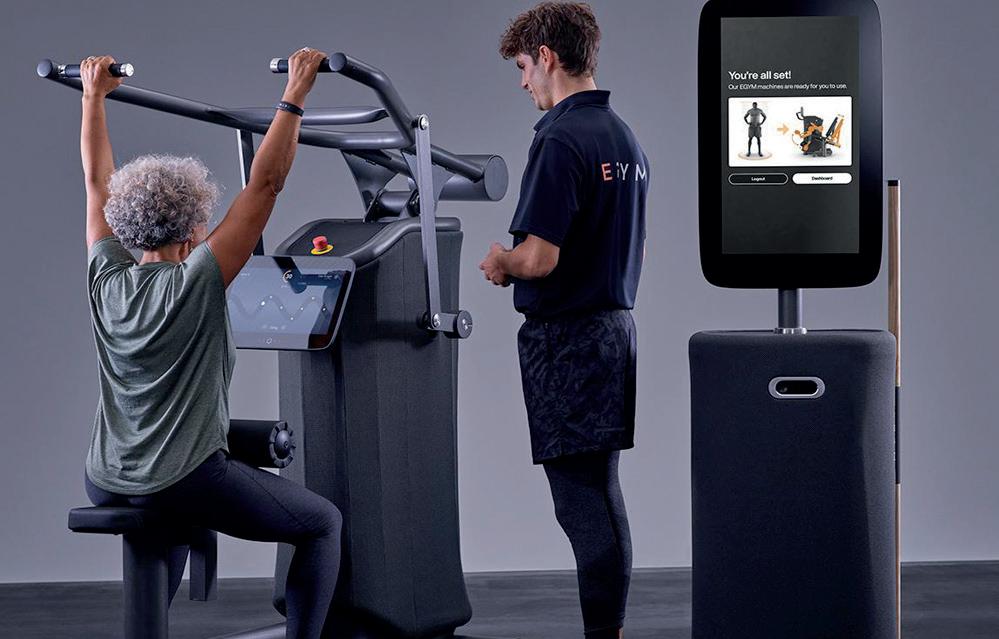
the Egym Fitness Hub, trainer app, or branded member app are also available.
Egym’s Tanya Hall says: “Our Open Mode makes personalisation possible across the entire fitness floor.”
fitness-kit.net keywords
Egym
“Today marks the start of an exciting partnership as we reshape wellness offerings within the fitness space”
Jim Huether
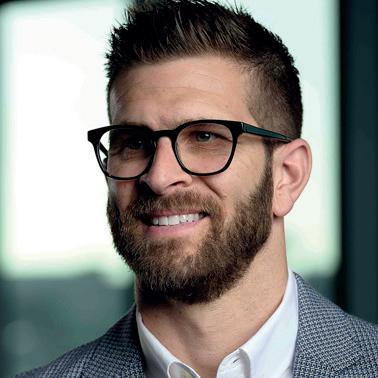
while the Hyperice Hypervolt 2 Pro percussion device will be tethered, via a flexible cable, to provide constant charging and prevent theft.
“Today marks the start of an exciting partnership,” says Jim Huether, CEO of Hyperice. “Our dedicated recovery areas are raising the bar for accessible warm up and recovery technology and education.”
fitness-kit.net keywords
Hyperice
FITNESS-KIT.NET
● Workouts are automatically saved
PHOTO: EGYM
PHOTO: EGYM
PHOTO: HYPERICE
PHOTO: HYPERICE
Form’s in-goggle coaching will help swimmers hone technique, says Eisenhard
Form has announced the launch of HeadCoach, in-goggle, real-time coaching for swimmers delivered via augmented reality (AR) display.
During and after a swim, HeadCoach provides swimmers with technique feedback using two metrics, Form Score and HeadCoach Skills. The first is a measurement of overall swim efficiency, defined by pace and stroke length, while HeadCoach Skills covers five areas that will help swimmers identify where to focus on improving efficiency: head roll, head pitch, set pacing, interval pacing and breathing time-to-neutral.
Swimmers can access tailored educational resources and video content in the app, while in the
For more insight, or to get in touch with the companies featured, visit www.fitness-kit.net and type in their keyword Form

“We’ve reinvented how athletes train in water by providing real-time data”
Dan Eisenhard
pool, swimmers can use the HeadCoach Skills mode in the goggles to select the area they want to focus on. Each skill comes with a gamified exercise, and swimmers can track their progress in the app.
“We’ve reinvented how athletes train in the water by providing

● Coaching covers five skill areas
swimmers with real-time data, says Dan Eisenhard, CEO of Form. “With HeadCoach, we’re taking that innovation one step further by giving swimmers access to a digital swim coach in their goggles.”
fitness-kit.net keywords
Slacklining will transform fitness in the UK, says Robert Kaeding
Gibbon Slacklines has officially launched in the UK, introducing two flagship products: the Giboard and the SlackRack.
Founded by Robert Kaeding in 2007, the company has been instrumental in popularising slacklining – similar to tightrope walking – around the world. The Giboard is a
balance board designed to challenge stability, strength, and coordination. The SlackRack is a free-standing frame designed for indoor slacklining practice.
Gibbon has also launched its SlackFit programmes. Kaeding says these programmes aim to bring fitness, therapy and fun to group exercise routines and

“Individuals are challenged to engage their stabilising muscles, improving balance, coordination and core strength”
Robert Keading

promise a new offering for venues and providers. The programmes comprise Energy, Core, and Strength offerings. They integrate slackline exercises with cardio intervals, targeted core engagement and muscle strengthening, for a holistic workout experience.
Kaeding says: “Individuals can improve their balance, coordination and core strength, while enhancing flexibility, agility and mental focus.”
fitness-kit.net keywords
Gibbon Slacklines
111 ©Cybertrek 2024 Issue 2 2024
● SlackRack is a free-standing frame for indoors
PHOTO: GIBBON SLACKLINES
PHOTO: GIBBON SLACKLINES
PHOTO: FORM / TAL ROBERTS
PHOTO:
FORM


















FIND A SUPPLIER CLICK HERE to search for a supplier on HCM’s Company Profiles Hub CLICK HERE to visit the HCM Handbook Company Profiles Tap into HCM ’s comprehensive supplier directory and profiles to get in touch with the industry’s leading suppliers of products and services to power your business





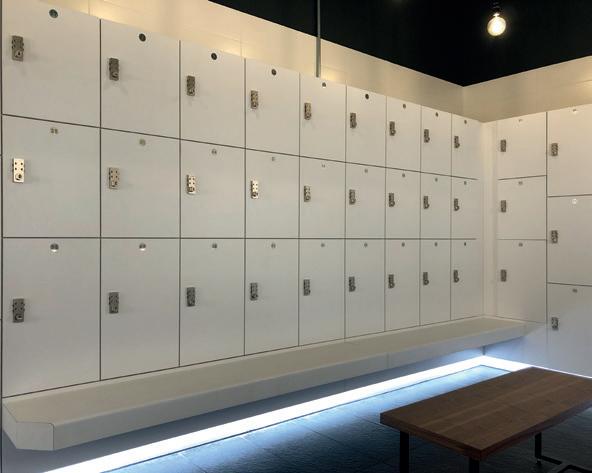



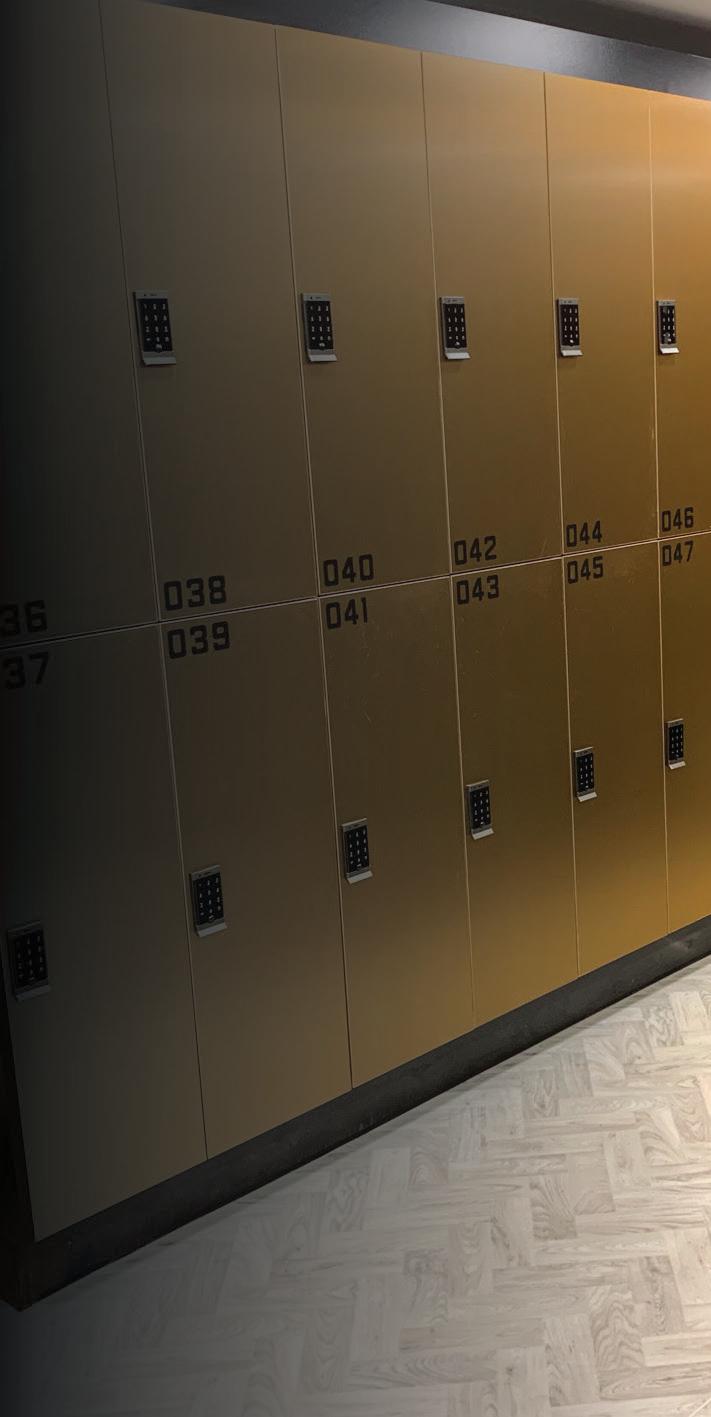


DIRECTORY FLOORING www.tvs-group.co.uk Contact us now: Office: +44 (0) 1706 260 220 Email: Sales@TVS-Group.co.uk Gym Flooring & Acoustic Solutions www.TVS-Group.co.uk www.safespacelockers.co.uk SUPPLIERS OF HIGH QUALITY CHANGING ROOM SOLUTIONS FOR THE FITNESS AND LEISURE INDUSTRY Contact us today for more information T: 0203 651 1500 E: info@safespacelockers.co.uk w: safespacelockers.co.uk » Lockers, benches, padlocks and cubicles » Changing room design » Consultation services » Locker servicing and maintenance » Financial solutions Official distributor of SUITMATE® Swimsuit Water Extractor in England, Scotland and Wales LOCKERS & INTERIORS Tel +44 (0)1803 555885 Email sales@crownsportslockers.co.uk www.crownsportslockers.co.uk LOCKERS & INTERIORS LOCKERS & INTERIORS www.fitlockers.co.uk FITLOCKERS Thinking beyond standard storage CONTACT US m k K Turnkey capability Styles and FITTINGS FOR EVERY setting CODE OR KEY SECURITY Sales@fitlockers.co.uk 01442 409600 www.fitlockers.co.uk Made in Britain janwilliams@leisuremedia.com To book your advert contact the sales team +44 (0)1462 431385 janwilliams@ leisuremedia.com www.regupol.com Fitness Flooring and Acoustic Flooring in Gyms www.regupol.com FUNCTIONAL TRAINING / FLOORING
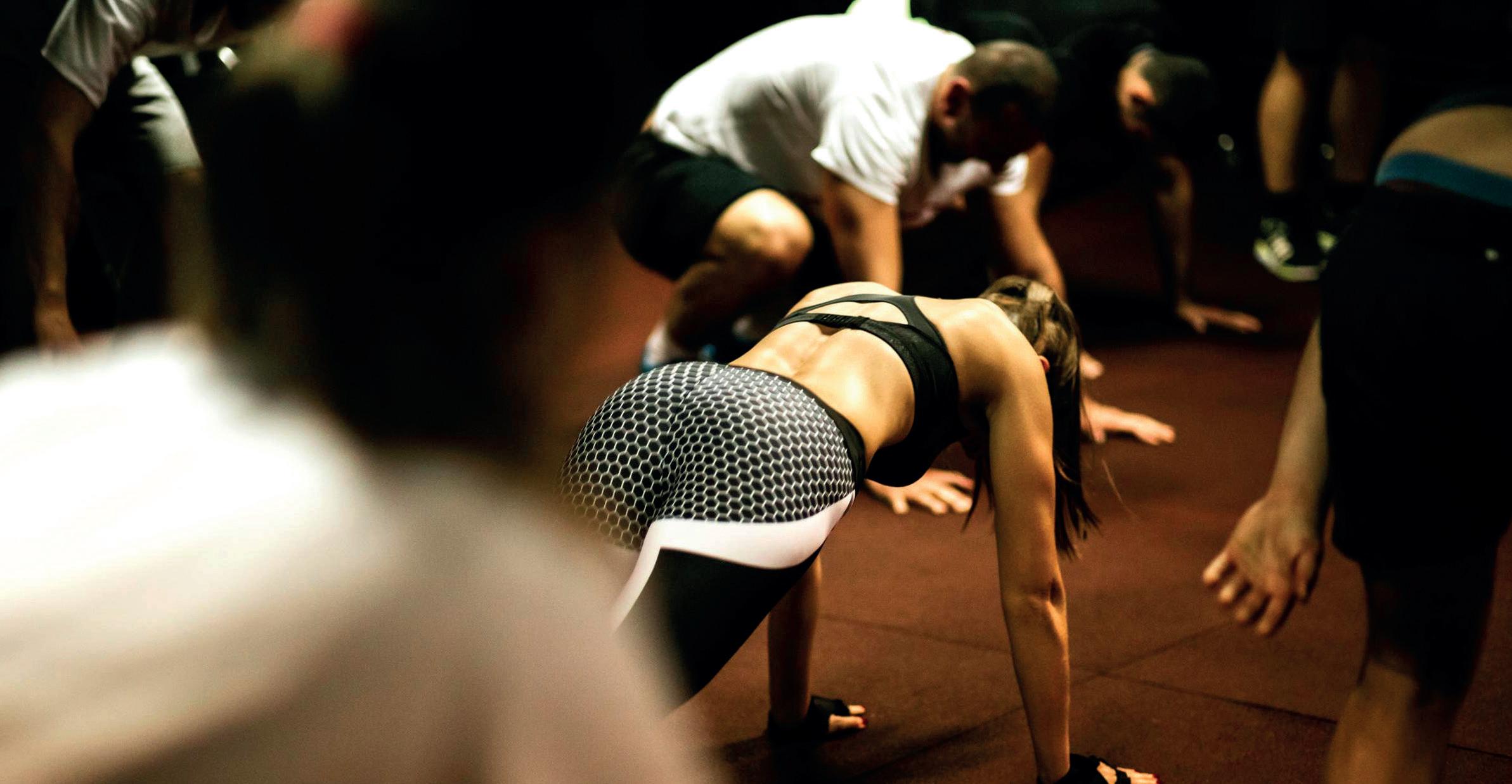
The power of HIIT
A new study from researchers at Yale shows HIIT can reverse nerve damage caused by Parkinson’s
According to a pilot study by Yale School of Medicine, exercise can not only slow down the neurodegeneration associated with Parkinson’s Disease, there is evidence it can also reverse the damage.
Parkinson’s is currently the most increasingly prevalent neurological disease and estimated to impact more than 12 million people worldwide by 2040. It currently has no cure – only medication to treat the symptoms – so this new study by Yale holds promise that exercise could help to mitigate the enormous personal and economic costs the disease presents.
Two previous clinical trials have shown that engaging in high-intensity exercise three times a week for six months is correlated with less severe motor symptoms. This new study, published in npj Parkinson’s Disease earlier this year, went one step further, using brain scans to find evidence of further health benefits.
Causes of Parkinson’s
Parkinson’s disease is caused by the misfolding of alpha synuclein protein, which accumulates within neurons and damages them. As the cells die off, the lack of dopamine creates the physical symptoms. The gradual progression, means that by the time patients are diagnosed they’ve usually lost more than half their dopamine-producing neurons.
The most common available medication replaces the dopamine, which alleviates symptoms but doesn’t prevent the ongoing neurodegeneration. Longterm use can also cause undesirable side effects, such as uncontrolled excessive movements.
Where we would have expected to see a decline in the neuromelanin signals, we saw an increase in nine out of ten people
HIIT has been shown to preserve the dopamineproducing neurons, which are the brain cells most vulnerable to destruction in patients with the disease.
Proof of concept
Yale’s proof-of-concept study involved 10 patients who had been diagnosed for less than four years and hadn’t lost all their dopamine-producing neurons.
They received MRI and PET scans to measure the amount of neuromelanin found in dopamine-producing neurons and the protein dopamine transporter (DAT) which helps the neurons maintain dopamine levels.
After six months of HIIT three times a week, the scans were repeated and the brain imaging showed a significant increase in both the neuromelanin and DAT signals. Researchers say this suggests HIIT not only slowed down the neurodegenerative process, but that it also helped the dopaminergic system grow healthier.
“Where we would have expected to see a decline in the DAT and neuromelanin signals, we saw an increase,” says Professor Bart de Laat, the study’s first author. “We had hoped to see that the neurodegeneration wouldn’t progress as quickly or that it would stop temporarily, but instead we saw an increase in nine out of 10 people. That was remarkable.”
l More: www.hcmmag.com/Parkinsons
114 Issue 2 2024 ©Cybertrek 2024
RESEARCH
Research shows HIIT can roll back the damage of Parkinson’s disease
PHOTO: SHUTTERSTOCK / SHEVTSOVY


THE MOST INTENSE UPPER BODY CARDIO WORKOUT Skillup™ Patented design The only upper body ergometer that features the unique Multidrive Technology™ for switching between cardio and power training modes in one workout. In addition to aerobic workout, the magnetic resistance increases intensity for power-building exercises. Superior results faster Discover more: technogym.com/hcm PLAY VIDEO















































































































































































































































































































































































 Orangetheory works hard to build community
Orangetheory works hard to build community












































































 Colin Waggett CEO
Colin Waggett CEO

 PHOTO: LYNDONYEOMANSLLP
PHOTO: LYNDONYEOMANSLLP




























 >>> David Lloyd Leisure SWOT
>>> David Lloyd Leisure SWOT


 >>> JD Gyms SWOT
>>> JD Gyms SWOT

















































































































 Tara Dillon CIMSPA
Tara Dillon CIMSPA









 Rob Johnson
Rob Johnson
















 The rise in strength training has been further fuelled by influencer culture
The rise in strength training has been further fuelled by influencer culture











































